When is the best time to visit India?

Dec 13, 2023 • 7 min read
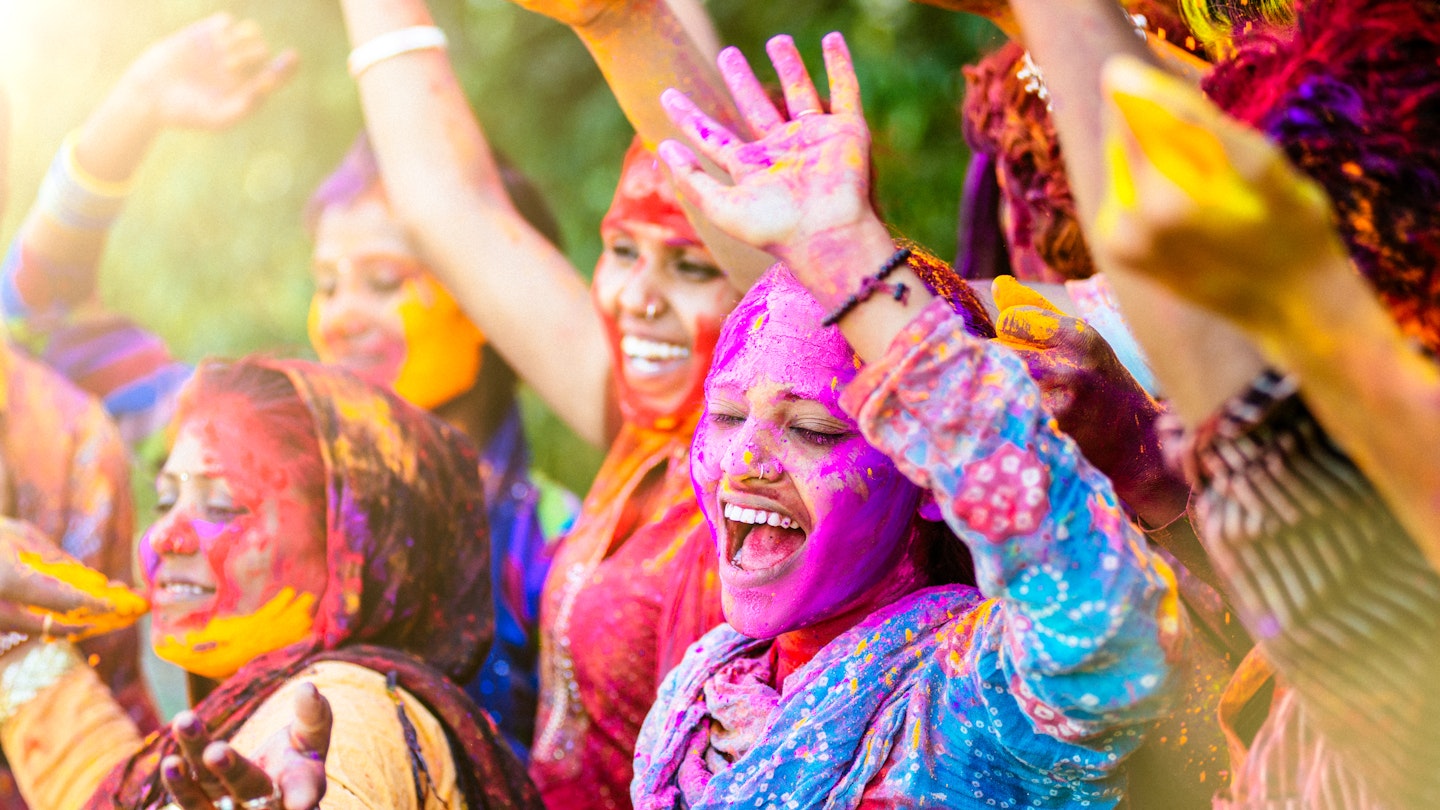
Whether you’re looking for the best festivals, to hit the beach, or trek between hill stations, let us help you plan your trip © ferrantraite / Getty Images
India is a country that’s almost a continent. From the sky-high peaks of the Himalayas to the waterlogged jungles of Kerala and the dry-as-a-bone deserts of Gujarat and Rajasthan , this enormous nation covers an astonishing variety of terrain. There’s always somewhere worth visiting no matter what the weather is doing.
The northern hemisphere winter – from December to March – is the optimum time to visit the vibrant cities and historic temples and forts of north India , while the rainy monsoon period from June to September is peak season in the dry mountains of Ladakh .
However, even at the height of the rainy season, there are plenty of good reasons to visit this remarkable nation – not least the festival calendar, which is packed year-round. Here’s our guide to the best times to come to India .


December to March is best for beach days, tiger safaris and temple trips
The peak season for tourism in India coincides with dry skies and warm but not baking temperatures in the plains – in other words, perfect traveling weather. The balmy, sunny days are ideal for visiting India’s teeming cities, and most of the country is ripe for exploration, though it can be frosty in the foothills of the Himalayas.
Even in the steamy south, humidity hovers at manageable levels and temperatures dip overnight, making it easier to sleep, though this is also the time for peak prices almost everywhere. Another hassle is the morning fog, which can disrupt air travel and other forms of transport in the northern plains.
December to March is also the sweet spot for lowland adventures. National parks are drier, there’s less greenery for wildlife to hide behind, and animals are more active for longer thanks to the lower temperatures. For a good chance of tiger sightings, head to Kanha , Bandhavgarh , and other national parks in the central plains.
In the hills, it’s a slightly different story. While there’s an undeniable magic to seeing Shimla dusted with snow, many hotels shut their doors for the winter, and mountain trails and roads over high passes become obstructed, including the main roads to Ladakh (though some hardy travelers still fly in for winter treks). A handful of hill towns in Kashmir , Himachal Pradesh , and Uttarakhand stay open for skiing and other winter sports.
December is a big time for Hindu marriage ceremonies – look out for baraat (bridegroom’s processions) featuring a white horse, a nervous groom, and an ear-splitting marching band. Christian communities in Goa and parts of Kerala and the Northeast States hang up decorations in the lead-up to Christmas, and Christmas Day is celebrated with feasting and fireworks.

In January, all eyes are on Delhi for the pomp and circumstance of Republic Day on January 26 (don’t miss the army and police motorcycle stunt teams). The Hindu festival of Sankranti is celebrated in different ways across India, from special celebrations to honor cows in South India to mass kite-flying in Gujarat. (If you'd like to participate in kite-flying, you can help to avoid causing harm to birds and other wildlife by choosing a kite with a plain cotton – not synthetic – string and by avoiding early morning and evening when the birds are likely to be flying in great numbers.)
If you come in February, head to Jaipur for the cultured Jaipur Literature Festival , or Agra for Taj Mahotsav , a 10-day carnival of culture, cuisine and crafts featuring 400 artisans from all over India (and enough regional food to induce a curry coma). Alternatively, make for the hills and join Buddhist communities embracing Losar, the Tibetan New Year.
Other red-letter days on the calendar include the Hindu festival of Vasant Panchami in January or February, marking the arrival of spring. In February or March, you can attend Goa’s lively carnival; honor Lord Shiva at celebrations across the country for Maha Shivaratri; or join in the joyful mayhem as mountains of rainbow-colored powder are thrown around for the festival of Holi.
June to November is the best time to hit the Himalayas
India’s shoulder season means different things depending on where you go in the country. The plains are drenched by the monsoon rains from June to September, and Goa’s beach resorts become ghost towns, but backpackers and trekkers flood into the mountains, filling Ladakh’s lodges, tented camps, and yoga retreats.
This is the prime time for treks on India’s high-altitude trails, but roads and paths through the foothills turn into torrents, national park trails close, and views disappear behind swirling clouds. That might give an impression of a country besieged by rain, but it doesn’t rain all day every day; there’s still plenty to see and do, with bargain prices for accommodations and tours.
As the rains clear from September, tourism picks up in the plains and the foothills, but Ladakh closes down for the season, and public buses between Leh and Manali stop running. October and November are great times to visit almost everywhere else in India – prices remain below the peak, skies are clear and the trekking season gets underway in the foothills. This is also a great month to visit desert areas such as Rajasthan, which can be surprisingly green.

In June or July, Rath Yatra sees effigies of Lord Jagannath – Vishnu as Lord of the Universe – hauled through the streets on vast, colorful chariots, most famously in Puri in Odisha (Orissa). Buddhist festivals fill the gompas of Ladakh – Hemis Tsechu is a glorious spectacle, with costumed dances and the unfurling of a giant thangka (Buddhist painting) at Hemis Gompa .
August is jam-packed with festival action. Kerala’s exhilarating boat races take place on the second Sunday of August and there are patriotic flag-hoisting ceremonies and parades in Delhi on August 15 to celebrate India’s independence. Falling in August or September, Ganesh Chaturthi sees the ritual immersion of thousands of colorful idols of the elephant-headed god in Mumbai .
There’s more action in October and November, as Hindus honor Durga, the fearsome form of the mother goddess, most famously at Navratri and Durga Puja (celebrated enthusiastically in Kolkata and West Bengal). Many areas throw lavish celebrations for Dussehra, celebrating the victory of Hindu god Rama over demon-king Ravana and the triumph of good over evil (festivities are particularly colorful in Kullu and Mysuru ).
This is also the season for Diwali (Deepavali) , which brings fireworks and twinkling lights to towns and villages across India, and the Camel Fair in Pushkar , which attracts 200,000 people and 50,000 camels, horses, and cattle. Sikhs celebrate Nanak Jayanti – the birthday of Guru Nanak, founder of Sikhism – with prayers, kirtan (devotional singing), and processions, especially in Punjab and Haryana .
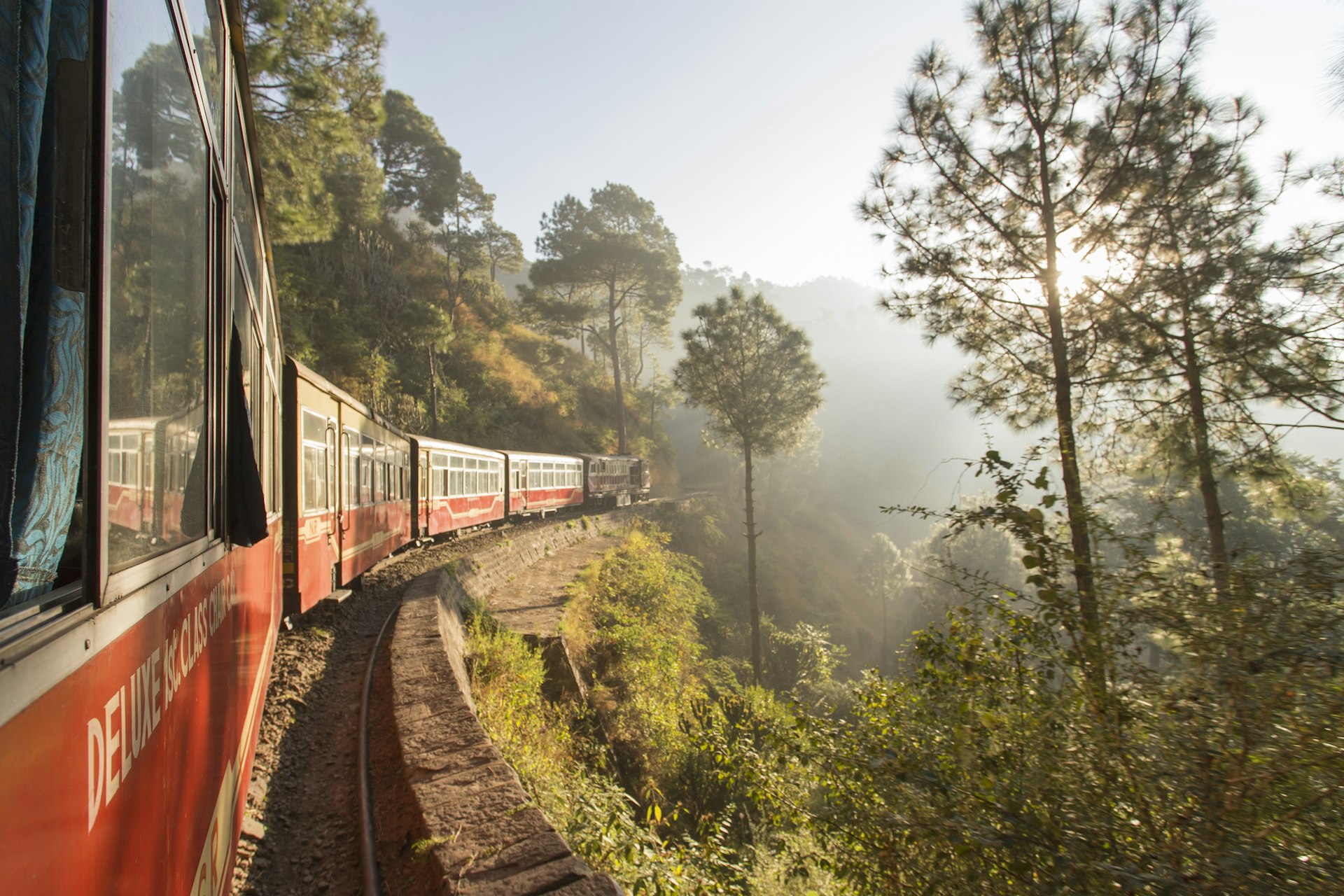
April to June is the best time to avoid crowds
India’s low season sees temperatures soaring to almost unbearable levels. By May, the lowlands feel like an oven, and locals wait eagerly for the cooling effect of the monsoon. Cities can be uncomfortably hot – sensible travelers head to the hill stations or stay close to the water on the coast. The Northeast is wet, but it’s peak season for visiting Sikkim and highland areas of West Bengal , including Darjeeling .
If you can handle the heat, tourists are thinner on the ground, making visits to popular sights such as Delhi’s Red Fort less hectic, and this is a great time for treks in the cooler foothills of the Himalayas. Accommodation prices are also low, though many beachside hotels in Goa close completely from May to September. If you happen to be in Maharashtra , you’re in for a treat as tasty Alphonso mangoes come into season.
Rain doesn’t halt the festival calendar. Mahavir Jayanti commemorates the birth of Jainism’s 24th and most important tirthankar (teacher and enlightened being), while Sikhs celebrate Vaisakhi (the solar new year) in the middle of April. Rama Navami is another big date as Hindus celebrate Rama's birth with processions and enactments of scenes from the Ramayana (one of Hinduism’s most sacred texts).
The Muslim holy month of Ramadan runs from approximately March 10 to April 9 in 2024. Some Muslim-owned businesses close during the day, and people fast from sunrise to sunset. The breaking of the fast at Eid al-Fitr is marked by feasting, and Muslim women adorn their arms with mehndi (henna designs). The birthday of Buddha (Buddha Jayanti) is celebrated with gusto in Bodhgaya and Tibetan Buddhist areas.
Understanding India’s festival calendar
While secular festivals in India follow the Gregorian calendar, most religious festivals follow lunar calendars, so the dates change every year. Muslim celebrations move forward by 11 days every year relative to the Gregorian calendar, and Hindu, Buddhist, and Jain festivals can fall in different months from year to year. Always check the dates of festivals before planning a trip – the Indian government has a calendar of the year's gazetted government holidays .
This article was first published April 2021 and updated December 2023
Explore related stories
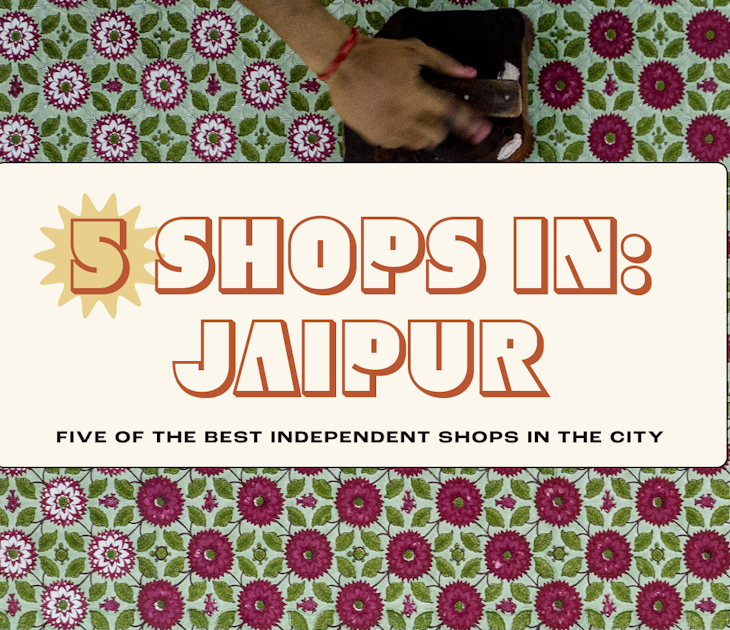
Mar 29, 2024 • 6 min read
The roads of Jaipur are jam-packed with hundreds of shops. Here's our guide to 5 of the best.

Feb 22, 2024 • 5 min read
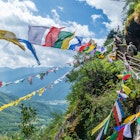
Jan 28, 2024 • 7 min read

Jan 11, 2024 • 4 min read

Jan 5, 2024 • 20 min read

Jan 2, 2024 • 8 min read

Dec 27, 2023 • 8 min read

Dec 20, 2023 • 11 min read

Dec 15, 2023 • 14 min read
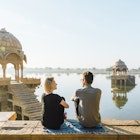
Dec 11, 2023 • 14 min read
- Search Please fill out this field.
- Manage Your Subscription
- Give a Gift Subscription
- Sweepstakes
- Travel Tips
The Best Times to Visit India for Good Weather, Lower Rates, and Festivals
Tips from an expert to make the most of your visit.
:max_bytes(150000):strip_icc():format(webp)/IMG_9924-Meagan-Drillinger-2000-b5b1ef20b8b940e397c81373504ecbed.jpg)
India is a massive country, home to more than 1 billion people. Complex, intricate, overwhelming, and beautiful, there are many reasons to visit the South Asia destination, and many things to consider before booking a fabulous trip. "India is not only about forts, palaces, and temples; it's about five-star deluxe properties , delicious food, and the human experience," says Marion Miller, an India travel specialist with Micato Safaris and a Travel + Leisure A-List Advisor . That said, Miller also wants travelers to know that there are better — and worse — times to arrive. "India is not a year-round destination," she says. "Within the timeframe that you travel to India, there are also optimal times; it just depends on where you want to go." Read on to learn about the best times to visit India, and which stretches of the year to avoid. Related : Marion Miller's 14-day Trip Around India
Gautier Houba/Travel + Leisure
Best Times to Visit India for Smaller Crowds
With such a tremendous number of residents, plus nearly 20 million tourists per year, you simply have to expect crowds in India year-round. That said, there are times of day when crowds may be smaller. "When you see [monuments like] the Taj Mahal, visit in the morning. Then it is very calm," says Miller. "We usually go very early in the morning, around 5:30 a.m., so that we are the first in line. Then it is less crowded and you can get those famous photos. There are crowds [in India]; you can't really get away from that."
Best Times to Visit India for Good Weather
Determining the best weather is dependent on where in India you want to visit. The country is the seventh largest in the world in terms of landmass, so the weather can be dramatically different from one part to another. "Northern India has its seasons, just like Europe and the U.S.," says Miller. "I love October, because temperatures are lovely; it's between 75 and 85 degrees, with a slight nip in the air, something that says fall is coming." November is the same as October, except temperatures dip a little bit more, between 70 and 80 degrees. In the northern part of India, you may even need a light jacket by December. Miller says February and March are lovely, too, as spring begins and the flowers start to bloom. "The south is tropical," she said. "The coastline, like Chennai, Goa, and Bangalore, will have more humid temperatures, and there is not much difference in temperature there during the year."
Best Times to Visit India for Lower Prices
Between mid-April and mid-September, India has its monsoon season, and temperatures soar up to nearly 110 degrees. If you are looking for travel deals, this would be the time, but it's also one of the least favorable stretches during which to visit; the extreme heat and torrential rains often deter travelers.
Best Times to Visit India to See Tigers
James Warwick/Getty Images
A caveat to the above: monsoon season is one of the best times to visit India if you want to spot the country's majestic resident tigers. "Tigers are very elusive creatures," says Miller. "They are beautiful animals, and they are easily seen when it is hot because they are hunting for water. I had an avid photographer visit in April last year and he saw 26 tigers."
Related : Why India Should Be Your Next Safari Destination
Best Times to Visit India for Festivals
CR Shelare/Getty Images
When it comes to festivals in India, there is never a wrong time, as the country always has a reason to celebrate. Two of the largest festivals in India are Diwali and Holi. The holidays run on a lunar calendar, so the dates change every year, but Diwali is typically in the winter and Holi is typically in the spring. "Diwali is the Festival of Light," says Miller. "It's a lot of lights, people give each other gifts, and it's also a time where they shoot lots of fireworks into the sky." Holi is the festival that welcomes spring. It is a festival of colors, where anyone and everyone throws colorful dye at each other, filling the air, their clothing, faces, and hair with bright, springtime hues. "There is also Dussehra [usually in October], which is the festival of good prevailing over evil," Miller says. "Another festival called Raksha Bandhan [usually in August] celebrates the connection between siblings. Plus there are so many gods and goddesses, and they are all being celebrated."
Worst Times to Visit India
As to be expected, the worst time to visit India is also the best time to get deals, but you have to consider if those deals are worth the extreme weather. Between April and September, temperatures are extraordinarily high, and monsoons make traveling quite difficult.
Change location
- UK / International
- Call toll-free from 9am EDT 617-223-4521 617-223-4195 or
- REQUEST A QUOTE
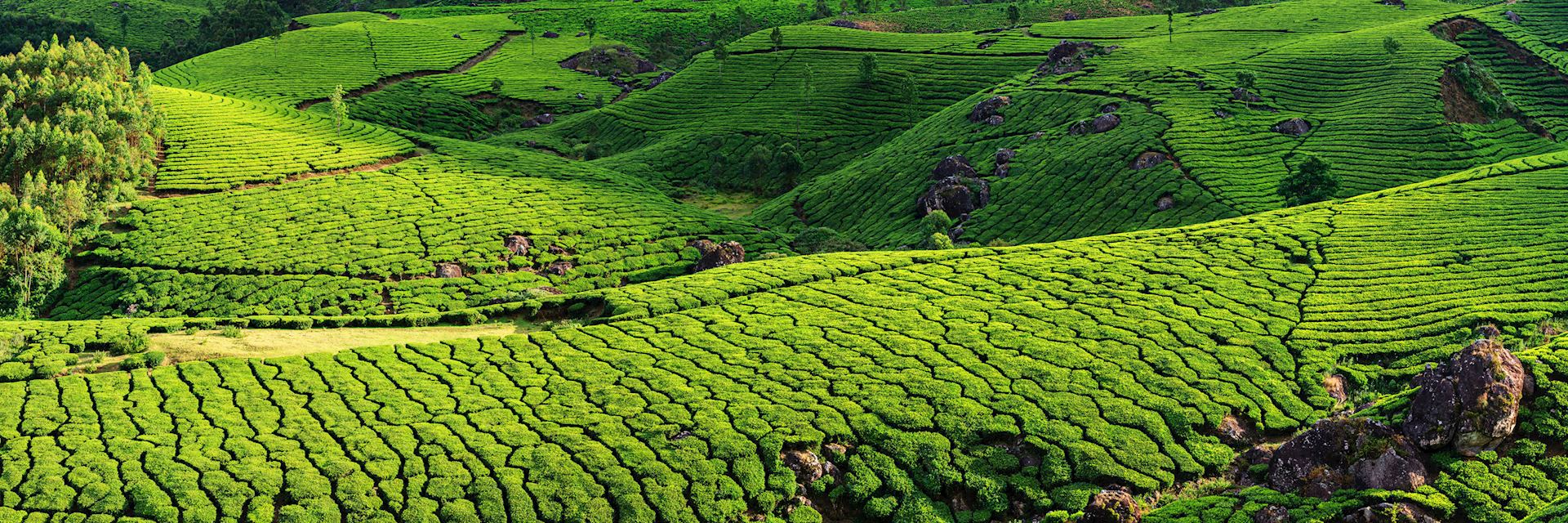
When is the best time to visit India?
- Month-by-month
The best time to visit India is between October and March, when the weather is more likely to be warm, sunny, and dry.
During this time, the north offers clear blue skies. However, December and January are much cooler, with potential fog, while the higher Himalaya can be very cold, but with clearer mountain views. Increasing temperatures in April and May can result in excellent value trips, but you can expect high humidity and thunderstorms.
Ladakh, located in the far north, is most accessible between June and September, when the rest of the country experiences monsoon season.
The best time to visit India’s southern states is from November onward, once the monsoon has ended.
- Make an inquiry
- Request a brochure
Month-by-month guide for traveling in India
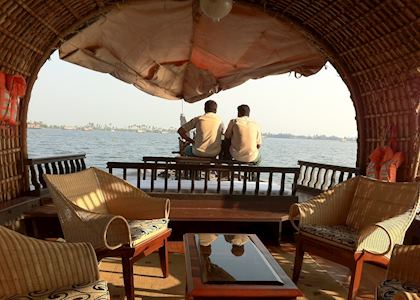
Visiting India in January
Cold nights in Rajasthan and the north clear for warm, dry days, making January a great option for sightseeing; although fog can linger in the mornings. Southern states are popular as a warm, sunny escape; properties in Kerala do fill up quickly though. Some of the best mountain views can be experienced in the Himalaya, but you need to wrap up warm.

Visiting India in February
As fog and mist clears in the northern states, this is one of the best months to travel as nearly the whole country is warm and sunny. Hotels do get booked up well in advance, so it's important to plan ahead.

Visiting India in March
A very popular month to travel for both great weather and the popular Holi festival . The colorful paint-throwing event is great fun as everyone celebrates the victory of good over evil. The festival's date changes each year.
Events & Festivals
- Holi Festival (early March): The well known paint-throwing festival is colorful, noisy and good fun; just remember to take clothes which you don't mind being covered in paint. Read more about festivals in India.
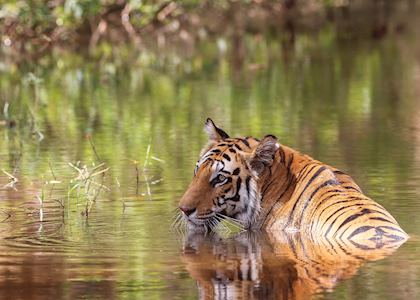
Visiting India in April
Temperatures increase country-wide, making April one of the best months for seeing wildlife in the central parks. Water is limited, so sightings at watering holes are frequent. As daytime temperatures are very high, we'd recommend excursions in the morning and evenings only. Hotels are very busy over Easter, so plan well in advance if your travel dates aren’t flexible.

Visiting India in May
Hotels offer great value during May, but we do warn of the very high temperatures of up to 113°F and the humidity, which can be very uncomfortable. Some camps close, as does desert accommodation. Wildlife sightings continue to be at their best early in the morning and early evening.

Visiting India in June
The stunning region of Ladakh is accessible from June and offers a complete contrast to the rest of the country. Days are sunny and clear, but you will need layers for warmth. The rest of the country is awaiting the monsoon; humidity is high and thunderstorms frequent, especially in the Himalaya and southern states.

Visiting India in July
July and August offer ideal weather and incredible views across Ladakh , whilst elsewhere in India, celebrations are underway due to the arrival of the much-needed monsoon rains.

Visiting India in August
The continuing rains and higher water levels mean that August and September are the best months for cruising along the Ganges , between the holy city of Varanasi and Patna. Departures get booked well in advance so plan ahead.

Visiting India in September
September can offer fantastic value in Rajasthan as it marks the end of the monsoon, although weather is still mixed in the surrounding regions. Ladakh’s season comes to a close but travel is still possible. Trips to the southern states and Himalaya is not advised until the rains clear.
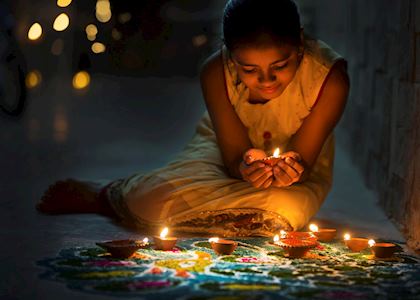
Visiting India in October
Marking the start of the peak travel season, October sees the rains end in the north and the warm, sunny days return. Unpredictable showers can remain in the south, but these help create the beautiful verdant scenery. Mahatma Gandhi’s birthday is celebrated on the 2nd October and is a national holiday.
- Diwali (October or November): The ancient Hindu festival of lights is India's largest festival. Candles are lit and dazzling firework displays illuminate the sky to celebrate, making this a magical time to visit the country. Find out more about India's festivals.

Visiting India in November
One of the best months to travel anywhere in India, November offers wonderful weather as well as multiple festivals . The Pushkar Camel Fair in Rajasthan is a unique event to witness, while Diwali, the festival of light (which sometimes takes place in October), encourages beautiful candle displays, buildings covered in lights and celebratory fireworks across much of the country
- Camel fair (November): Around 50,000 camels and goats, along with their owners and thousands of spectators, descend on Pushkar, Rajasthan each November for the Camel Fair — a truly incredible sight.

Visiting India in December
December is ideal for a trip to the south of India — it is beautifully sunny and warm, making it a very popular option for Christmas, but it's important to plan well in advance to secure the best accommodations. The north has lovely daytime temperatures, but mornings and evenings are much cooler and sometimes foggy. Flight prices are among their highest in December so book early if you can.
India Climate Guide
Why travel with audley.
- 100% tailor-made tours
- Fully protected travel
- Established for over 25 years
- 98% of our clients would recommend us

Travel advice
Practical tips for traveling to India, from social protocols to guidance on money matters, with a link to the latest US State Department travel advice.

Request our brochure
Covering all seven continents, The World Your Way shows you how you can see the world with us. It features trip ideas from our specialists alongside hand-picked stays and experiences, and introduces our approach to creating meaningful travel experiences.
Trip ideas and travel guides for exploring India

India's Golden Triangle & tigers
10 days from $3,050pp
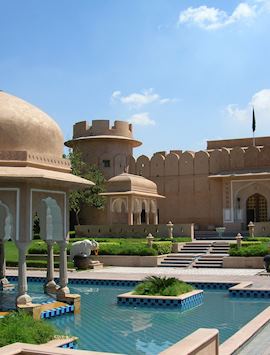
Luxurious Rajasthan
12 days from $10,750pp

What to do in India: our highlights guide
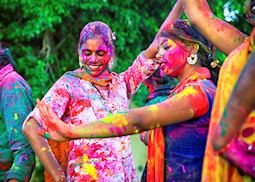
An expert guide to experiencing festivals in India
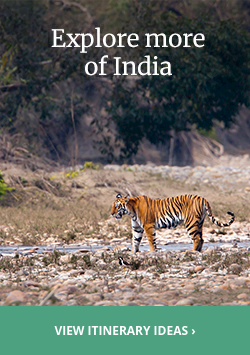
Monsoon in India
Your Essential Packing List
Things to Buy Before You Go
What to Pack for Monsoon
The Best India Guidebooks
How to Save on Your India Trip
The Top Destinations in India
The Most Iconic Sights in India
Which Region Is Right for You?
India's Top Historical Destinations
Romantic Indian Destinations
India's Top Hill Stations
India's Top National Parks
The Best Beaches in India
India's Best Backpacker Spots
India's Most Spiritual Destinations
The Best Luxury Spas in India
India Off the Beaten Path
India for Adventure Travelers
Where to Experience Rural India
The Top Things to Do in India
Palaces & Forts in India
India's Best Surfing Beaches
Volunteer on a Budget in India
7 Cool Sound & Light Shows
India's Most Popular Festivals
India's Best Bike Tours
See India by Motorcycle
India's Top Tribal Tours
Offbeat Tours to Take in India
India's Best Homestays
Palace Hotels in India
India's Coolest Treehouse Hotels
Top Wildlife & Jungle Lodges
The Best Hostels in India
Best Budget Hotels in India
Transport in India: An Overview
India's Major Airports
India's Best Airlines
Domestic Airlines in India
Hiring a Car & Driver in India
Your Intro to Indian Railways
Travel Classes on Indian Trains
How to Reserve a Train Ticket
How to Find & Board Your Train
Tips for Train Travel in India
India's Scenic Toy Trains
12 Indian Etiquette Don'ts
The Top 10 Indian Stereotypes
Tipping in India
What Does the Head Shake Mean?
9 Challenges You'll Face in India
How to Avoid Culture Shock
Top 5 Monsoon Health Concerns
Voltage Information for India
How to Use Your Cell Phone
How to Say Hello in Hindi
Often Misunderstood Hindi Terms
Hindi Language Books
Most Common Indian Scams
How to Handle Begging in India
How to Spot Fake Indian Currency
What to Buy in India
How to Buy a Sari in India
How to Bargain at Indian Markets
How to Get an Indian Visa
India's Visa Types, Explained
Applying for an E-Visa
India's Climate & Seasons
A Guide to Climate, Weather, and Seasonality in India
:max_bytes(150000):strip_icc():format(webp)/10947453_10153084623948270_8191342691038933499_o-591d1e8d3df78cf5fa731909.jpg)
Himanshu Khagta/Getty Images
The weather in India varies dramatically. While the southern tip of India is being lashed by tropical monsoon rain , the north will be blanketed in thick snow. Therefore, the best time to travel to India depends greatly on the destinations to be visited and the climate experienced there.
Based on temperature and rainfall, the Indian Meteorological Service has classified the country into an incredible seven different climatic regions. These are the Himalayas, Assam and West Bengal, the Indo-Gangetic Plain/North Indian Plain (a huge section of north-central India), the Western Ghats and coast (south-western India), the Deccan Plateau (south-central India), and the Eastern Ghats and coast. In general, the north of India is cooler, the center is hot and dry, and the south has a tropical climate.
Indian weather itself is divided into three distinct seasons—winter, summer, and the monsoon . Generally, the best time to visit India is during the winter, when the weather in most places is relatively cool and pleasant.
Summer (March to May)
India starts heating up from around the end of February, first in the northern plains and then the rest of the country. By April, many places experience daily temperatures exceeding 40 C (105 F). It stays cooler in the southern parts of the country, with temperatures reaching around 35 C (95 F), although it’s a lot more humid. In late May, signs of the approaching monsoon start appearing. Humidity levels build, and there are thunderstorms and dust storms.
The most tiring thing about summer in India is that the heat is so relentless. Day after day the weather doesn’t change—it’s always extremely hot, sunny, and dry.
Where to Visit During the Summer Season
While the summer can be very uncomfortable and draining in most parts of India, it’s the perfect time for visiting the mountains and hill stations. The air there is fresh and soothing. Himachal Pradesh and Uttarakhand are popular destinations. If you're into seeing wildlife and spotting tigers in their natural environment, the summer is also the best time to visit India's national parks as the animals all come out of the thickets in search for water in the heat.
Do keep in mind that Indian summer school holidays extend from May to mid-June, making this peak travel time to India's cooler destinations . Beach destinations such as Goa are also busy.
Monsoon (June to October)
India actually has two monsoons –- the southwest monsoon and the northeast monsoon. The southwest monsoon, which is the main monsoon, comes in from the sea and starts making its way up India’s west coast in early June. By mid-July, most of the country is covered in rain. This gradually starts clearing from most places in northwest India by October. October is a peak month in the Indian festival season and many Indian families travel during Diwali holidays, pushing up demand for transport and accommodations.
The northeast monsoon affects India’s east coast during November and December. It’s a short but intense monsoon. The states of Tamil Nadu , Karnataka, and Kerala receive most of their rainfall from the northeast monsoon, while the rest of the country receives most of its rainfall from the southwest monsoon.
The monsoon doesn’t appear all at once. Its onset is characterized by intermittent thunderstorms and rain over a number of days, eventually culminating in a huge and lengthy downpour. India during the monsoon doesn't receive rain all the time, although it usually rains for a heavy period every day, followed by pleasant sunshine. The rain brings some respite from the searing heat. Conditions become very humid and muddy though, while still remaining quite hot.
The monsoon, while welcomed by farmers, can be an extremely challenging time in India. It produces widespread sickness , destruction and flooding. Frustratingly, the rain also appears out of nowhere. It can be a beautiful clear day one minute, and the next it’s pouring.
Where to Visit During the Monsoon Season
It’s difficult to travel throughout most of India during monsoon time as the rain often disrupts transport services. However, it’s the best time to get an Ayurvedic treatment in Kerala and visit high altitude places such as Leh and Ladakh and the Spiti Valley in the far north. You'll get heavily discounted accommodations in beach locations such as Goa.
Winter (November to February)
The disappearance of the monsoon marks the start of clear sunny skies, as well as the start of the tourist season, for most of India. December and January are the busiest months. Daytime winter temperatures are comfortable, although often quite chilly at night. In the south, it never gets cold. This is in complete contrast to the freezing temperatures experienced in India’s far north, around the Himalaya region.
Where to Visit During the Winter Season
Winter is the best time to hit the beach. India's far south (Karnataka, Tamil Nadu, and Kerala) is also best enjoyed in winter, with December to February being the only really comfortable months to travel there. The rest of the time it’s either too hot and humid, or wet. It's also a good idea to travel to the desert state of Rajasthan during the winter, to avoid the searing summer temperatures. Unless you want to go skiing (which is possible in India!), anywhere around the Himalaya mountains should be avoided in winter because of the snow. It can be very beautiful to see though.
The Best Time to Visit the Maldives
India Travel: Issues to Know at Top Tourist Places
Your Ultimate Trip to India: The Complete Guide
20 Top Things to Do in Diverse India
All You Need to Know About India’s Epic Monsoon Season
The Best Time to Visit Kerala
Goa in the Monsoon Season: Essential Travel Guide
Your Trip to Goa: The Complete Guide
Weather in Goa: Climate, Seasons, and Average Monthly Temperature
The Best Time to Visit Malaysia
The Best Time to Visit Kolkata
Weather in Southeast Asia: Climate, Seasons, and Average Monthly Temperature
Weather in Kolkata: Climate, Seasons, and Average Monthly Temperature
The Best Time to Visit Goa
Monsoon Season in India
Weather in Phuket: Climate, Seasons, and Average Monthly Temperature
- Best time to visit India
Book your individual trip , stress-free with local travel experts
- roughguides.com
- Travel guide
- Itineraries
- Local Experts
- Travel Advice
- Accommodation
Plan your tailor-made trip with a local expert
Book securely with money-back guarantee
Travel stress-free with local assistance and 24/7 support
Had an awesome experience. Must plan your travel with this company.
With a country this size, deciding on when to go to India is important. India’s weather is extremely varied across the different states, so you must take this into account when thinking about the best time to visit India. Read below for our guide on the best times to visit India and its main attractions.
When is the best time to visit India?
When is the worst time to visit india, what is the best month to visit india, when is the best time to visit delhi, what is the best time of year to visit the taj mahal, tailor-made travel itineraries for india, created by local experts.

13 days / from 1800 USD
A Trek Through Ladakh's Markha Valley
Trek through the Markha Valley, taking in the jaw-dropping Himalayan landscape, camp in traditional mountain villages, and discover hilltop monasteries. This unique journey combines the culture of the Buddhist faith with the natural beauty of the mountains and the hustle and bustle of Delhi.

15 days / from 2745 USD
Rajasthan: The Land of Kings
Experience the Land of Kings in luxury.This trip around Rajasthan takes you to Jaipur's palaces, sacred pilgrimage sites and deep into the desert hills. Breathe in the excitement of Delhi and visit the Taj Mahal. Then come nightfall, lay your head to rest in former royal palaces and magical forts.
_listing_1448379939234.jpeg)
6 days / from 785 USD
The Holy City of Varanasi
The flat, sunburnt plains of the Ganges River are India's breadbasket: a densely populated area, it is home to many of the country's greatest sights. See Delhi and all its treasures, then fly to Varanasi, the most sacred stretch of the Ganges and one of India's most intense and atmospheric places.
The best time to visit most of India is during the cool, dry season, between November and March . Delhi, Agra, Varanasi, Rajasthan and Madhya Pradesh are ideal at this time of year, and temperatures in Goa and central India remain comfortable.
The heat of the south is never less than intense but it becomes stifling in May and June. Aim to be in Tamil Nadu and Kerala between January and March.
However, from March onwards, the Himalayas grow more accessible for hikers. The trekking season reaches its peak in August and September while the rest of the subcontinent is being soaked by the rains.
By September, the monsoon has largely receded from the north, but it takes another couple of months before the clouds disappear altogether from the far south. The east coast of Andhra Pradesh and Tamil Nadu , and the south of Kerala, get a second drenching between October and December. This is when the “northwest” or “retreating” monsoon sweeps in from the Bay of Bengal. By December, however, most of the subcontinent enjoys clear skies and relatively cool temperatures.
- High season (November to March) : Cool, dry weather ideal for sightseeing. Major festivals like Diwali and Holi. Peak tourist time, especially in Rajasthan, Goa, and Kerala.
- Shoulder season (April to June) : Hotter days, perfect for hill stations. Lesser crowds, better deals. Good time for wildlife spotting in national parks.
- Low season (July to September): Monsoon season, with heavy rainfall. Lush landscapes and fewer tourists. Ideal for enjoying the greenery and solitude in places like Kerala.

Darjeeling, Himalayan Railway, India © Shutterstock
Visiting India during the peak summer months, from late May to July, can be challenging. Temperatures can soar above 40°C (104°F), particularly in the northern and central regions, making outdoor activities and exploration quite strenuous. This is also the pre-monsoon season, so you may experience occasional but intense heatwaves.
Another period to consider carefully is the monsoon season, which typically runs from late June to September. The heavy rainfall affects various parts of the country. At the height of the monsoon – especially in the jungle regions of the northwest and the low-lying delta lands of Bengal – flooding can severely disrupt communications, causing widespread destruction.

Loktak Lake Manipur in India © Shutterstock
The best months to visit India would be either November or February. These months are in the shoulder season between peak tourist months of December and January, but before the monsoons begin across the country. Here's a more thorough month-by-month breakdown of the best time to visit India:
Weather in India in January
Mid-winter sees the most marked contrasts between the climates of north and south India. While Delhi , for example, may be ravaged by chill winds blowing off the snowfields of the Himalayas, the Tamil plains and coastal Kerala, more than 1000km south, still stew under fierce post-monsoon sunshine.
January is peak tourist season in India. Cities like Delhi, Agra, and Jaipur witness a surge in visitors eager to explore iconic landmarks such as the Taj Mahal and the Pink City. However, crowded tourist sites and higher accommodation prices are common drawbacks during this time.
Also worth noting that in Delhi the winter months are some of the worst for the city’s air pollution levels. It is in winter when Delhi experiences the worst of its smog.
Weather in India in February
Crowds start thinning out in February , making it prime time to visit. The weather is still lovely, with sunny days and cool evenings. Delhi experiences average temperatures ranging from 10°C to 24°C (50°F to 75°F), while Agra sees temperatures between 11°C to 25°C (52°F to 77°F), and Jaipur averages between 12°C to 26°C (54°F to 79°F).
At this time the coastal areas are blessed with dry weather and balmy temperatures post monsoon. This is also the season when most of Goa’s famous club nights and parties take place.
Weather in India in March
Spring sneaks in, bringing warmer days and cool nights. South India is all about beach vibes and cultural explorations. Another perk of visiting in March is the opportunity to witness Holi, the festival of colors. In cities like Mumbai, average temperatures range from 19°C to 33°C (66°F to 91°F), while Chennai experiences temperatures between 22°C to 32°C (72°F to 90°F).
March is also considered the best time of year to visit the wildlife parks of central India, such as Ranthambore and Kanha.

Ritual bathing in Holy Lake - Pushkar © Shutterstock
Weather in India in April
April signals the onset of summer, bringing rising temperatures, especially in the northern plains. While hill stations offer respite from the heat, popular destinations like Rajasthan and Goa can become uncomfortably hot for travelers. Delhi sees average temperatures ranging from 17°C to 34°C (63°F to 93°F), while Goa experiences temperatures between 25°C to 33°C (77°F to 91°F).
Weather in India in May
May ushers in scorching heat and humidity across much of India, making it one of the least favorable month for tourism. Seek refuge indoors or head to cooler hill stations to escape the oppressive weather conditions.
In cities like Kolkata, average temperatures range from 26°C to 36°C (79°F to 97°F). On the coast, places like Goa and Kerala get a heavy rainfall and intense humidity during the month of May.
Weather in India in June
The arrival of the southwest monsoon in June brings relief from the summer heat but also widespread rainfall. Lush greenery and cooler temperatures create a refreshing ambiance, although outdoor activities may be hindered by frequent downpours. In cities like Bangalore, average temperatures range from 20°C to 29°C (68°F to 84°F).
Summer marks the start of the monsoon season for most parts of the country. Heavy rainfall will soak most of the country during the summer months, making it humid and difficult to get around, particularly in rural areas.

Taragarh Fort Bundi City, India © Shutterstock
Weather in India in July
Monsoon is in full swing in July , drenching the landscape and replenishing water sources. It's a mixed bag—relief from the heat but also disruptions to travel plans. Mumbai experiences average temperatures between 25°C to 30°C (77°F to 86°F) during this month.
Avoid the coastal areas of the country during the summer months, as conditions are poor and most of the Goan beach resorts close down. Instead, head inland to the countryside of Tamil Nadu and Goa and visit some of India’s hill stations .
Weather in India in August
August continues to be dominated by monsoon rains, with intermittent showers prevailing throughout the country. While essential for agriculture, the rain can pose challenges for travelers, impacting transportation and outdoor sightseeing. In cities like Kolkata, average temperatures range from 25°C to 32°C (77°F to 90°F).
Weather in India in September
As the monsoon season draws to a close in September , rainfall gradually diminishes. Despite occasional showers, this period is considered off-peak for tourism, offering an opportunity to explore popular destinations without the crowds. In Delhi, average temperatures range from 23°C to 34°C (73°F to 93°F).
The autumn months are relatively comfortable for those visiting India. Once the rains have died down, visitors start returning to India’s main attractions.

Shekhawati region with its wonderfully painted haveli houses © Shutterstock
Weather in India in October
Autumn rolls in during October , bringing cooler temperatures and clear skies. North India gears up for peak tourist season with festivals like Diwali and Dussehra. In Jaipur, average temperatures range from 18°C to 33°C (64°F to 91°F), while Varanasi sees temperatures between 22°C to 34°C (72°F to 93°F).
October and November are suitable times to visit Delhi and the Golden Triangle, as the temperature is more bearable.
Weather in India in November
Autumn transitions into winter in November , with cooler temperatures in the north. Tourist numbers start picking up again, setting the stage for the upcoming peak season. In cities like Udaipur, average temperatures range from 13°C to 29°C (55°F to 84°F), while Cochin experiences temperatures between 24°C to 31°C (75°F to 88°F).
During November you may encounter a lot more tourists at the popular sites and landmarks . Crowds can become a nuisance for places like the Red Fort or the Taj Mahal . Both domestic and international tourists visit the capital at this time.
Weather in India in December
Winter officially kicks in in December , drawing crowds to popular destinations for festive celebrations. It's a magical time to experience India's vibrant culture and traditions. In cities like Delhi, average temperatures range from 7°C to 22°C (45°F to 72°F), while Chennai sees temperatures between 22°C to 29°C (72°F to 84°F).
Over Christmas and New Year, Goa is overwhelmed by domestic tourists as well as international visitors. If you plan to travel here in December and January, we recommend booking your transport and accommodation well in advance.

Mount Abu and Nakki Lake © Shutterstock
Delhi is hugely overpopulated and suffers from terrible air pollution. The city experiences both weather extremes, from icy winds to sweltering heat waves. With that in mind, the best time to visit Delhi is some time between November to March.
Like with Delhi, the best time of the year to visit Taj Mahal would be between November to March.
The Rough Guides to India and related travel guides
In-depth, easy-to-use travel guides filled with expert advice.

Travel advice for India
From travel safety to visa requirements, discover the best tips for traveling to India
- Mumbai, India
- Culture and Etiquette in India
- How to get a visa to India
- Eating and drinking in India
- How to get to India
- Getting around India: Transportation Tips
- Travel Health India
- Maharashtra, India
- Shopping tips for India
- Travel Tips India for planning and on the go
- Sports and Outdoor activities in India
Find even more inspiration here
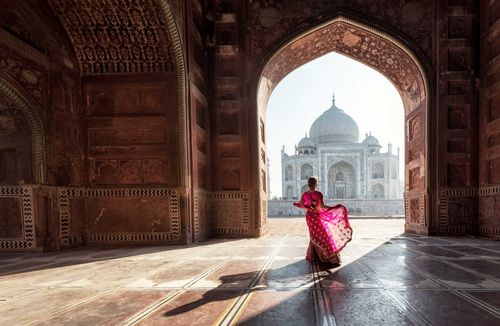
- Travel Tips

written by Andy Turner
updated 11.04.2024
Ready to travel and discover India?
Get support from our local experts for stress-free planning & worry-free travels.
- Where to stay
- Travel advice

- TALK WITH US
- English English Deutsch Français Español Polish Dutch Italiano
Best Time to Visit India
Last Updated on April 3, 2024
Ideally, the best time to visit India would be between October and April, which is the comparatively cooler part of the year. India is an all year destination since it is a large country, so geographically and climatically diverse. Every season brings something different in different parts of the country. But if you ask us, February, March and November are the ideal months. February is a pleasant month to travel in almost every part of this huge country. You can experience pleasant, sunny weather in majority of India in this month. While the Holi festival is in March, November sees the Pushkar Camel Fair and sometimes, Diwali, the festival of lights.
The winters (from the end of October to the beginning of March) are mostly pleasant with moderate daytime temperatures and almost no precipitation. The summer months of (mid) April, May and June can get unbearably hot. From mid-June to September, the monsoon winds bring heavy monsoon rains across the entire subcontinent. It hardly ever rains in the country outside of the monsoon season.
That is why, the weather in India is an important factor to consider while picking the best time for visiting the country. Another thing to consider are the festivals in India , which are an integral part of Indian culture and spread throughout the year. Having said that, India has something to offer at any time in the year.
From the mighty Himalayas to the balmy beaches, it is all about picking the right destination based on when you are visiting India.
We will give you a broad overview on the best time for visiting India, the best regions to visit for each season, the festivals you should not miss, and more, so that you can decide your travel plan and itinerary accordingly.
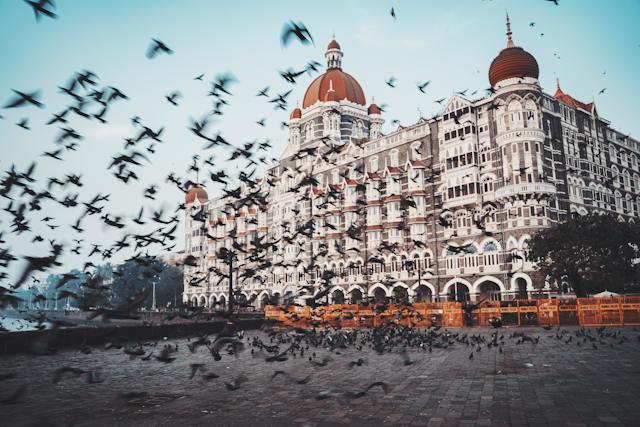
Table of Contents
When is the Tourist Season in India?
The tourist season in India is generally from November to the beginning of March, which is also the best time to visit the country.
This is when India has moderate to relatively cool temperatures in Central and South India and some flat parts of North India. Certain parts of the high Himalayas in the far north are inaccessible in December and January, but by and large, you can expect clear skies and sunny days across India , along with great beach weather.
October is a good month to visit most of the country. The climate is dry and pleasant, and still early for the tourist influx. The afternoons in October can be a little hot, our only grudge with the month in India. Diwali, India’s biggest Hindu festival , is celebrated either in late October or early November.
Click on Plan Your Trip , if you want us to help you with it!
If you plan your holiday during this time, it is best to book at least three months in advance to get the best pick of hotels at reasonable rates and hassle-free train reservations .
Prime tourist destinations such as Rajasthan, Agra, Goa and Kerala get quite crowded at this time. During Christmas and New Year, Goa in particular is completely packed with domestic and international tourists.
Apart from the cooler temperatures, if you like meeting other interesting travellers, the buzz, and excitement while you travel, then there’s nothing quite like seeing India in peak travel season.
Check out our tour ideas, almost all of which, could be executed in these months.
Seasons in India
While the winters are perfect for a trip to India, tourism in India thrives throughout the year.
Monsoon rains start from mid-June and lasts until September. An exotic concept for travellers coming from moderate climate zones, monsoon is considered to be an off-season for tourism. Monsoon season develops differently in different parts of India, but it can rain very intensely in the southern part of India (think Kerala, Goa and Mumbai). You can expect torrential rains in a large part of the country in July.
Although winters are perfect for a trip to India, tourism in India thrives throughout the year.
Monsoons are not recommended for travel in India, but this is when nature comes to life in India. It is a magical time. Grasslands and forests become lush green. Monsoon is celebrated with various festivals across India, especially by farmers.
Another benefit of the season is that since many people avoid travelling in monsoons, you get cheaper rates for everything, less crowds, and incredible views. A little secret, most parts of North India only receive light showers during the monsoons a great region to explore especially during the months of August and September .
March to mid-June is summer season in India. During these months, plus some weeks of October, temperatures can go up to 45 degrees celsius in some parts of India. But that shouldn’t stop you from visiting India. Summer months are perfect to take a trip to North India, amidst the great Himalayan ranges.
You can venture to the spiritual haven of Rishikesh, which lies on the banks of the Ganges River. You can even visit the exiled Dalai Lama in Dharamshala. British hill stations like Shimla or Darjeeling are great to visit, while thrill-seekers can trek in various regions of North India. Ladakh becomes accessible by June. Take a look at Stephanie’s spiritual voyage through the North for some inspiration on a travel route through this region.
Festivals in India
When is the best time to visit India for its festivals? Well, India has many, many national and local festivals throughout the year. However, there are a few large festivals in India that you absolutely should not miss. So try to time your travel in India around at least one of the major festivals to truly take in the vibrance of India.
Diwali, the festival of lights, is usually in late October or the beginning of November. Homes and streets are illuminated with ‘diyas’ or oil lamps. People exchange sweets and gifts and burst firecrackers. Goddess Lakshmi is welcomed on this auspicious festival. This dazzling festival is truly something to be witnessed.
Holi, the festival of colors, is in March. Join locals in a riot of vibrant hues as they playfully drench each other in coloured powders and water. Celebrated in most of northern India and some parts of India’s south, the Holi festival celebrates the triumph of good over evil. If you are planning to visit northern India, with the Golden Triangle in mind (Delhi, Agra and Jaipur), then you must witness the Holi festival at least once.
August, September, and October see a range of festivals dedicated to Gods and Mother Earth across the country. These include Ganesh Chaturthi (festival dedicated to the elephant-headed God), Onam (ten-day harvest festival in Kerala), Navratri (nine-day festival to celebrate the nine incarnations of Goddess Durga), and Dussehra (a religious festival based on Hindu mythology).
Held in November, Rajasthan’s Pushkar Camel Fair blends a traditional camel trading market with colourful festivities.Engage in traditional Rajasthani food, music and dance. The fair’s lively energy, cultural immersion, delicious shopping and camel-centric activities make the Pushkar Camel Fair an unforgettable adventure.
Embrace the warmth of Lohri in northern India in January. This festival marks the beginning of the harvesting season. Witness folk dances like Bhangra and Gidda, enjoy delicious traditional sweets like ‘rewari’ and ‘gajak’.
While it’s great to see and take part in local festivities and ceremonies, a lot of festivals in India are intimate family celebrations. Therefore, it would be best to stay at a homestay either North or South India at that time. Just before and after festivals, trains get booked way in advance and flights are extremely costly. This is because most Indians travel to be with their families. So, try and do the same and book well in advance.
The festive seasons may not always coincide with the holiday dates you had in mind. If you just give us a shout, we’ll help you plan the ideal trip while making sure you experience a traditional festive celebration or cultural event. There’s always something great going on in India, and we know exactly when and where.
When is the best time to visit Delhi?
The best time to visit Delhi would be from October to early March , as the weather is cool and pleasant at this time. It gets quite cold from December to February, so do carry warm clothes . With the increasing pollution in India, we also recommend carrying a mask.
The summer months of April to June are incredibly hot, so restrict sightseeing to mornings and evenings, and spend the afternoons indoors eating some delicious Delhi food.
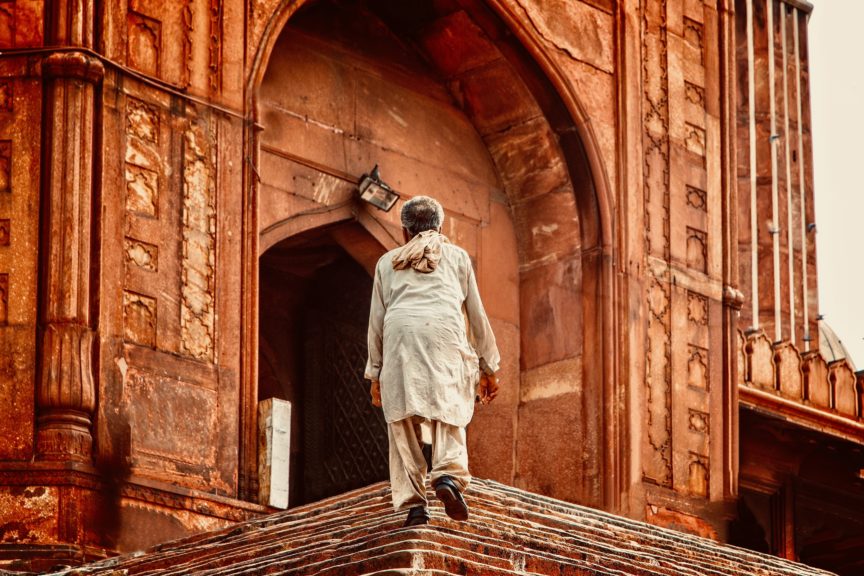
When is the Best time to Visit Agra?
The best time to visit Agra and the Taj Mahal is between November and March . The weather is similar to that of Delhi – winters get cold and summers are intensely hot and humid.
If you don’t mind the rain and high humidity, monsoons are a good time to visit Agra for great prices and fewer tourists.
The best time to visit the Taj Mahal is early morning, to avoid crowds and see the sun hit the marble in a surreal way. Do note that the Taj Mahal is closed on Fridays.
When is the Best time to Visit Rajasthan?
The best time to visit Rajasthan is from November to March. The weather is ideal to visit the forts of Jaipur and Jodhpur, see the Thar desert, or relax by the lakes in Udaipur.
It is also the best time to spot tigers at Ranthambore. March is also when you can celebrate Holi festival in Rajasthan.
The summer months from April to June are avoidable due to excess heat and hot winds.
The monsoons are a good time to visit Rajasthan because the rains are not heavy, the temperature is cooler, and prices are much cheaper.
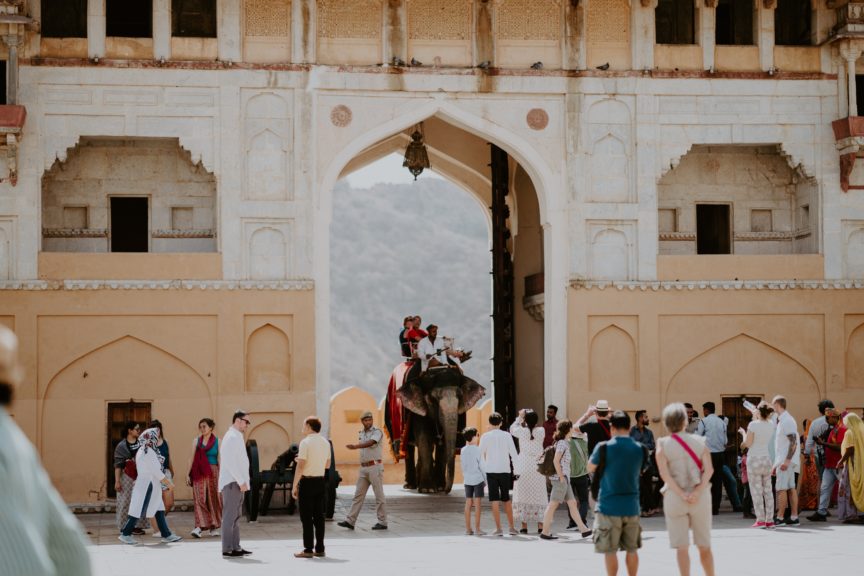
When is the best time to visit Goa?
The best time to visit Goa is December to February. The weather is pleasant and not very humid. With its party places to let loose and beach resorts to relax, Goa is a fun place to visit in India. The only time to avoid Goa is during the monsoons, between June and September. However, the monsoons in Goa show you a different, incredible side of this beach state.
When is the best time to visit Central India?
The best time to visit Central India is from November to February. The weather is similar to that of North India. Being away from the sea, this region gets a lot less rainfall than the coastal states, resulting in very cold winters and extremely hot temperatures with dry weather during summers.
Central India is quite vast and spread out. From the states of Uttar Pradesh, Madhya Pradesh, to parts of Maharashtra, central India has some of the more offbeat and untouched places to visit.
There are many national parks for tigers in Central India (Tadoba, Pench, Kanha, and Bandhavgarh). The best time to spot tigers would be in the summer (March to June).
Uttar Pradesh has the holy city of Varanasi. Madhya Pradesh has some lovely cities like Indore and Bhopal and some historical places like Ujjain and Mandu. Further up north are Khajurao and Orchaa.
When is the best time to visit the Western Coastline of India?
Along the western coastline runs the massive 1600 km long Western Ghats mountain range. It contains beautiful hill stations, a variety of flora and fauna, and wildlife parks, forest and natural reserves that make it a UNESCO World Heritage Site.
Wayanad, Coorg, Munnar and Coonoor are some of the places you can visit to escape the heat.
Every time you leave the plains and enter the mountainous regions between the summer months, you immediately feel the change in temperature and air quality. Since off-season for tourism in India starts in April, you’ll already save substantially on hotel bookings.
When is the best time to visit South India?
The best time to visit South India is from November to March. You can expect clear blue skies, green scenery, calm seas, and cool mountain air.
You can visit the Araku Valley or beaches of Vishakhapattnam in Andhra Pradesh. The tea plantations in Munnar and the forests of Wayanad, Thekkady and Thattekad in Kerala will have nice, pleasant weather. Pongal, a four-day harvest festival, is celebrated in Tamil Nadu in January or February.
You can see the waterfalls in all their glory during the monsoon season, but you can also expect a lot of rain, so be prepared accordingly.
Summers are hot and humid in southern India, but not unbearable like in the Northern part of the country . The temperature is cool in hilstations of Nilgiri Hills in Tamil Nadu even during the summer months. This is also the best time to spot elephants in the Periyar National Park in Kerala and the Bandipur National Park in Karnataka.
Know More: Best Time to Visit Kerala
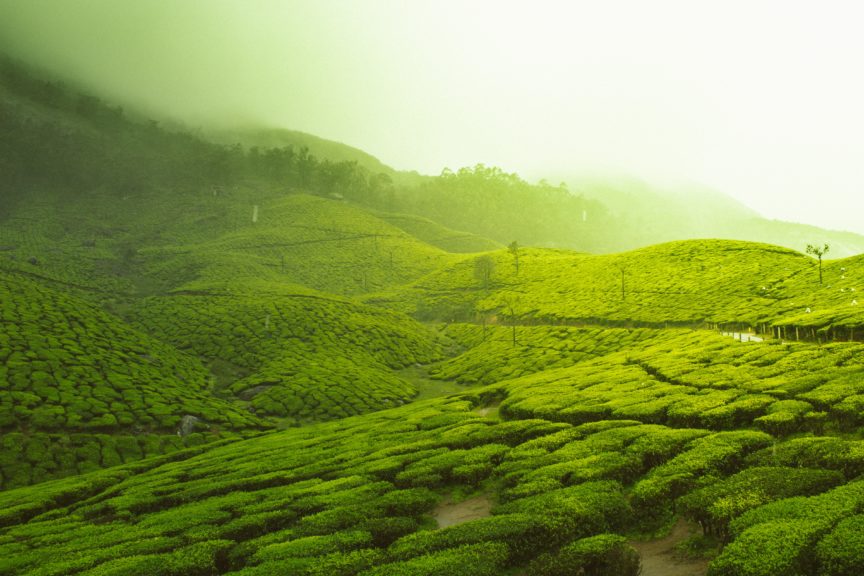
India by Months
So, wondering when is the best time to visit India? Here is a detailed overview of what the weather would be like each month in India, in different regions of the country, feel free to explore.
One of the driest months in India, it is way too cold at this time in the northern part of India. But if you want to experience snow, visit India to head up to the Himalayas. The rest of the country also gets slightly cooler, so it is a good time to visit the beaches of Goa or cruise the backwaters of Kerala.
You can enjoy the most pleasant weather in India during February. Most of India experiences amazing atmosphere. It is the ideal time to visit India’s majority of the regions, and tickets get booked quite in advance. You w ill find clear skies and pleasant sunshine in most of India. You could attend the Jaisalmer Festival in Rajasthan during this time.
Additional Resource: India Bound? Don’t Miss These UK Traveler Insights
March is a good time to tour the Golden Triangle region of India – Delhi, Agra, and Jaipur before the hot sunshine takes hold of the country from March onwards. But another reason to visit India in March is Holi – the festival of colours in India. The streets are filled with people drenching each other in colors and water – truly an experience you should not miss.
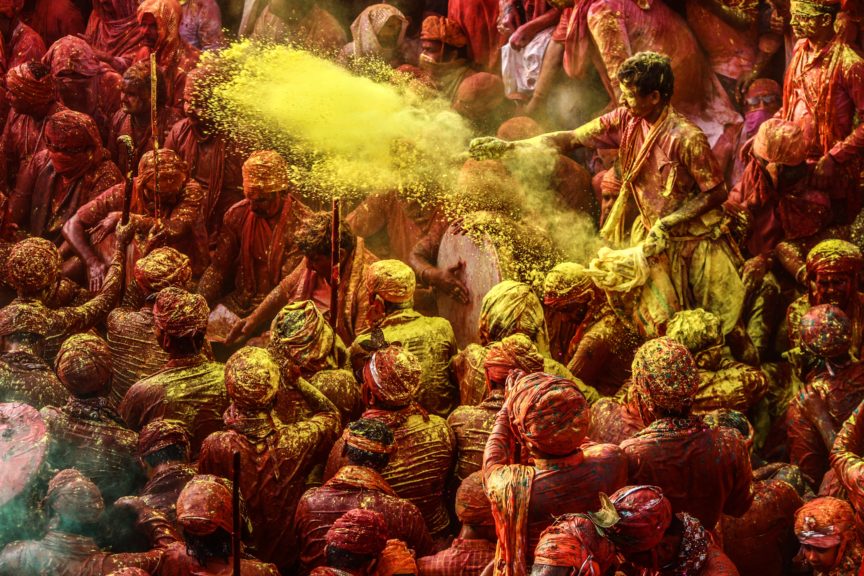
Temperatures soar in April, making it impossible to travel during daytime in some parts of India. But this is when visits to watering holes are frequented, since those areas are comparatively cooler. April is also prime wildlife viewing season, especially the majestic tigers of India. This month is spring season in the North, which means spring flowers bloom in Himachal Pradesh, Uttarakhand, and the Himalayas.
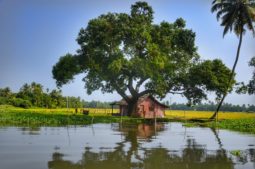
May means hot and dry weather for most of India. Temperatures can soar up to 45 degrees celsius in this month, so the only way to beat the heat is to travel to hill stations, or explore the northern part of India. Early mornings and evenings in May are also great for wildlife sightings in national parks and reserves in West India. Sometimes, this month experiences summer monsoons as well.
It is the advent of monsoons in most of India from mid to late June . So you can escape to the far North if you visit India at this time. The gorgeous Ladakh region is accessible from this month. If you don’t mind the humidity and rains, you can take advantage of the off-season rates almost all over the country starting from early June.
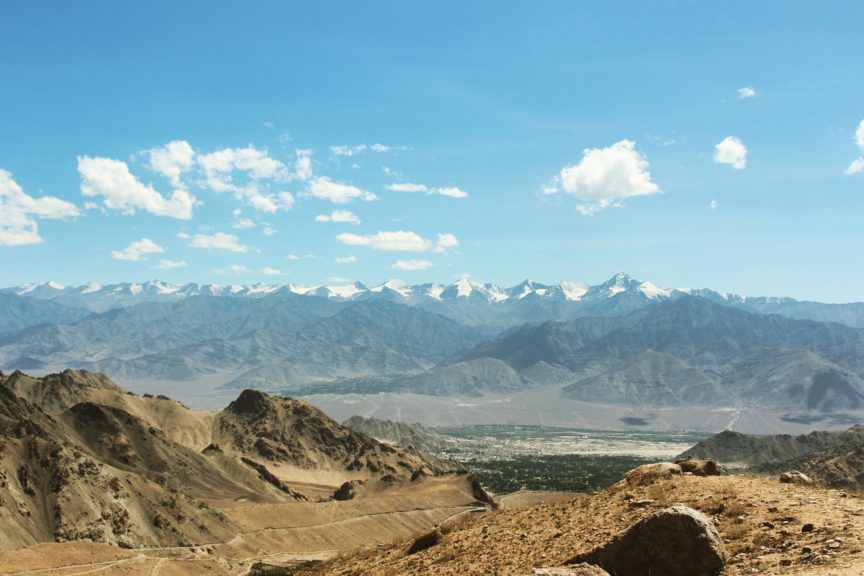
Most of the country gets drenched as the monsoon rains arrive in July. This month sees regular and prolonged downpours and can sometimes severely disrupt communications with the intensity. You could visit Rajasthan and the Thar desert in this month. Ladakh is also stunning at this time. July sees many local monsoon festivals being celebrated across India.
It rains heavily in August in many parts of the country, but the views during this month are surreal. Independence Day of India is celebrated on 15th August all over the country. You can check out the snake boat races in Kerala in August. Ganesh Chaturthi, the festival of the elephant-headed God, is celebrated with pomp in Maharashtra.
Also See: Detailed Guide for Australian Travelers to India
As the rain recedes in September , it is a good time to visit the Golden Triangle, since it is a bit early for the tourist season. Visit the Taj Mahal, Red Fort, and Hawa Mahal. Rajasthan also becomes vibrant during September.
The climate is pleasant in October in most of the country. With the great weather, it is a good time to visit India. 2nd October is a national holiday in India as it is Mahatma Gandhi’s birthday. Diwali, the festival of lights, also occurs in October or November, making it a peak season for travel in India. Diwali is India’s biggest festival. You can witness streets lit up with rows and rows of diyas and firecrackers.
Explore More: Travel advice for US tourists Visiting India
It is usually a dry and cool season in November throughout the country, and one of the best months to visit anywhere in India. Darjeeling in West Bengal is especially pleasant in November. The Pushkar Camel Fair happens in November, and it is an extraordinary experience. Sometimes, Diwali festival takes place in November.
December is one of the busiest months for travel and tourism. You will find temperatures dropping towards the end of this month. Domestic and international travellers have their winter break with Christmas and New Year’s, so everything is booked well in advance for the peak season. Goa is especially crowded in December.
Explore Further: 20 Must-Visit Places in North India
January | February | March | April | May | June | July | August | September | October | November | December
Simply hit the Plan Your Trip button a nd we’ll help simplify it all. Let us help you travel your way, keeping in mind all your interests and requirements while exploring the best of this vibrant subcontinent.

Frequently Asked Questions
What is the best time of year to visit the Taj Mahal?
The best time of the year to visit the Taj Mahal would be between October and March. Do remember that the Taj Mahal is closed every Friday.
What are the best months to visit India?
The best months for visiting India are November and February. These are not peak tourist seasons like December and January and have glorious weather in most of India, cool and pleasant.
What is the best month to visit Delhi?
The best time to visit Delhi is between October and March. However, we recommend dates toward February and March.
What month is monsoon in India?
Monsoon season hits different parts of India at different times. In the west coast and northern part of India, the rainy season starts from mid-June and end in September. In the east coast of Tamil Nadu and Orissa, it rains between October and November. July and August see heavy rainfall in most parts of central and south India.
Which city in India has the best weather?
The most optimum weather for cities in India would be Bangalore. It has moderate climate all through the year.
Also, check out our Blog Weather Series for the different months in India. If you’re still not sure when and where to travel when visiting India, plan your trip with us and we can help you figure it out.
About Harsh Sonawala
Harsh Sonawala is the co founder of India Someday and since his childhood, he has travelled to different parts of India and the world. The thrill of travelling and sharing his experiences with others was the reason behind starting India Someday. Other than the office where he is conjuring up marketing ideas, he can be found scuba diving in the Andamans or relaxing in a chalet in the Himalayas.
helping you travel your way
Everything you need to know about India is here We have tried writing about everything you may need help with for your trip to India, If you need help in planning a trip to India Get in touch with us to to plan your trip of a life time.
find out how
let our clients tell you why us
Tripadvisor

you might also like

Trip to Leh Ladakh
This article will give you some insight into trip ideas to Leh Ladakh......
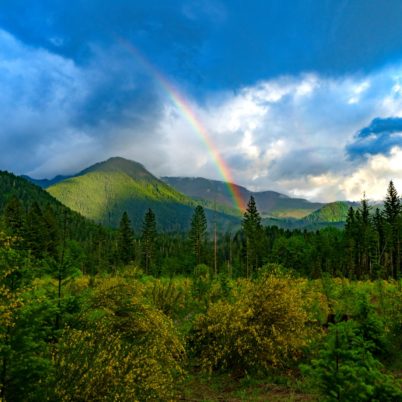
Weather in India at different points in the year
Wondering what the weather in India is like at different points of the.....

Best Places to visit in India in January
The best places to visit in India in January would arguably be the reg.....
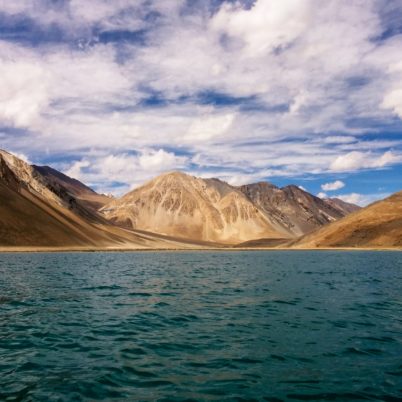
Travelling to India during off-season
Do you like to travel during the leaner months when tourist crowds sta.....
Accessibility Links

When is the best time to visit India?
December until early march tends to be the best time of year to visit india, but there’s lots to consider, including the summer monsoon.

W hether you want to relax on Goa’s beautiful beaches or explore sun-scorched Rajasthan’s desert palaces and forts, you should make sure that the dates of your trip to India are in sync with the country’s climatic extremes. Here’s what you need to know.
Main photo: preparing to take part in the Holi festival at Radha Rani Temple in Nandgaon, Uttar Pradesh (Getty Images)

When is the best time to visit northern India?
The best time to visit India is roughly between late October and March, when it’s cool, dry and sunny, before high temperatures and the monsoon rains arrive — but during the peak winter months of December and January it can actually be chilly in northern India. In the Golden Triangle, the low winter light smoulders the sandstone walls of Delhi ’s Red Fort, while the illuminated ornate façade of Jaipur’s 18th-century Palace of the Winds appears in even higher definition than usual. By July and August, during summer’s high temperatures, head to northern India’s former hill stations for cooler Himalayan breezes.
• Best hotels in Delhi

When is the best time to visit southern India?
Fragrant with cardamom and sandalwood and home to India’s most popular white-sand beaches, the south of the country is typically warm throughout the year — albeit with varying degrees of humidity and rains. During winter months, after the monsoon, Kerala is popular around December, particularly Christmas, when it has a balmy climate hovering in the mid-20s. Culture buffs will find this season ideal to explore Tamil Nadu state and see arguably India’s finest religious temples, such as Madurai’s colossal Meenakshi complex. From June to November, rain falls almost daily as the south flushes lusciously green.
Advertisement
• Best cities to visit in India

When is monsoon season in India?
The heavens open between May and September, as the monsoon season holds sway across much of India. High temperatures and heavy rainfall make life uncomfortable in cities such as Kolkata, which can experience floods as the unpredictable monsoon works northeastwards from India’s south. Yet it can be one of the most magical times to see India. Forests and grasslands are fertile and green; there are fewer tourists at the honeypot sights; and you’ll experience fresh clear air and the break in humidity after a downpour.
• Best places to visit in India

When’s the best time for the beach?
Despite a decade of development, Goa retains a seductive allure informed by its Portuguese heritage, sandy beaches and food spiced with eastern flavours. Come to spend Christmas here to escape the northern hemisphere’s winter blues. Why? Between late October and late February Goa is blessed with long days of sunshine and settled skies. The same goes for the beaches of India’s tropically lovely state of Kerala, although they are more prone to showers.
• Best beaches in India • Best hotels in Goa • Best yoga retreats in India • Discover holidays to Goa*

When is the best time to visit the Taj Mahal?
Whether you experience the marble-white domes and minarets of Agra’s Taj Mahal during monsoon when the skies are leaden or in the brilliant heat of a fierce summer’s day, the allure of this great architectural wonder of the world never diminishes. Early morning fog is typical during winter months, so visit later in the morning when the light improves. Sunrise too, lends a flaming light to the mausoleum that Shah Jahan built in honour of his dead wife around 1632.
• Explore Taj Mahal tours*

When are India’s best festivals?
India’s festivals accentuate the country’s religious enthusiasms with incense-fragranced and sometimes kitsch explosions of colour. Celebrate Holi in March when spring is ushered in by plumes of coloured powder. Don’t miss Diwali, the festival of light, celebrating the Hindu new year around October. Pushkar camel fair is Rajasthan’s most popular gathering each November; while August and September is when many local festivals take place, including those particularly associated with harvest such as Onam, in Kerala.
• Best festivals in India

When is the best time to visit central India’s national parks?
The thrills of tracking Bengal tigers in a jungle that inspired Rudyard Kipling, seeking out rare sloth bears or witnessing a peacock displaying fantail plumage can all be experienced in central India’s national parks around Madhya Pradesh and Chhattisgarh — but the weather will be a factor in what you can see. The parks are at their greenest post-monsoon from October until January before the heat builds up, yet the foliage is dense and sightings can be hard-won. From March until the onset of the monsoon season the waterholes dry up and wildlife is easier to see.
• 10 amazing things to do in India’s Golden Triangle

When is the best time to visit India’s Himalayas?
Trekking through imperious glacial valleys amid forested mountain peaks; sampling Tibetan-style yak butter tea; inhaling the fragrance of flowering rhododendron forests — just a few reasons to experience India’s Himalayas. After winter’s bitter cold and heavy snowfall, the most scenic clear-sky views are at their best between March to June, and then from September into late November. In the summer months, visit hill stations such as Darjeeling and Shimla to escape lowland India’s escalating heat.
Take me there
Inspired to visit India but yet to book your trip? Here are the best packages from Tui* and Virgin Holidays* .
Sign up for the Times Travel Newsletter here .
Related articles

Our head office
0800 088 6002, [email protected], client log in, reset password, agent log in.

Best Time to Visit India
When planning your India tours , understanding the vast country's diverse climate and weather patterns becomes crucial to ensuring an unforgettable experience. India, a land of contrasts, offers a myriad of landscapes from the snowy peaks of the Himalayas in the north to the sun-drenched beaches of South India. The timing of your visit significantly influences the activities you can enjoy, the festivals you can participate in, and the natural beauty you can witness. The best time to visit India varies depending on your destination within the country, whether you're drawn to the architectural marvel of the Taj Mahal , the vibrant streets of Delhi , the desert landscapes of Rajasthan , the rich biodiversity of national parks, or the serene backwaters of South India.
The weather and climate guide for India plays a pivotal role in planning your journey, as the subcontinent experiences a wide range of weather conditions. The dry season, generally considered the best time to go, offers pleasant weather suitable for exploring the country's myriad attractions without the inconvenience of heavy rains or extreme heat. However, the monsoon season has its own charm, transforming landscapes into lush, verdant paradises that appeal to some adventurers.
As you delve into the details of each region, you'll find that Rajasthan's arid deserts, Delhi's bustling urban landscapes, the snow-capped Himalayas, and the tropical climate of South India each present unique opportunities and challenges depending on the time of year. This guide aims to equip travelers with essential insights into the best time to visit India, enhancing the travel experience across this culturally and geographically rich nation.
Introduction to India’s Climatic Diversity and Weather Guide
India’s climate can broadly be classified into three seasons - summer, monsoon, and winter. However, this simplification hardly does justice to the myriad of microclimates across the country. From the Thar Desert’s scorching heat to the frigid temperatures of the Himalayas, the Indian climate is as varied as its cultural tapestry. Understanding this climatic diversity is crucial for planning your travel, whether it's for the sun-soaked beaches of Goa or the snow-laden valleys of Kashmir.
India's Climate Guide
India's climatic conditions are predominantly shaped by the Himalayas and the Thar Desert, which together create a barrier that affects the monsoon winds, dictating the weather pattern across the country. The climate can broadly be divided into three seasons: summer, monsoon, and winter, each bringing its unique charm and challenges to the traveler.
Regional Climate Variations
India’s vastness encompasses several climatic regions, each with its own best time to visit:
- North India: Experiences extreme weather with very hot summers and cold winters. The best time to visit is from October to March.
- South India: Remains relatively hot throughout the year with a more pronounced monsoon season. The cooler, dry months from November to February are ideal for visits.
- West India: Includes desert climates in Rajasthan where winters are cold and summers extremely hot. Coastal areas like Mumbai have a moderate climate but with a heavier monsoon.
- East India: Has hot summers, especially in the plains, while the monsoon is heavy, making winter (October to March) the best time for exploration.
- The Himalayas: Weather varies significantly with altitude, but summers are generally mild and winters harsh. Summer (April to June) and autumn (September to November) are ideal for visiting.
India by Month: A Detailed Exploration
Planning a trip to India involves considering the diverse climates, festivals, and cultural events that unfold throughout the year. Here's a month-by-month breakdown to help you choose the perfect time for your adventure across India's vast landscapes:
- Weather: Winter continues across most of India, with cooler temperatures in the northern plains and pleasant weather in southern regions.
- North India: Explore the Golden Triangle (Delhi, Agra , Jaipur ) and witness the architectural marvels in comfortable weather.
- South India: Visit Kerala for sunny days and tranquil backwaters.
- Festivals: Makar Sankranti, Pongal, and Republic Day celebrations.
- Weather: Winter begins to fade, with warmer temperatures in northern regions and pleasant weather prevailing across the country.
- Himalayas: Ideal for winter sports enthusiasts in destinations like Gulmarg, Manali, and Auli.
- Rajasthan: Explore the desert cities of Jaipur, Jodhpur, and Udaipur without the scorching summer heat.
- Festivals: Goa Carnival, Khajuraho Dance Festival.
- Weather: Transition from winter to spring, with warmer temperatures in northern India and pleasant weather in southern regions.
- Holi: Celebrate the festival of colors across India, particularly in Mathura, Vrindavan, and Barsana.
- Taj Mahal: Visit Agra for clear views of the iconic monument amidst mild temperatures.
- Wildlife: Explore national parks in Central India for wildlife sightings before the onset of summer.
- Weather: Summer begins in earnest, with temperatures rising across most parts of India.
- Himalayas: Trekking season begins in destinations like Himachal Pradesh and Uttarakhand.
- Cultural Festivals: Baisakhi in Punjab, Vishu in Kerala.
- Weather: Hot and dry conditions prevail, particularly in the plains and central regions.
- Hill Stations: Escape the heat by visiting hill stations like Shimla, Ooty, and Darjeeling.
- Spiritual Retreats: Explore spiritual destinations like Rishikesh and Varanasi for cultural immersion.
- Weather: Monsoon arrives in southern and coastal regions, bringing relief from the heat but also heavy rainfall.
- Monsoon Delights: Experience the lush greenery and scenic beauty of destinations like Kerala and Goa.
- Cultural Festivals: Rath Yatra in Puri, Hemis Festival in Ladakh.
- Weather: Monsoon, the rainy season, spreads across most parts of India, bringing widespread rainfall and cooler temperatures.
- Western Ghats: Explore the misty landscapes and waterfalls of the Western Ghats in Maharashtra and Karnataka.
- Backwater Cruises: Enjoy houseboat cruises in Kerala amidst the monsoon rains.
- Weather: Monsoon continues, with heavy rainfall and occasional flooding in some regions.
- Hill Stations: Visit hill stations in the Himalayas like Munnar and Mussoorie for cooler weather and scenic beauty.
- Festivals: Onam in Kerala, Raksha Bandhan, Independence Day.
- Weather: Monsoon begins to retreat, with intermittent rainfall and improving weather conditions.
- Post-Monsoon Bliss: Explore destinations like Rajasthan and Gujarat as the monsoon subsides, offering pleasant weather for sightseeing.
- Cultural Festivals: Ganesh Chaturthi in Maharashtra, Durga Puja preparations in West Bengal.
- Weather: Post-monsoon season brings cooler temperatures and clear skies, particularly in northern and western regions.
- Festivals in India: Dussehra celebrations across India, Navratri in Gujarat and West Bengal.
- Wildlife: National parks reopen for visitors, offering wildlife safaris in Madhya Pradesh and Uttarakhand.
- Weather: Winter begins to set in, with cooler temperatures in northern regions and pleasant weather in most parts of the country.
- Golden Triangle: Explore Delhi, Agra, and Jaipur for architectural marvels amidst mild temperatures.
- Adventure Sports: Enjoy trekking, paragliding, and other adventure activities in Himachal Pradesh and Uttarakhand.
- Weather: Winter arrives in full force, with cold temperatures in northern regions and mild weather in southern parts of India.
- Christmas and New Year: Experience the festive spirit in cities like Goa, Mumbai, and Kolkata.
- Himalayan Retreats: Visit hill stations like Manali and Gulmarg for winter sports and snowfall.
By understanding India's climate and festival calendar, you can plan your visit to coincide with the best weather and cultural experiences, ensuring a memorable journey through this diverse and captivating country.
The Best Time of Year to Visit India: A Seasonal Guide
India's diverse landscapes and rich cultural heritage offer travelers a multitude of experiences throughout the year. From the enchanting winter wonderland to the vibrant festivities of summer and the lush greenery of the monsoon season, each season brings its unique charm. Let's explore the seasonal highlights and why each period is worth experiencing:
Winter (November to February): The Peak Season
Why Visit: Winter emerges as arguably the best time to explore India, especially for those seeking pleasant weather and outdoor adventures. The cooler and drier climate makes it ideal for sightseeing, cultural explorations, and indulging in various activities across the country.
The Golden Triangle: Architectural Marvels and Cultural Heritage
- Delhi, Agra, Jaipur: With mild temperatures, clear skies, and minimal rainfall, the winter months offer the perfect conditions to marvel at the architectural grandeur of the Taj Mahal, explore the historical forts of Rajasthan, and enjoy the vibrant streets of Delhi.
Goa and South India: Beach Bliss and Backwater Serenity
- Goa: Winter marks the peak season for Goa's pristine beaches, with sunny days and balmy evenings beckoning travelers to unwind by the sea.
- Kerala: Referred to as "God's Own Country," Kerala showcases its natural beauty in all its glory during winter, offering a tranquil escape amidst serene surroundings.
Summer (March to June): The Season of Festivals and Mountains
Why Visit: Despite the heat in the plains, summer in India is a vibrant season filled with colorful festivals, cooler retreats in the mountains, and unique cultural experiences.
Himalayan Retreats: Cool Escapes and Adventure
- Shimla, Manali, Darjeeling: The hill stations of North India offer a refreshing escape from the scorching summer heat, becoming havens for travelers seeking cooler temperatures and lush landscapes.
- Uttarakhand, Himachal Pradesh: The summer months provide the best conditions for trekking in the Himalayas, offering stunning vistas and unforgettable adventures.
Festivals: Cultural Vibrancy and Celebrations
- Holi: Celebrate the festival of colors in March, witnessing the joyous celebrations and cultural vibrancy of India firsthand.
- Cultural Festivals: From religious processions to music and dance extravaganzas, summer is a time of cultural vibrancy in India, with festivals like Rath Yatra, Teej, and Bihu adding to the festive atmosphere.
Monsoon Season (July to September): The Lush Green Beauty
Why Visit: Despite the challenges posed by heavy rainfall, the monsoon season transforms India into a lush green paradise, offering breathtaking landscapes and unique experiences for travelers.
Kerala and the Western Ghats: Rejuvenation and Serenity
- Kerala: Experience the rejuvenating Ayurvedic treatments or explore the misty landscapes of the Western Ghats during this time, witnessing nature's bounty in full bloom.
- Rajasthan: While the Thar Desert receives minimal rain, the monsoon brings a drop in temperatures, making it an ideal time to explore Rajasthan's desert cities.
Post-Monsoon (October): The Transitional Beauty
Why Visit: October serves as a transitional month, offering a reprieve from the rain and preparing the country for the cooler months ahead. It's a relatively quiet month for tourism, which means fewer crowds.
- Festivals: Witness the grandeur of Dussehra and Navratri celebrations across India.
- National Parks: Many national parks and wildlife sanctuaries reopen in October, providing the first glimpses of India’s diverse wildlife post-monsoon.
June to November: A Special Mention
Why Visit: This period, encompassing the monsoon and post-monsoon months, offers a mix of lush landscapes, cultural festivities, and unique experiences across Western and Southern India.
Each season in India unfolds its own charm and beckons travelers with a tapestry of experiences. Whether you're drawn to the architectural splendor of the Golden Triangle, the cool retreats of the Himalayas, the festive spirit of summer, or the lush greenery of the monsoon, there's something for every traveler to discover and cherish in this incredible country.
Navigating India by Region: When to Visit Where
India's vast expanse encompasses a myriad of landscapes, cultures, and climates, making it essential to plan your visit according to the region and the time of year. Here's a detailed guide on when to visit different parts of India to make the most of your travel experience:
Best Time to Visit Northern India
Winter (November to February): Winter emerges as the best time to explore Northern India, offering clear views of the majestic Himalayas and pleasant weather in cities like Delhi and Varanasi.
- Himalayan Views: Clear skies during winter provide optimal conditions for admiring the snow-capped peaks of the Himalayas in states like Himachal Pradesh and Uttarakhand.
- City Exploration: Cities like Delhi, Varanasi, and Agra are more comfortable to explore during winter, with milder temperatures and fewer crowds.
Avoid Summers: Summers in the plains of Northern India can be scorching, with temperatures soaring to uncomfortable levels. It's advisable to opt for hill stations during this time to escape the heat and humidity.
Best Time to Visit Southern India
Winter (November to February): Winter offers the best weather for exploring Southern India, with mild temperatures and dry conditions ideal for visiting beaches, temples, and other attractions.
- Beach Bliss: Coastal destinations like Goa, Kerala, and Tamil Nadu are perfect for beach holidays during winter, with sunny days and cool evenings.
- Temple Tours: Explore the rich cultural heritage of Southern India by visiting iconic temples and historical sites without the discomfort of extreme heat.
Monsoon (June to September): While summers in Southern India can be hot and humid, the monsoon season brings out the beauty of hill stations and backwaters, offering a refreshing retreat amidst lush greenery.
Best Time to Visit Eastern India
Winter and Spring: Winter and spring are the ideal seasons for exploring Eastern India, offering pleasant weather for outdoor activities and sightseeing in states like West Bengal and the northeastern states.
- Cultural Exploration: Visit Kolkata during winter to experience its vibrant cultural scene, including festivals, art exhibitions, and street food markets.
- Northeastern Delights: Explore the picturesque landscapes and diverse cultures of the northeastern states, such as Assam, Meghalaya, and Sikkim, when the weather is mild and conducive to travel.
Avoid Monsoon: Eastern India experiences heavy rains during the monsoon season, which can lead to flooding and transportation disruptions. It's best to avoid this time if you plan to explore the region.
Best Time to Visit Western India
Winter (November to February): Winter is the best time to visit Western India, including popular destinations like Mumbai, Goa, and the desert state of Rajasthan.
- City Escapes: Enjoy mild temperatures and clear skies in Mumbai, exploring its vibrant street life, historical landmarks, and coastal attractions.
- Desert Adventures: Rajasthan's cities, such as Jaipur, Jodhpur, and Udaipur, are best visited during winter, with pleasant weather for exploring forts, palaces, and desert landscapes.
Monsoon (June to September): While the monsoon season brings heavy rains to Western India, hill stations in states like Maharashtra offer a refreshing escape from the heat and humidity.
Best Time to Visit Central India
Winter (November to February): Winter is the preferable time for exploring Central India, particularly Madhya Pradesh's national parks and heritage sites.
- Wildlife Safaris: Visit national parks like Kanha, Bandhavgarh, and Pench during winter for the best chances of spotting wildlife, including tigers, leopards, and rare bird species.
- Heritage Trails: Explore UNESCO World Heritage Sites like Khajuraho, Sanchi, and Bhimbetka rock shelters in Madhya Pradesh, enjoying pleasant temperatures and clear skies.
Summers: Summers in Central India can be hot and humid, making early mornings and late evenings the best times for outdoor activities. It's advisable to carry plenty of water and sunscreen if visiting during this time.
By aligning your travel plans with the optimal seasons for each region, you can make the most of your journey through India, experiencing its diverse landscapes, rich cultural heritage, and warm hospitality to the fullest.
Best Time to Visit India: When to Go Where
Planning a trip to India involves considering the diverse climates and attractions spread across the country. Here's a detailed guide on the best times to visit specific destinations and regions in India:
Best Time to Visit the Taj Mahal
Best Time: The best time to visit the Taj Mahal is during the winter months from November to February.
- Mild Weather: Winter offers pleasant weather with cooler temperatures, making it comfortable for exploring the Taj Mahal complex and its surroundings.
- Clear Skies: The winter months typically have clear skies, providing optimal conditions for admiring the iconic monument's beauty and taking photographs.
- Avoid Summer Crowds: Visiting during winter helps avoid the crowds and heat experienced during the summer months.
Best Time to Visit the Golden Triangle
Best Time: The best time to visit the Golden Triangle (Delhi, Agra, Jaipur) is during the winter months from November to February.
- Mild Temperatures: Winter brings milder temperatures to the region, making it comfortable for exploring the historical landmarks, forts, and palaces.
- Clear Skies: With minimal rainfall and clear skies, winter offers optimal conditions for sightseeing and photography.
- Cultural Festivals: Winter coincides with various cultural festivals and events in the Golden Triangle, providing opportunities to experience India's rich heritage.
Best Time to Visit the Himalayas
Best Time: The best time to visit the Himalayas is during the summer and autumn months from April to November.
- Moderate Weather: Summer offers pleasant temperatures in the Himalayan region, making it ideal for trekking, mountaineering, and exploring hill stations.
- Blooming Landscapes: Spring brings blooming flowers and lush greenery to the Himalayas, creating picturesque landscapes.
- Clear Views: Autumn provides clear skies and stunning views of the snow-capped peaks, offering excellent visibility for mountain enthusiasts.
Best Time to Visit Indian National Parks
Best Time: The best time to visit Indian National Parks varies by region, but generally, the winter months from November to February are ideal.
- Wildlife Sightings: Winter is the best time for wildlife sightings in national parks, as animals gather around water sources, and vegetation is less dense.
- Comfortable Weather: Mild temperatures during winter make outdoor activities like safaris and nature walks more enjoyable.
- Bird Watching: Many national parks are home to migratory birds during the winter months, offering excellent birdwatching opportunities.
Best Time to Visit Kerala
Best Time: The best time to visit Kerala is during the winter and early spring months from October to March.
- Pleasant Weather: Winter brings pleasant weather to Kerala, with cooler temperatures and lower humidity levels, making it ideal for exploring beaches, backwaters, and hill stations.
- Festivals: Kerala hosts various cultural festivals and events during winter, including the famous Thrissur Pooram and Kerala Backwaters Festival.
- Ayurvedic Treatments: Winter is an excellent time for Ayurvedic treatments and rejuvenation therapies in Kerala, as the weather is conducive to healing and relaxation.
By choosing the best time to visit each destination, travelers can optimize their experiences and make the most of their journey through India's diverse landscapes and cultural heritage.
Tips for Traveling to India
Traveling to India offers a kaleidoscope of experiences, from vibrant festivals to breathtaking landscapes. Here are some essential tips to enhance your journey:
Plan According to the Climate
India's diverse geography results in varied climates across the country. When planning your trip, consider the weather conditions of the regions you intend to visit. Here are some climate considerations:
- Winter (November to February): Ideal for visiting Northern and Western India due to cooler temperatures and clear skies.
- Summer (March to June): Consider hill stations in Northern India or coastal regions in Southern India to escape the heat.
- Monsoon (July to September): Explore the lush greenery of Kerala and the Western Ghats or opt for cultural experiences in Rajasthan and Gujarat.
Tailoring your itinerary based on the climate ensures a more comfortable and enjoyable travel experience.
Embrace Festivals
Participating in local festivals offers a glimpse into India's rich cultural tapestry. From the colorful celebrations of Holi and Diwali to the spiritual gatherings of Kumbh Mela, festivals provide memorable experiences. To make the most of your festival experience:
- Plan Ahead: Festivals attract large crowds, so book accommodations well in advance to secure your stay.
- Respect Local Customs: Familiarize yourself with festival etiquette and dress codes to show respect for local traditions.
- Capture Memories: Don't forget your camera to capture the vibrant colors and festive spirit of Indian celebrations.
Navigate Monsoon Travel
Traveling during the monsoon season requires careful planning due to unpredictable weather conditions. Here are some tips for navigating monsoon travel in India:
- Check Weather Updates: Stay informed about weather forecasts and advisories to anticipate potential disruptions to your travel plans.
- Pack Wisely: Bring waterproof clothing, sturdy footwear, and umbrellas to stay dry during rainy spells.
- Be Flexible: Expect delays and cancellations, particularly for outdoor activities and transportation. Maintain flexibility in your itinerary to accommodate unexpected changes.
By planning according to the climate, embracing local festivals, and navigating monsoon travel with flexibility, you can make the most of your journey through India and create unforgettable memories along the way.
A Timeless Journey Awaits
Deciding the best time to visit India is influenced by your personal travel preferences, the regions you wish to explore, and the experiences you seek. Whether it’s the serene landscapes, the bustling markets, the historic monuments, or the spiritual retreats, every season in India has its unique charm and challenges. With careful planning and a spirit of adventure, your visit to India can be an enriching journey through one of the world’s most diverse and vibrant countries.
Frequently Asked Questions
What is the best month to go to india.
The best month to visit India depends on your preferences and the regions you plan to explore. Generally, the winter months from November to February are popular due to mild temperatures and clear skies in most parts of the country.
Which is the busy season for India?
The busy season in India typically coincides with the winter months from November to February. During this time, tourist attractions, hotels, and transportation services experience high demand, especially in popular destinations like the Golden Triangle (Delhi, Agra, Jaipur) and Goa.
How many days in India is enough?
The ideal duration for a trip to India varies depending on your interests and the places you wish to visit. However, a minimum of two to three weeks is recommended to explore the country's diverse landscapes, cultures, and attractions thoroughly.
Which is the hottest month in India?
The hottest month in India varies by region, but generally, May is considered the hottest month, particularly in the northern and central parts of the country. During this time, temperatures can soar above 40°C (104°F) in many regions.
When is monsoon season in India?
The monsoon season in India typically occurs from June to September. During this time, the southwest monsoon brings heavy rainfall to most parts of the country, replenishing rivers, lakes, and reservoirs and providing relief from the summer heat.
When is the Best Time to Travel to India?
The best time to visit India depends on the regions you plan to explore and your preferences for weather and activities. Generally, the winter months from November to February are considered the best time to visit, offering mild temperatures and clear skies in most parts of the country. However, specific regions like the Himalayas are best visited during the summer and autumn months, while the monsoon season offers unique experiences in destinations like Kerala and the Western Ghats.
Search our Blog
Related tours.
Explore India's vibrant contrasts on this 16-day tour! Discover the Golden Triangle (Delhi, Agra, Jaipur), stay in a rural village, then head south to explore Kochi, hilltop Munnar, Thekkady's wildlife, and Kumarakom's tranquil backwaters.
Small Group
This 8-day India tour is the perfect introduction to this fascinating country, covering the iconic 'Golden Triangle' of Delhi, Agra and Jaipur with an additional village stop included at the Suroth Mahal.
Southern India awaits! On our 13 day tour you'll explore ancient temples, French-Tamil Pondicherry, and serene Kerala backwaters. Hike Munnar's tea hills, spot wildlife in Thekkady, and soak up history in Madurai and Kochi.
RECENT POSTS FROM OUR BLOG
Need some travel inspiration or looking for some handy travel tips? Our blog provides excellent insight into our travel destinations - from tour updates to country guides, packing lists to little known things to do, you'll find it all in our travel blog.
Exploring Bhutan: Indulging in Bhutanese Food - Uncovering the Best Dishes, Street Food, and Delicacies
Explore Bhutanese food to tantalize your taste buds! From street food like Phaksha Paa to traditional dishes like Jasha Maru and Shakam Datshi.
A Guide to Festivals Celebrated in Bhutan: Cultural Events, Celebrations & Festivals in Bhutan
Discover the best festivals in Bhutan, including Paro Tshechu, in Thimphu and Punakha. Explore cultural events and popular festivals of Bhutan.
The Ultimate Bhutan Packing List: Everything You Need to Pack for Bhutan Travels - Plan Your Trip
A Guide to Photography Spots in Bhutan: 11 Photography Places in Bhutan
Discover 11 breathtaking photography spots in Bhutan. From iconic dzongs to serene monasteries, this guide is a must for any photographer.
Best time to visit India

The best time to visit India is in the winter (December to early March). It tends to get very hot from April onwards, and most regions experience the summer monsoon from June to September. That being said, India is a huge country with diverse climatic regions, and there are incredible places to explore all year. We’ve put together a guide to the best time to visit some of its most popular destinations.
Let's create an exclusive trip for your group.
The best time to visit the Indian Himalaya is from November to February. This is the driest period, though January and February are very chilly at the higher altitudes. In the eastern Himalaya, in places like Gangtok and Darjeeling, the monsoon brings heavy rainfall from June to August and, to a lesser extent, in the shoulder seasons. It’s best to avoid this area in the summer.
Delhi experiences a subtropical climate with a mild, sunny winter, a scorching summer and a wet, humid monsoon season from July to September. The best time to visit is from November to February to avoid the rains and the intense heat between March and June. Agra, where the Taj Mahal is located, experiences a similar climate.
Goa is known for its beaches and laid-back vibe. The monsoon arrives in late May through September and brings very intense rainfall. It’s best to visit Goa in January and February when it's warm (average maximum of 32°C) and dry. March, April and November are still technically part of the dry season, but it can be hot and sticky and there’s a risk of cyclones.
The best time to visit Kolkata is during the dry winter from mid-December to February. The temperature increases from March onwards and the heat can get quite intense. The monsoon rains tend to arrive towards the end of May, with October and November seeing an increased chance of cyclones, tropical storms and flooding.
The best time to visit Mumbai is in January and February when the weather is dry but not too hot. March, April and May are generally dry, though the heat can be overpowering. June, July, August and September see the worst monsoonal rains, but cyclones are still possible in November and December.
In Thiruvananthapuram (formerly known as Trivandrum), at the southern tip of Kerala, the rains – from April to late November – are less intense but last longer. The high season in Kerala runs from late November through late March, when it’s relatively dry and not too hot.
The state of Rajasthan, which includes Jaipur and Ranthambore National Park, is most enjoyable in December, January and February. That said, it’s not a bad place to go outside of these months as the monsoon usually has a smaller impact than in other regions.
The best time to visit Varanasi is from November until early March before the heat intensifies. April, May and June are extremely hot, with the monsoon arriving in July until the end of September.
Best for: wintry magic in the Himalaya, hitting the beach in Goa, cruising through Kerala.
January is one of the driest months in India. It’s cold up north, but it’s a magical time to travel through the foothills of the snow-topped Himalaya, learn about Tibetan spirituality in Dharmsala or sip hot chai in Rishikesh’s cafes. For warmer weather, head to Goa’s golden beaches or to Kerala to cruise the palm-fringed backwaters on a houseboat.
Best for: exploring Rajasthan’s regal sites, Jaisalmer Desert Festival.
Winter nears its end in February and temperatures start rising across the country. It’s a fantastic time to explore Rajasthan ’s majestic Maharajah forts and palaces or journey into the Thar Desert without melting in the heat. You could even align your trip with the Jaisalmer Desert Festival to witness the colour and opulence of Rajasthani culture. Expect elaborate camel processions, folk dancing, turban-tying competitions and traditional food.
Best for: Holi Festival, the Golden Triangle.
March is the last month before scorching temps take hold, which makes it a great time to tick off the Taj Mahal and Amber Fort in the Golden Triangle . But the biggest reason to travel to India in March is, of course, Holi! It’s not every day you can take to the streets with hundreds if not thousands of people and throw colourful powders over each other in the name of love. The date changes based on the Hindu calendar, but usually occurs on the last full moon in March.
Best for: hiking in the Himalaya, spotting wildlife in Ranthambhore.
The hot, sticky weather begins in April, with temperatures in Delhi, Kolkata and Chennai often hitting 37°C. April’s a great month to spot wildlife in Ranthambhore National Park; the increasingly dry conditions mean vegetation is thin, and animals tend to congregate around waterholes. If you’re lucky, you may spot a Bengal tiger. It’s also a pretty time to hike in the Himalaya which are blooming with wildflowers.
Best for: retreating to the mountains and hill stations.
May is one of the muggiest months in India, so unless you can handle the heat, you might find it too hot. Beat the heat in the mountains where a cooler climate and colourful blooms await, or go to Darjeeling for cool breezes and delicious tea. Monsoon rains arrive in southern states in late May, which is a welcome relief from the humidity. While it doesn’t rain all day, downpours tend to be very intense. Don’t forget a waterproof poncho!
Best for: exploring northern India, off-season crowds.
The wet season is underway by June and the humidity can be oppressive. Travel in south India is off the cards (unless you fancy getting drenched), so go north to swap beaches and backwaters for mountains, rivers and yoga classes. If you can cope with the heat, it can be a good time to take advantage of off-season crowds and prices.
Best for: uncovering the magic of Rajasthan sans the crowds.
The south is saturated in July, causing many national parks to close. There’s also a risk of landslides and flooding in lowland areas. Take advantage of off-season crowds and visit the stunning forts and palaces in Jaipur, Jodhpur and Jaisalmer without the crowds. To escape the rain completely, head to the Thar Desert (just bear in mind it’ll be hot).
Best for: Ganesh Chaturthi Festival, Independence Day, Kerala snake boat races.
August is the wettest month, but if you don’t mind ducking inside during downpours, you’ll enjoy fewer tourists and maybe cheaper accommodation. Plus, tropical landscapes in the south look extra lush thanks to the rain. If you’re in Kerala on the second Sunday in August, don’t miss the annual snake boat races on the backwaters. It’s also a great time to do the Golden Triangle or Varanasi with vibrant festivities for Independence Day and Ganesh Chaturthi, a festival dedicated to Ganesha.
Best for: Krishna Janmashtami, touring the Golden Triangle, foodie adventures.
The rain eases in September. As a shoulder month, it’s a great time to see big ticket sites in the Golden Triangle as they’re not too crowded. Rajasthan is gorgeous at this time of year, with lush countryside and full lakes thanks to the monsoon rains. September also marks one of India’s significant harvest seasons, so why not jump on a Real Food Adventure to uncover the best of Indian cuisine.
Best for: cycling adventures, Diwali festivities.
October sees pleasant weather across most of the country, so it’s an excellent time to hop on a bike to experience India at a slower pace . A highlight of October is Diwali (though some years it may fall in November). Often called the festival of light, Diwali celebrates the triumph of good over evil. Expect to see homes and streets decorated with lights, candlelit ceremonies and firework shows.
Best for: pleasant weather, the Pushkar Camel Fair.
The weather in many parts of India is cool and dry in November, and most activities are back on again. But the biggest drawcard is the Pushkar Camel Fair. Every year, thousands of camels (and their owners dressed in their finest garb), villagers and entertainers from all over Rajasthan travel to the holy city of Pushkar to trade and entertain crowds with eyebrow-raising exhibitions – including a much-anticipated moustache competition.
Best for: hitting Goa’s beaches, dodging the crowds in northern India.
The weather is a mixed bag in December, from cold conditions in the north to clear skies and plentiful sunshine down south. It’s one of the busiest months with international travellers arriving in the masses for the festive season break, particularly in Goa, so booking accommodation and activities in advance is recommended. If you’d rather dodge the crowds, head north to watch morning prayers along the misty Ganges in Varanasi, or eat your way around Jaipur on a Pink City Rickshaw tour.
- Meet the Team
- Work with Us
- Czech Republic
- Netherlands
- Switzerland
- Scandinavia
- Philippines
- South Korea
- New Zealand
- South Africa
- Budget Travel
- Work & Travel
- The Broke Backpacker Manifesto
- Travel Resources
- How to Travel on $10/day
Home » Asia » Best Time to Visit India – MUST READ • 2024 Guide
Best Time to Visit India – MUST READ • 2024 Guide
The vibrant cultures, incredible landscapes, sizzling cuisine, and bustling cities of India have long enticed travelers. From the foothills of the Himalayas to the idyllic beaches of Goa, a kaleidoscope of sights, sounds and sensory revelations await.
Choosing the best time to visit India is about more than just good weather or great prices. A trip to a country of this size and with so much to offer will need lots of planning and research. There’s simply no way to see it all on just one trip.
India’s varied landscape features equally varied climate conditions, and with so many diverse experiences to be had, you’ll need to go in with a clear plan. Once you’ve identified what you most want to see and do, you’ll need to find the best time to visit India based on weather, costs, and tourists numbers.
We’ve compiled this handy guide to hopefully help you to plan your dream trip to India for the experience of a lifetime.
Best Time To Visit India – March to May, October to November
Best Time To Go To Mumbai – April to May, October to November
Best Time To Go To Goa – March to May, October
Best Time To Go To Rajasthan – November to February
Best Time For Sightseeing – March to May, October to November
Cheapest Time To Visit India – June to August
When is the Best Time to Visit India?
Cheapest time to go to india , when to visit india – a month by month breakdown, faq about the best time to visit india, final thoughts on the best time to visit india.
India is such a vast and varied destination that choosing what to see when you visit is only the first part of your battle. The second is deciding on the best time to go to India to have the experience you’ve been dreaming of.
The peak season for travel in India falls between December and February. If you’re headed to the lower north of the country, you’ll enjoy dry conditions and mostly warm weather. Yes, this is technically winter, but daytime temperatures are warm and comfortable.
If you’re heading into the mountains however, mornings and evenings can get VERY cold, especially over December and January.
In the south, the peak season lasts into March and offers lovely warm temperatures, low humidity, and almost no rain.
If you’re planning to travel at this time, prepare for large crowds of tourists on planes and trains, as well as elevated hotel prices. It’s a good idea to book early for travel over this time as availability at the last minute can be tough to find. Christmas and New Year are particularly busy but India is a great place to explore in December if you want to escape the cold!
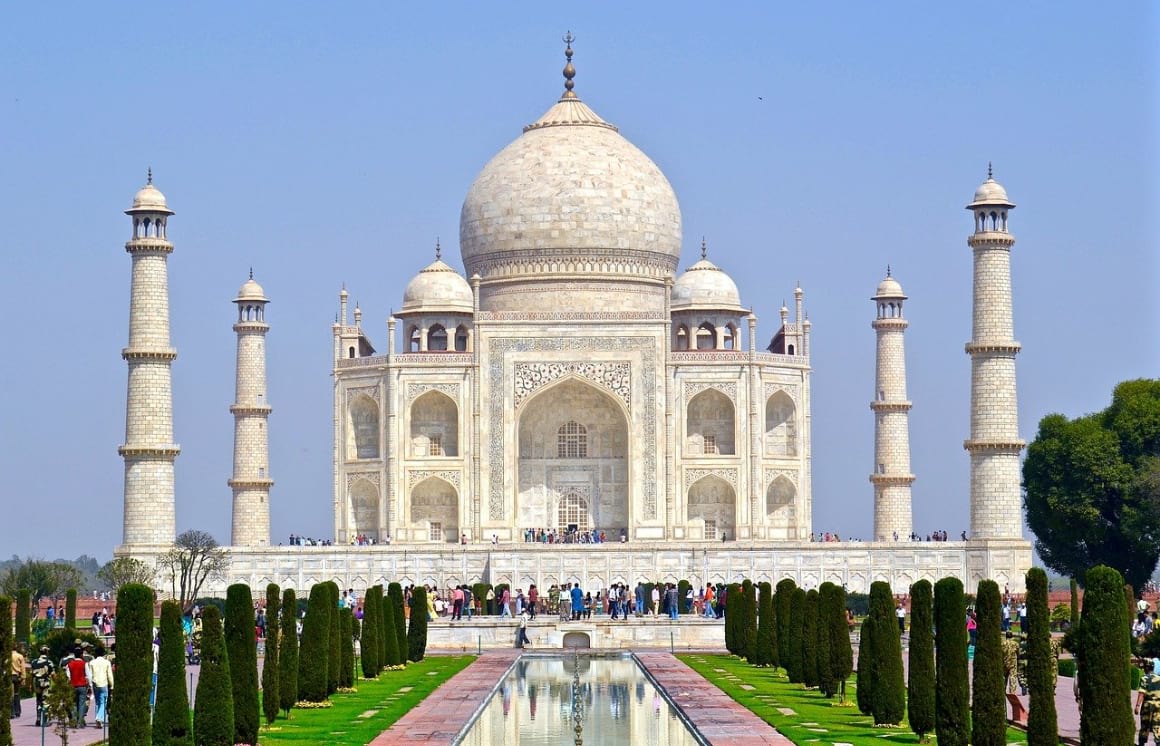
On the other end of the spectrum, the low season falls between April and September and offers a lovely crowd-free experience of the beautiful places in India at lovely bargain prices. That said, it’s also monsoon season in much of the country. Spring and early summer is however a great time to visit the Himalaya’s when you will find hot days and cool nights.
Temperatures head into the 40°C range (and sometimes higher), and when coupled with the humidity, it can be pretty unpleasant. The monsoon downpours can certainly affect travel plans and make sightseeing a bit tricky. Some tourist businesses close completely over this time.
The shoulder seasons are considered the ideal balance between the cheaper prices of the low season and the great weather of the high season. March to May and October to November offer this balanced Goldie Locks time.
These are the periods immediately before and after the monsoons, so it can still be a bit changeable in terms of the weather. Humidity can climb as do temperatures, and rains can be more frequent now than in the winter.
Sightseeing is pleasant in this mild weather, crowds are far smaller than peak season, and prices are not yet hitting the peak season highs.
Best Time to Go to Mumbai
The high-energy city of Mumbai is one of India’s most important and most populous cities. Located on the coast overlooking the Arabian Sea, the climate here is warm and tropical for the entire year.
The dry season between October and April is the best time to visit Mumbai for good weather. Temperatures are warm, humidity is low, and rain is rare. It’s a perfect time for Mumbai sightseeing .
In addition to being great for sightseeing, these mild weather conditions are also perfect for outdoor events and celebrating one of India’s many festivals . Consequently, this time of year is the peak season and sees an influx of tourists and the associated increase in prices. That said, accommodation in Mumbai is generally very affordable to most foreign visitors.
If you want to enjoy pleasant weather without the added tourist crowds and heavy pricing of peak season, April and May and October and November are ideal. Falling immediately before and after the monsoon rains, these shoulder seasons offer this ideal balance of climate, crowds, and costs.
The weather is more variable and rain is not uncommon, however, there are far fewer tourists at these times, and prices are generally not as high as they are in the peak season.
There is a small spike in tourism over the festival of Diwali, usually in October/November.
Best Time to Go to Goa
The palm-fringed beaches of Goa are popular with travelers seeking sun, sea, and sand. Add to that the incredible cuisine with a pumping party scene and you can see why so many choose to return here time and again.
Goa is busiest during the winter months (November to February) when the temperatures are warm but not as hot as the summer months. This is the peak season and the busiest and most expensive to see Goa . During this time, you can expect epic parties every single night catering to all conceivable tastes.
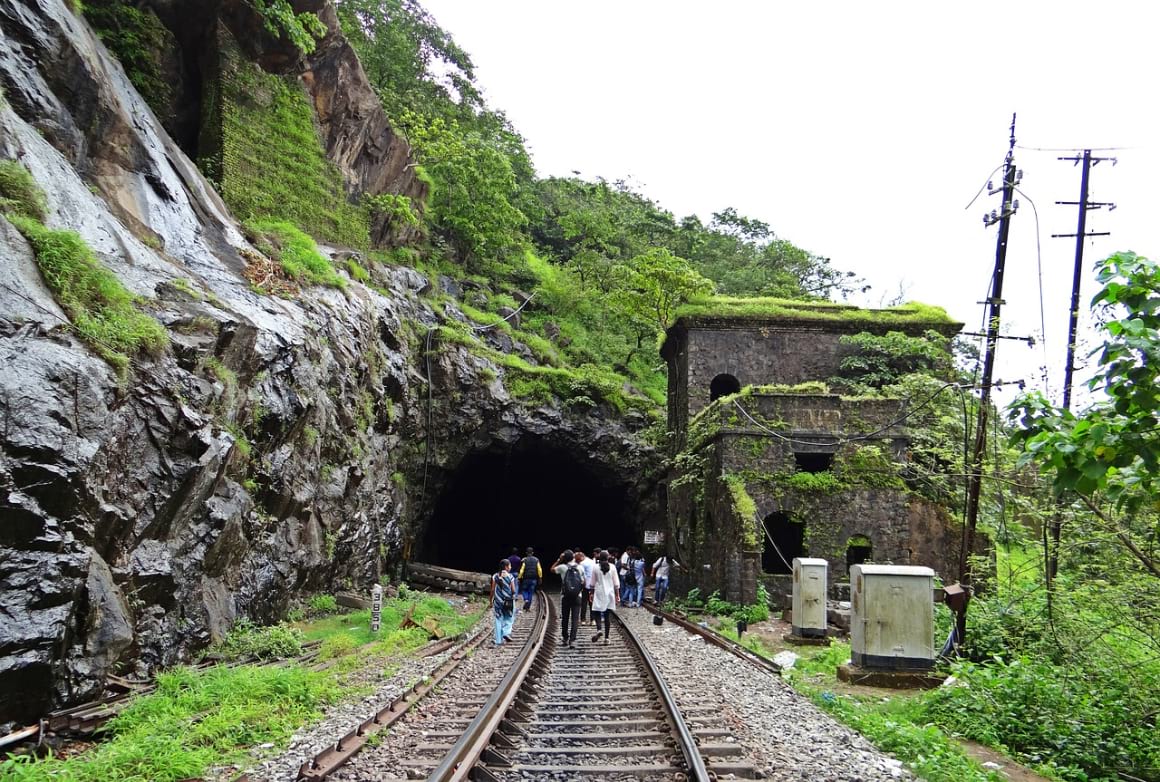
Between June and September, the monsoons arrive, drenching the landscape. While it’s not the ideal time for a beach holiday, it is a great time to visit to enjoy crowd-free conditions and much cheaper rates on hotels. Water sports are not advisable as the sea temperatures plummet and conditions can get dangerous.
Between March and October, summer arrives in Goa bringing stifling heat and increased humidity. Mornings and evenings are bearable, but during the heat of the day, most people choose to stay indoors to avoid the uncomfortable heat.
The summers are less popular with tourists, so if you’re visiting at this time, you can pick up some good deals on Goa accommodation and enjoy a relatively uncrowded stay.
The epic Goa trance parties mostly occur between November – March when you kind one in Anjuna most nights of the week.
Best Time to Go to Rajasthan
Rajasthan, meaning ‘Land of the Kings’, is India’s second-largest state and offers a treasure trove of sights to explore. From the haunting desert to bustling cities and well-tended farmlands, the varied landscape has plenty to brag about at every time of year.
The winter months between November and February offer the most comfortable weather. Temperatures at this time are generally warm, although during December and January the mornings and evenings can get quite cold.
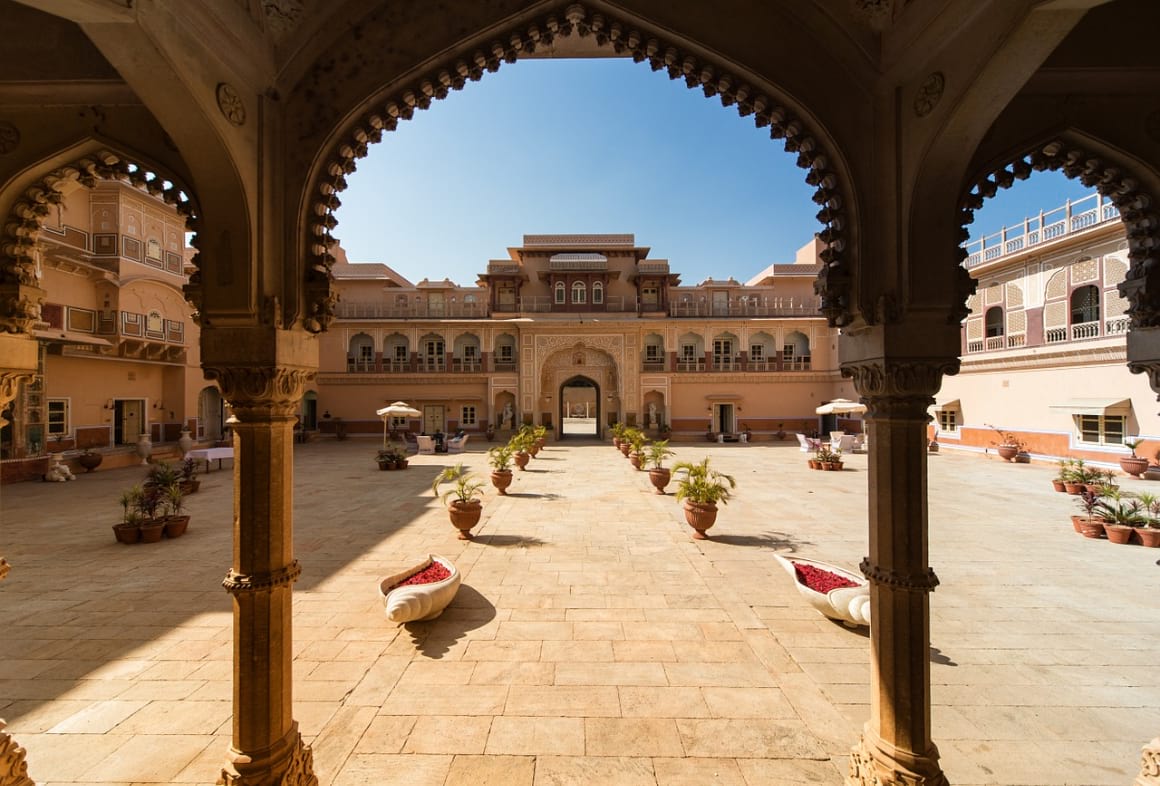
This is the busiest season for travel, so expect more tourists and higher prices. But on the other hand, most of the celebrations and festivals tend to fall over the winter months.
The summers (April to June) can get extremely hot with maximum temperatures reaching a scorching 48°C, made worse by the increased humidity. While not the best time visit for being outdoors, this time of year does offer low tourist numbers and more economical pricing.
The monsoons arrive in Rajasthan from July until September. Temperatures are mild and pleasant, and humidity can be high. Overall, this is the cheapest time and least crowded time to visit.
Best Time for Sightseeing in India
India is a large country with a varied topography. This means that there’s never one good time to visit to see and experience it all – not to mention that with so much to see, you’ll definitely need more than one trip to even begin to make a dent.
If you’re planning on seeing the sights in the north of the country, the period between October and March offers the best sightseeing conditions. Temperatures are mild and rainfall is low
In the south of the country, November to April offers the best sightseeing conditions with blue skies and plenty of sunshine.
No matter where you’re planning to go, the Christmas and New Year period will always see a spike in traveler numbers. Expect queues at top attractions and large numbers of tourists to elbow past to see the sights.
Accommodation prices tend to spike at this time as well, so if you are planning to visit at this time, make sure to book well in advance.

Wanna know how to pack like a pro? Well for a start you need the right gear….
These are packing cubes for the globetrotters and compression sacks for the real adventurers – these babies are a traveller’s best kept secret. They organise yo’ packing and minimise volume too so you can pack MORE.
Or, y’know… you can stick to just chucking it all in your backpack…
Best Time for Visiting The Taj Mahal
“A teardrop on the face of Eternity” is how Rudyard Kipling described the Taj Mahal and the Mughal Mausoleum truly is one of the worlds great wonders.
Situated in the city of Agra near Delhi, the Taj is busy with visitors all year round and doesn’t ever really get “quiet”.
For the most mild and dry days, visit during early spring or early winter. You will be spending a lot of time in the sun so pack accordingly – our India Packing Guide will tell you what to do!
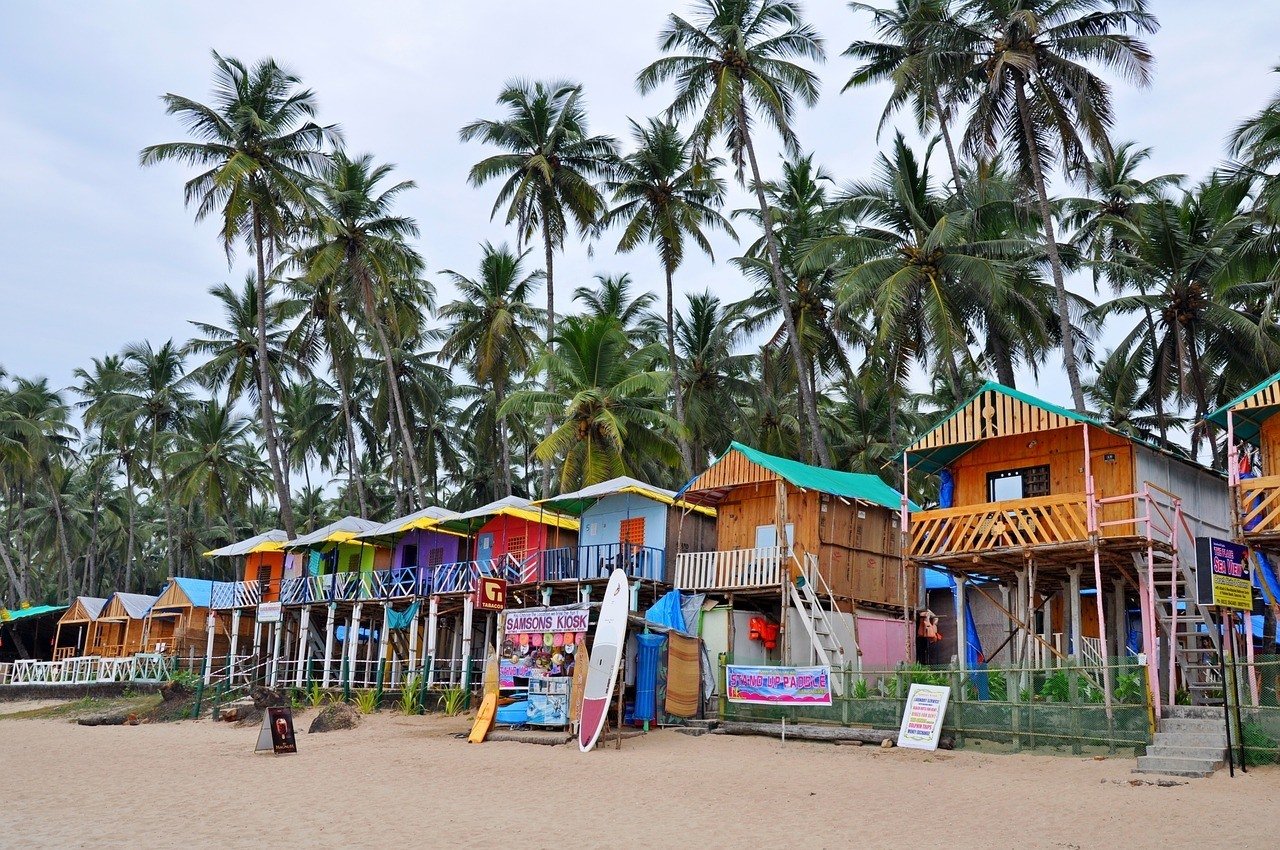
The monsoons arrive between June and September and it can get very wet and humid. I stayed in a good hostel in Agra in August and snuck a visit in the Taj between heavy rain storms. During that visit, my backpack got so damp that mould set in and I had to throw some items away.
Monsoon season is the cheapest time to go to India. In the north of the country, this is between June to September, while in the south May to November. Typically, this time of year is rainy and humid, although still very hot.
Along the southeast coast, the monsoon season is slightly delayed and occurs between August and November.
Busiest Time to Visit India
The busiest time to visit India coincides with the winter dry season when conditions are warm but not too hot and relatively rain-free. This is the peak season and likely to offer large crowds of tourists and elevated pricing on accommodation.
The Christmas and New Year holidays are a particularly busy time for tourism and hotels, and transport will be crowded – it’s essential to book well in advance if you wish to travel at this time.
Outside of this period (between November and February), other times of year that have higher tourist numbers include the five days over Diwali (usually falling in October/November) and Ganesh Chaturthi (usually falling in August/September).
Weather in India
Winter in India is relatively warm for the most part. Between November and February, conditions are warm and dry – perfect for sightseeing. This is commonly the peak season to visit as a result of these pleasant conditions.
It’s the post-monsoon season, so the landscape is lush and dust-free. In the north near the mountains, the evenings and mornings can be quite chilly.
By late March, temperatures are on the rise with temperatures in the mid-30s. If you’re in the north, the mercury can average closer to 40°C. The humidity builds throughout May and June, making temperatures feel even hotter.
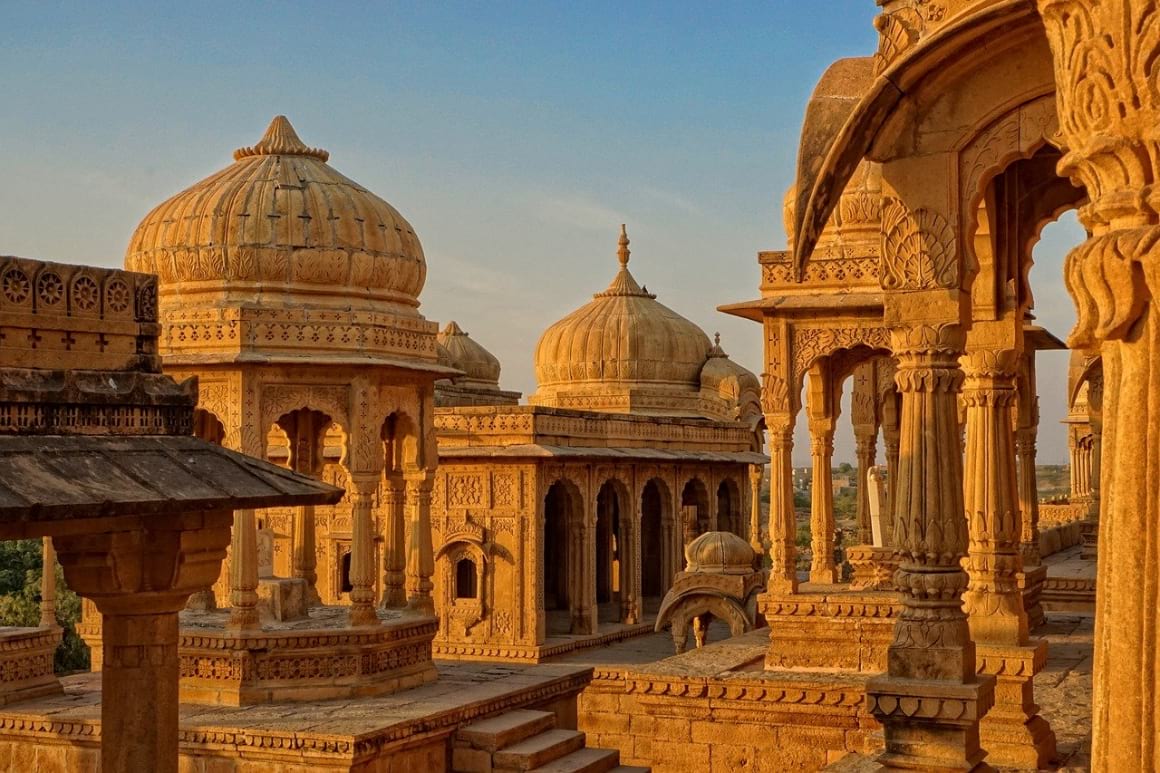
By late June the monsoon season moves in. Heavy downpours will drench the land, breaking occasionally for some lovely, hot sunshine. If you’re in rural areas, roads may become impassable.
Overall, sightseeing can be unpleasant at this time. Not just because of the rain, but because it’s hot, humid, and uncomfortable. This is a great time to consider visiting one of many Indian National Parks .
September and October are drier and cooler. Tourists return to India to enjoy some rain-free sightseeing. It’s still fairly humid and warm, but conditions are much more comfortable, getting more so as winter draws near.
Where is the Best Weather in India?
The vastness of India and its varied topography causes a wide range of conditions. The south of the country is generally hotter and more humid, while the mountainous regions of the Himalayas are colder.
A large portion of India below the Tropic of Cancer features a semi-arid climate where rainfall is rare, especially inland. Temperatures here range between the low 20s and mid-30s throughout the year.
Western Rajasthan is significantly more arid than anywhere else in India. The rainfall here is erratic and unreliable causing desert conditions. Seasonal variations are large, with summers exceptionally hot and winters much colder, occasionally dropping below zero.
The west coast is largely humid and experiences much heavier monsoons than the rest of the country. In the northeast, humid subtropical conditions prevail. Warm to hot summers, generous monsoons, and dry, cool winters are predominant.

Stash your cash safely with this money belt. It will keep your valuables safely concealed, no matter where you go.
It looks exactly like a normal belt except for a SECRET interior pocket perfectly designed to hide a wad of cash, a passport photocopy or anything else you may wish to hide. Never get caught with your pants down again! (Unless you want to…)
Festivals in India
India’s deeply spiritual and religious culture means there are numerous celebrations and festivals throughout the year. These colorful and elaborate celebrations are a great way to experience warm Indian hospitality and authentic Indian culture.
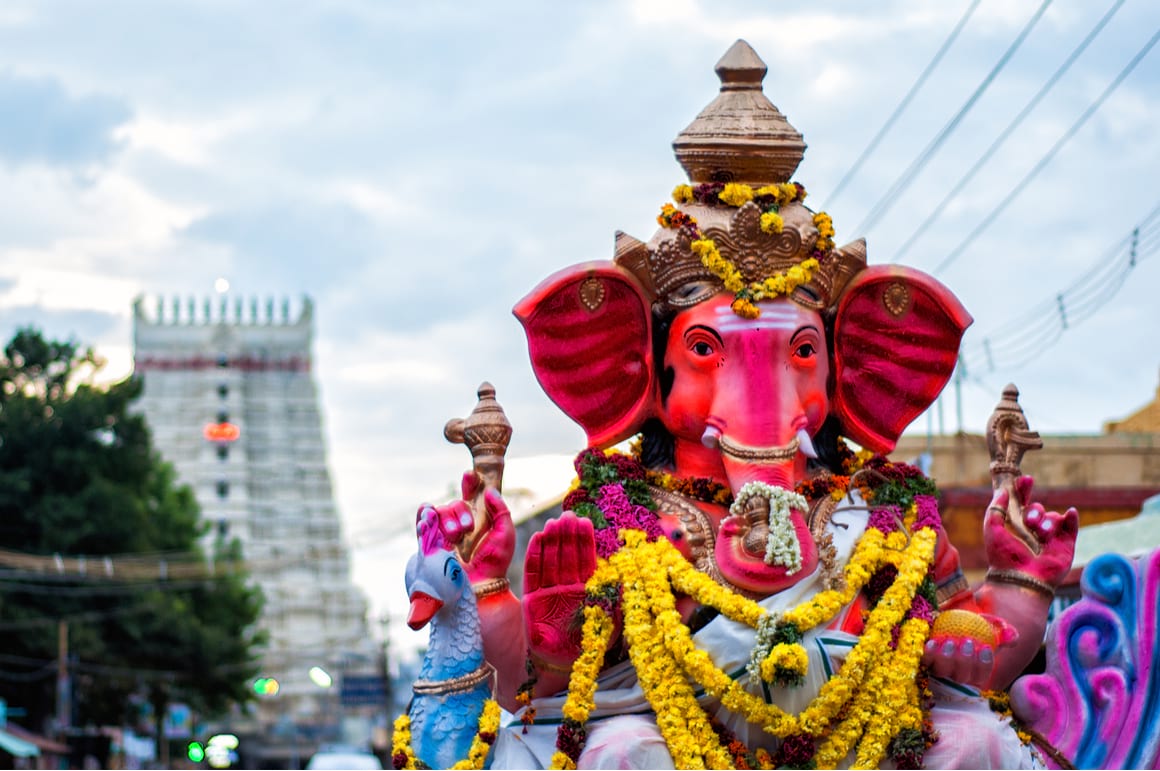
Also known as the Festival of Colors, Holi is one of the most popular festivals with tourists. This fun event erupts in a vibrant kaleidoscope of color as people take to the streets to throw colored powder on one another and shoot each other with water guns.
The festival celebrates the victory of good over evil and is a carefree and joyful celebration that includes street processions, dancing, and singing.
Brightness overcomes the dark in this celebration known as the Festival of Lights . This is the most anticipated festival of the year in India and typically falls in October or November.
Typically, the festival is celebrated over five days through the lighting of lamps, lanterns, and candles, as well as displays of fireworks. It’s a time of family gatherings, plentiful food, and the giving of gifts.
- Ganesh Festival :
The elephant-headed Hindu god, Ganesh, is the remover of obstacles from the lives of his followers. Every year in August/September, his followers celebrate his birth by displaying hand-crafted and beautifully decorated statues of him.
Over 10 days, these statues are worshipped and on the last day, they’re paraded through the streets before being submerged in the ocean.
While this festival is celebrated throughout all of India, Mumbai is the best place to experience it.
- Pushkar Camel Fair :
The small desert town of Pushkar in Rajasthan sees the arrival of thousands of brightly adorned camels and their owners arrive for the annual camel fair.
Originally, the festival began as a livestock market, but today, it’s a vibrant display of Rajasthani culture. Camel races, snake charmers, musicians, and dancers all vie for your attention over this two-week festival. There’s even a beauty pageant for camels.
- Carnival in Goa:
You’ve heard of the Carnival in Rio and Venice, but did you know that you can celebrate carnival in Goa? Masks, music, food, and fun take over Goa for four days every February. There’s a large street parade and plenty of fun to be had.
Krishna Janmashtami, or Govinda, is a celebration of the birthday of Lord Krishna. Celebrations vary from region to region and generally include traditional dances and street processions. In Mumbai, you can witness Dahi Handi in which groups form human pyramids to reach a clay pot filled with curd suspended high above them.
By now, you probably have a good idea of when you’d like to visit India. If you’re still not sure about the best time to visit India for the experience you’ve been dreaming of, check out this breakdown of each month of the year and what you can experience.
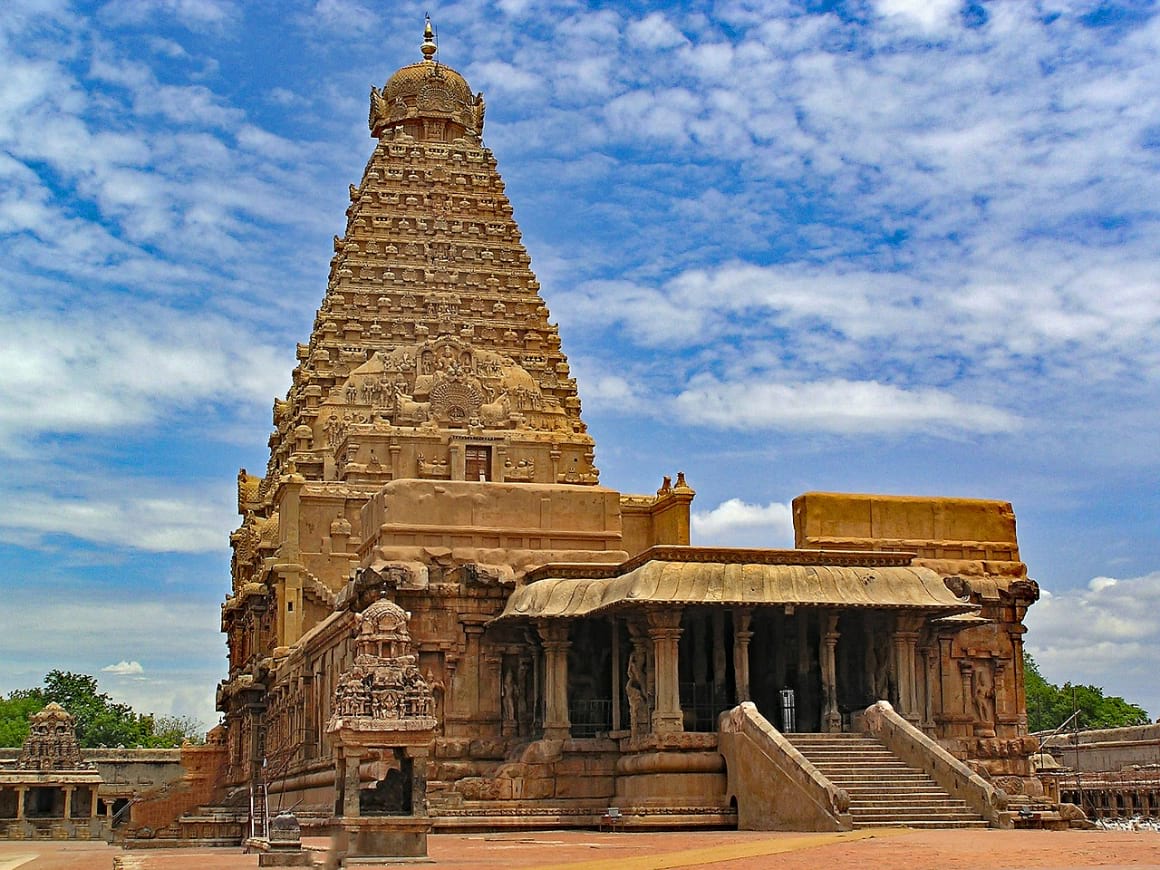
January in India
While it’s technically winter, daytime highs can be warm and pleasant for the most part. The south of the country is lovely and warm and humidity is low – perfect for sightseeing and being outdoors.
In the north, mornings and evenings can be quite cold, so pack something warm, but the daytime highs are mild and warm.
Because of these generally pleasant conditions, there are plenty of festivals and outdoor events throughout the country.
February in India
February’s weather is much the same as January’s for the most part. In the far north, snow and extreme weather can be expected. Overall, days are warm but not too hot, but a light jacket is handy for those chilly mornings and evenings.
These mild weather conditions are great for sightseeing, making this time of year popular with tourists. Of course, this does mean larger crowds and higher prices for accommodation.
March in India
Temperatures are starting to climb throughout the country. In the north, you might still need something warm to wear in the morning and evening, but in the south, you’re unlikely to need this. It’s more humid in the south, but rainfall is still unlikely.
As a result, peak season continues in the south with larger tourist numbers and higher prices. While in the north, most of the hordes have left and there is more availability and special offers on accommodation.
April in India
The heat arrives in earnest in the north, rising significantly over the course of the month. The humidity is rising as well, making temperatures feel even hotter. It’s now low season here, so if you’re headed to the north you’ll save on accommodation and have fewer other tourists to contend with.
In the south, there’s a sharp increase in humidity and temperatures. It’s considered shoulder season now, which means tourist numbers are lower, and accommodation prices less inflated.
May in India
The monsoons are not far off and the air is heavy with humidity. This makes the already high temperatures of around 40°C feel unbearable. In the south, brief downpours are not uncommon, while in the north the rain is still a few weeks off.
With the rains imminent, some tourist businesses close altogether. But if you’re visiting, hotels are cheap and tourist numbers are low.
June in India
In the north of the country, the rains start slowly , while in the south they arrive with force, affecting roads and impacting travel.
It’s hot and humid for the most part throughout the country, and the rains do little to cool things down.
Tourism is at its lowest as a result of the weather, so bargains on accommodation are plentiful.
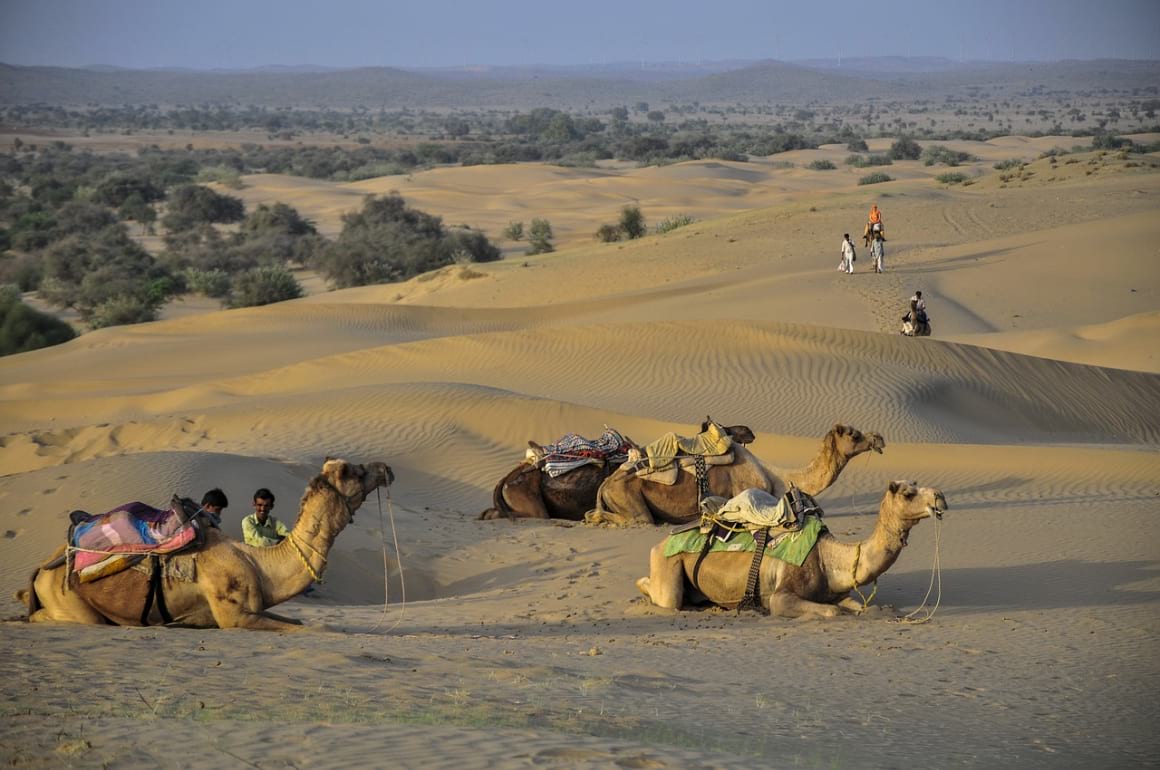
July in India
In the north, the monsoon has settled in , drenching the landscape for a few hours each day. Roads can be affected, and travel plans may have to be flexible at this time. It’s not as hot as June, but that’s not much consolation as temperatures and humidity are both still fairly high.
In the south, downpours cause occasional flooding , and storms are common along the coast.
August in India
It’s much wetter in the south at this time, and heavy downpours can affect roads and travel plans significantly. Temperatures are dropping slightly, which is a relief.
In the north, it’s still fairly hot, but humidity is lessening. While hotel rates here are at their cheapest, some tourist businesses may still be closed.
September in India
The monsoons in the north seem to be lessening and temperatures are falling as the approach to winter begins. In the south, rainfall is decreasing along the coast but still falling relentlessly in the central regions.
If you’re keen to visit at this time, you’ll benefit from low hotel prices and crowd-free conditions to compensate for the rainfall.
October in India
It’s shoulder season, and while the climate is a bit variable and inconsistent, you can still capitalize on lower hotel prices and enjoy some sightseeing without the peak season hordes.
Occasional rain is possible, but humidity and temperatures are significantly lower than in the previous months. Those tourist businesses that have been closed begin to reopen too.
Places like Chennai in the southeast are only now receiving the worst of the monsoon, so storms and downpours are to be expected there.
November in India
Ideal traveling weather has returned, which leads to an influx of tourists and inflated pricing on accommodation.
The rain in the north has stopped and the temperatures and humidity have fallen. Average daytime temperatures in the high 20s are pleasant for sightseeing and outdoor activities.
In the south, the occasional shower is possible in the first half of the month, but warm and dry conditions prevail for the most part.
December in India
December is one of the coolest months of the year overall. In the north, mornings and evenings can be quite cold, but daytime temperatures are mild. In the south, conditions are warm, not hot and dry.
Peak season kicks into high gear and tourist numbers skyrocket as do hotel prices. Christmas and New Year are particularly busy.

A new country, a new contract, a new piece of plastic – booooring. Instead, buy an eSIM!
An eSIM works just like an app: you buy it, you download it, and BOOM! You’re connected the minute you land. It’s that easy.
Is your phone eSIM ready? Read about how e-Sims work or click below to see one of the top eSIM providers on the market and ditch the plastic .
When is the Best Time to Go to Rajasthan?
The arid region of Rajasthan is best visited between November and February. This is the wintertime and offers much milder temperatures. As a result, many festivals and celebrations are held at this time, and tourist numbers skyrocket.
When is the Rainy Season in India?
The summer monsoon season arrives for most of India in June and lingers until September. This season is characterized by heavy downpours and high humidity. In the southeast of India, the monsoons arrive in October and last through to December.
When is the Coldest Month in India?
December and January are the coldest months of the year in India. In central and southern India, this means daily maximums peaking in the mid-20s. In the mountain regions, temperatures can get much cooler, especially in the evenings and early mornings.
When is the Worst Time to Visit India?
In the summer months, India experiences intense heat and humidity, as well as the monsoon rains. While this is the cheapest time to visit India, it’s not a great time to visit for sightseeing as many tourist businesses close altogether, and many roads become inaccessible.
Don’t Forget your India Travel Insurance
ALWAYS sort out your backpacker insurance before your trip. There’s plenty to choose from in that department, but a good place to start is Safety Wing .
They offer month-to-month payments, no lock-in contracts, and require absolutely no itineraries: that’s the exact kind of insurance long-term travellers and digital nomads need.

SafetyWing is cheap, easy, and admin-free: just sign up lickety-split so you can get back to it!
Click the button below to learn more about SafetyWing’s setup or read our insider review for the full tasty scoop.
Truly exploring India is not something you can achieve in one visit. There’s so much to explore and take in here that narrowing down what to experience on your trip can be difficult.
Choosing the best time to visit India should pose a less challenging task. It really all depends on where you’re headed and what you wish to experience. Whether you choose to chase the good weather or find that happy balance between crowds and costs, you’ll be richly rewarded.
Any visit to India is likely to leave you with a desire to return to explore more and uncover more layers of this fascinating country.
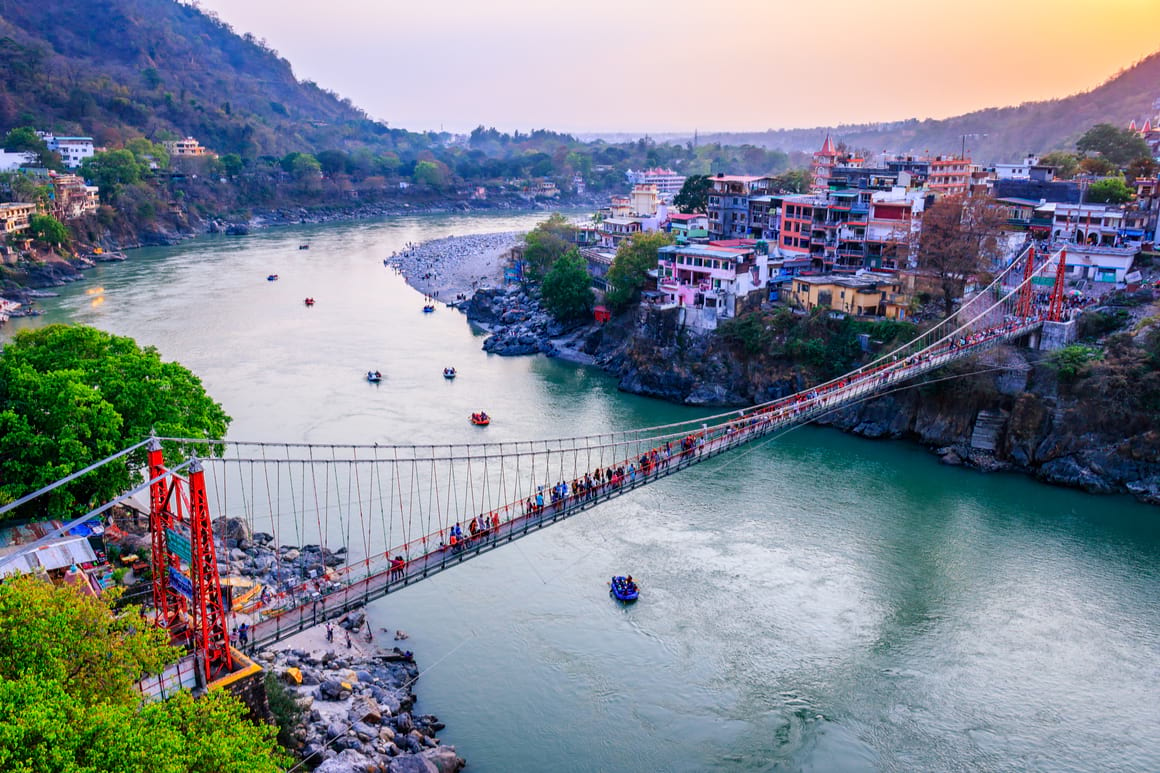
- Check out the best hostels in Delhi to kickstart your Indian adventure.
- Know where to stay in Goa BEFORE you get there… trust me on this one.
- With the best sim card for India you can stay connected, always.
- Widen horizons, breathe deeply, recharge and reset at a yoga retreat in India .
- Explore some of the best islands in India to experience something a lil’ different.
- Let’s get you ready for your next adventure with our backpacking Pakistan guide .

And for transparency’s sake, please know that some of the links in our content are affiliate links . That means that if you book your accommodation, buy your gear, or sort your insurance through our link, we earn a small commission (at no extra cost to you). That said, we only link to the gear we trust and never recommend services we don’t believe are up to scratch. Again, thank you!
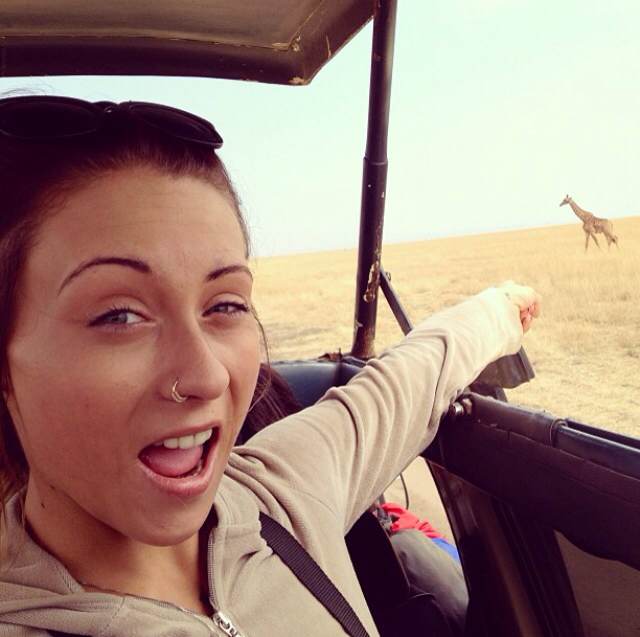
Suzanne Borders
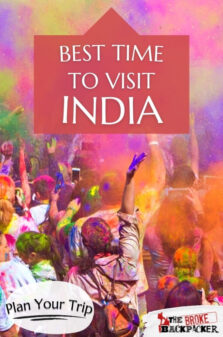
Share or save this post

Leave a Reply Cancel reply
Your email address will not be published. Required fields are marked *
Save my name, email, and website in this browser for the next time I comment.
Notify me of followup comments via e-mail.
The Best Time to Visit India for Weather, Safety, & Tourism
The best times to visit India for ideal weather are
November 5th to February 25th
based on average temperature and humidity from NOAA (the National Oceanic and Atmospheric Administration). Read below for more weather and travel details.
India Travel Guide
Temperature.
- Perceived Temperature
- Rain and snow
- Humidity and wind
- The busiest and least popular months
- Overall travel experience by time of year
Other India Travel Info
Weather in india.
Average temperatures in India vary somewhat. Considering humidity, temperatures feel hot for most of the year with a low chance of precipitation most of the year. The area is less temperate than some — in the 37th percentile for pleasant weather — compared to tourist destinations worldwide. Weeks with ideal weather are listed above . If you’re looking for the very warmest time to visit India, the hottest months are May, June, and then April. See average monthly temperatures below. The warmest time of year is generally late May where highs are regularly around 100.1°F (37.8°C) with temperatures rarely dropping below 78.7°F (25.9°C) at night.
India Temperatures (Fahrenheit)
India temperatures (celsius), “feels-like” temperatures.
The way we experience weather isn’t all about temperature. Higher temperatures affect us much more at higher humidity, and colder temperatures feel piercing with high winds. Our perceived temperatures factor in humidity and wind chill to better represent how hot or cold the day feels to a person.
India Perceived Temperature (F)
India perceived temperature (c), average india temperatures by month.
Daily highs (averaged for the month) usually give the best indication of the weather. A significantly lower mean and low generally just means it gets colder at night.
Show Fahrenheit
Show celsius, precipitation (rain or snow).
If dry weather is what you’re after, the months with the lowest chance of significant precipitation in India are January, February, and then March. Note that we define “significant precipitation” as .1 inches or more in this section. The lowest chance of rain or snow occurs around late January and early February. For example, on the week of January 29th there are no days of precipitation on average. By contrast, it’s most likely to rain or snow in late July with an average of 3 days of significant precipitation the week of July 23rd.
Chance of Precipitation
The graph below shows the % chance of rainy and snowy days in India.
Snow on the Ground
The graph below shows the average snow on the ground in India (in).
Average Rain and Snow by Month
Show inches, show centimeters, humidity and wind.
India has some very humid months, with other moderately humid months on the other side of the year. The least humid month is April (46% relative humidity), and the most humid month is August (76.2%).
Wind in India is usually extremely calm . The windiest month is June, followed by July and May. June’s average wind speed of around 4.7 knots (5.4 MPH or 8.6 KPH) is considered “a light breeze.” Maximum sustained winds (the highest speed for the day lasting more than a few moments) are at their highest in mid June where average top sustained speeds reach 8.8 knots, which is considered a gentle breeze.
Relative Humidity (%)
The graph below shows the average % humidity by month in India.
The graph below shows wind speed (max and average) in knots.
Average Wind Speeds
Show wind speeds.
All wind speeds are in knots. 1 knot = 1.15 MPH or 1.85 KPH.
Show Relative Humidity by Month
Is it safe to travel to india.
Our best data indicates this area is somewhat safe, but with extra warnings in a few regions. As of Dec 04, 2023 there are travel warnings and regional advisories for India; exercise a high degree of caution and avoid some areas. Check this page for any recent changes or regions to avoid: Travel Advice and Advisories . This advisory was last updated on Dec 01, 2023.
The Busiest and Least Crowded Months
The busiest month for tourism in India is December, followed by June and August. Prices for hotels and flights will be most expensive during these months, though you can save if you purchase well in advance. Tourists are unlikely to visit India in February. Those willing to visit at these times will likely find it the least expensive month.
Estimated Tourism by Month
Most popular months to visit, overall india travel experience by season, spring (march through may).
Humidity and temperatures combine to make this season feel very warm. Highs range from 100.1°F (37.8°C) and 88.6°F (31.4°C) with warmer temperatures in the later months. Rain is rare with 1 to 3 days of significant precipitation per month. Spring is fairly slow for tourism, which makes it a good time for those looking for deals.
Summer (June through August)
The middle-year months have very comfortable weather with high temperatures that are quite warm. These months see the most precipitation with 7 to 11 days of precipitation per month. June – August is the busiest season for tourism in India, so lodging and other accommodations may cost more than usual.
Fall (September through November)
Fall daily highs range from 91.6°F (33.1°C) and 84.8°F (29.3°C), which will feel very nice given the humidity and wind. It rains or snows a significant amount: 3 to 8 days per month. Tourism is the slowest during these months due to the weather, so hotels may be affordably priced.
Winter (December through February)
Weather is perfect this time of year in India to be enjoyable for warm weather travelers. The average high during this season is between 88.6°F (31.4°C) and 78.9°F (26.1°C). On average, it rains or snows a smalll amount: consistently 1 times per month. These times of year are the second busiest with tourists.
Best Times to Travel › India
Similar Destinations
- Akola, India
- The Plains, India
- Wardha, India
- Burhanpur, India
- Adilabad, India
- Nanded, India
- Nagpur, India
- Parbhani, India
- Khandwa, India
- Bhusawal, India
Popular Destinations
- Cha-am, Thailand
- New Orleans, LA, US
- Hanoi, Vietnam

Want to save time & money on your next India trip?
Check out the list of travel hacks learned after +4 years in India
Best Time to Visit India: The Ultimate Guide for Prepared Travelers
Hey there, fellow travelers! You’ve come to the right place if you dream of exploring India’s colors, chaos, and charisma. As an American digital nomad who’s traveled in India for over 4 years, I’m here to spill the beans on the best times to visit this enchanting country for all my fellow globetrotters.
What is the best time to visit India? The best time to visit India is in the winter, from late November to early March. The weather is mild and sunny, with average temperatures ranging from 15-25 degrees Celsius (60-77 degrees Fahrenheit). This is a great time to visit tourist destinations like Agra, Jaipur, Delhi, Mumbai, Varanasi, and Udaipur.
Don’t miss out on this full article because going to a destination at the wrong time of year could mean you miss out. Or you could be wasting your money if your trip gets canceled. I learned the hard way about this when I had to cancel expensive trips to Himachal because of monsoon flooding.
But don’t worry. You can avoid these mistakes by reading about the best times to visit India’s most popular tourist destinations. Then I’ll go month-by-month, sharing the best destinations to visit.
So buckle up, pack your bags, and dive into India’s mesmerizing world.
Planning a trip to India at some point? Check out my free ebook to help you save time and money, and avoid headaches. After +4 years in India, I’ve made plenty of mistakes, and this guide shares what I’ve learned so you can have a smoother trip.
Average Temperatures and Rainfall For India’s Most Popular Destinations
Here’s a quick chart with average temperature and rainfall for the best destinations in India.
Read more: The Best Time To Visit South India
The best times to visit india’s popular destinations.
My dear friends, India is a country that lures you with its bewitching charm. Its rich tapestry of cultures, traditions, and landscapes captivates hearts worldwide. But before you embark on this unforgettable journey, timing is everything.
What’s The Best Time To Visit Delhi?
Ah, Delhi – the bustling capital city where history whispers in your ear while modernity buzzes around you.
For my fellow Americans and Europeans, the best time to explore this ancient wonder is from October to March . The weather is cooler, making it easier to roam around the marvelous Red Fort or admire the intricate carvings at Humayun’s Tomb.
But beware, the unforgiving sun might turn you into a human barbecue during May and June ! India’s heat waves are getting hotter year by year too.
I went to Delhi in May and experienced the brutal heat. I could only enjoy tourist sites in the morning and evening, yet I still tried to make due and did an epic street food tour. If you try this, take the metro for air-conditioned breaks from place to place.
- Best Times To Visit Delhi: October to Match
- Worst Times To Visit Delhi: May and June
- Must-See Events: Lohri, India’s Bonfire Festival is in mid-January
- Highlights: The Red Fort, Humayun’s Tomb, India Gate, & Street Food
- Pro Tip: Head into Old Delhi to try Mughal food at Karim’s. I tried the Nahari (stewed lamb) and almost passed out from the amazing flavors.
Read more: How To Avoid Mosquito Season When Traveling To New Delhi
What’s the best time to visit mumbai.
Welcome to Mumbai, the city that never sleeps! To avoid the monsoon madness, you’ll want to head here between November and February as a foreign traveler. Stroll along the iconic Marine Drive or take a peek into the glamorous world of Bollywood.
However, during the monsoon season from June to September , getting caught in a Mumbai downpour might seem like a wild adventure, but trust me, it’s better to stay dry.
I visited Mumbai in April, and it was getting pretty hot, but I still had a great time. I tried to hit the main spots like the Gateway of India early. I got scorched while visiting the Elephanta Caves since the boat ride doesn’t have air-con. Marine Drive gets decent wind off the bay, though, so it’s a nice walk in the morning or night.
- Best Times To Visit Mumbai: November to February
- Worst Times To Visit Mumbai: June to September
- Must-See Events: Ganesh Chaturthi is the main festival in Mumbai, and it’s in mid-September. It is complete with locals carrying the elephant god Ganesh around.
- Highlights: Elephanta Caves, Gateway of India, Marine Drive, & Street Food at Juhu Beach
- Pro Tip: Stay in the Fort area. It’s cheaper than Colaba, yet you can walk or take taxis to the main destinations like the Gateway of India or Marine Drive.
Want to visit Mumbai from home? Check out the best 360-degree virtual reality tours of Mumbai
What’s the best time to visit the himalayas in india.
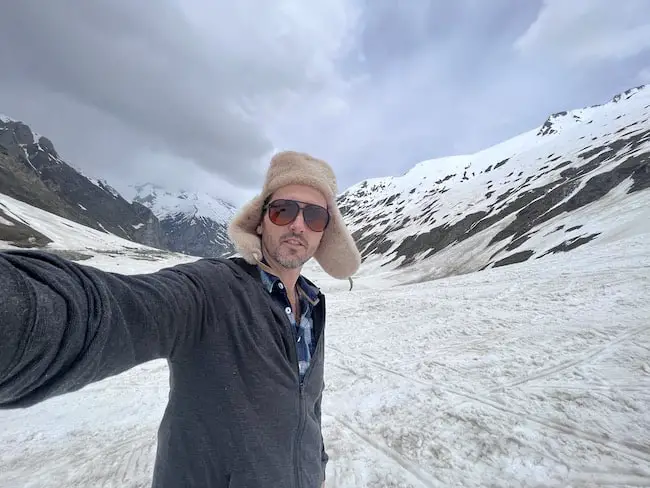
Calling all my fellow nature enthusiasts – the Himalayas beckon you! You can visit the snowcapped peaks of Jammu, Kashmir, and Ladakh for unforgettable alpine memories. Hike the flowering meadows and summit the peaks to view slumbering mountains that pilgrims have visited for centuries.
The best time to experience the breathtaking beauty of these mountainous areas is from June to July while the summer is in full swing. Due to the high altitudes, the passes sometimes won’t open until the temperatures rise at this time.
You can trek through picturesque trails, get lost in meditation at serene monasteries, and experience the magic of snowfall during the winter months. But be cautious from December to February ; the chill might leave you shivering like a leaf.
I visited Srinagar in June and Leh, Ladakh in July, which was the perfect time. It was still a bit cold. You’ll need a light jacket (sometimes a heavy one if it rains). You can buy jackets on the street here for cheap. But the highways were open, and it was epic.
- Best Times To Visit the Himalayas: May to July
- Worst Times To Visit Himalayas: December to February
- Must-See Events: Hemis Festival is organized in June to celebrate the birthday of the founder of Tantric Buddhism. Head to Ladakh to see monks dressed in colorful robes and masks while performing a beautiful dance.
- Highlights: Rent a houseboat on Nigeen Lake in Srinagar, Walk the central market in Leh
- Pro Tip: Taxis are expensive, and there’s no Uber here, so budget more for transport. If you have time, take shared cabs to save. You must also get a SIM card for these states, so prep with an eSIM . Look out for monsoon warnings as well.
Read more: Should You Actually Not Travel To India? Here Are The Reasons To Not Visit India
What’s the best time to visit rajasthan.
To my new travel friends, let’s explore the cultural wonders of the desert of Rajasthan!
For Indian travelers, from October to March , the vibrant festivities, intricate palaces, and golden deserts will leave you awe-inspired. As a foreign traveler, you’ll love this time too, as the temperature drops to a more manageable level.
However, if you visit during May and June , you’ll probably wonder if you’ve been transported to the sun’s surface.
I visited Jaipur in May, and it was rough. I walked to the top of the Amber Fort like a marathon. Temps were over 100 degrees Fahrenheit (+40 degrees Celsius). I survived but paid more for taxis because I was desperate to escape the heat. I stayed at a homestay with an amazing air-con and a once-royal family, which was a highlight.
- Best Times To Visit the Rajasthan: October to March
- Worst Times To Visit Rajasthan: December to February, June to August
- Must-See Events: The Pushkar Camel Fair runs for 5 days in October or November, and you can see the world’s biggest camel and livestock trading fair. Great for photographers!
- Highlights: Amber Palace, City Palace, Elephants, Hawa Mahal
- Pro Tip: Splurge on the premium tour of the City Palace to get access to some of the coolest rooms I’ve ever seen. This is the palace of the rulers of Jaipur and there’s a room covered in mirrors, and the other one’s completely blue. It’s expensive but worth it for the service and Instagram-worthy spots.
Read more: The Best Places for Photography in India
What’s the best time to visit kolkata.
Are you craving some cultural indulgence? Then Kolkata is your go-to destination from November to February. The pleasant weather lets you relish the city’s artistic side, from grand colonial architecture to soul-stirring music and dance performances.
Avoid visiting from March to June ; the intense heat might make you long for an iceberg to cuddle.
I came in October, and the temps were hot but not terrible. Kolkata has a solid metro, and I was nearby to explore the city via air-con. I also had a $350 Airbnb with air-con out in the suburbs but the metro made it manageable.
- Best Times To Visit Kolkata: November to February
- Worst Times To Visit Kolkata: March to June
- Must-See Events: Durga Puja is the largest West Bengal festival in September or October. It honors Mother Durga, and you’ll see plenty of festivities surrounding blue-faced female gods holding men’s heads in her arms.
- Highlights: Victoria Memorial, Howrah Bridge, oldest Indian history museum
- Pro Tip: Take the street food tour by A Chef’s Tour to sample dishes from local hotspots. Each destination had over 100 years of history.
Read more: Does India Celebrate Christmas?
What’s the best time to visit kerala.
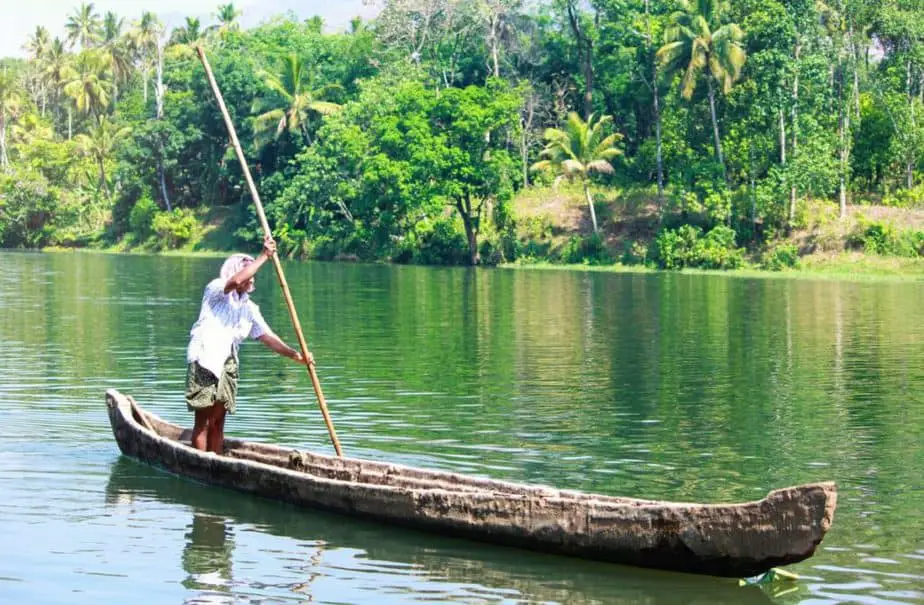
Kerala’s charm is irresistible, and is a great place for travelers new to India to start. There’s a bit less of that iconic Indian chaos here so you could start in the oceanside city of Kochi.
From September to March , the backwaters, tea plantations, and pristine beaches welcome you with open arms. Embrace the laid-back vibes and immerse yourself in the enchanting landscapes.
But remember, from June to Augus t, Kerala’s monsoons could put Noah’s Ark to shame.
My mom, aunt, and I visited in April, which was manageable even for us wimpy foreigners. The ocean breezes make it manageable. I suggest staying in the Fort Kochi area, and we had a $ 50-per-night first-class hotel with a solid pool. You’ll want to try some great oceanside restaurants in the area.
- Best Times To Visit Kerala: September to March
- Worst Times To Visit Kerala: June to August
- Must-See Events: Onam is the largest festival in Kerala, held in August and September for 10 days. Come to see colorful costumed dancing, boat races, and a parade of elephants dressed to the nines.
- Highlights: Backwater trip, Fort Kochi walks, Ferry ride
- Pro Tip: Beef is an option with the large Christian population, but I wouldn’t recommend it. I’ve never had decent beef in India, yet the seafood here is amazing.
What’s the Best Time To Visit Goa?
Time to answer: When should I visit Goa? Goa is the ultimate budget-friendly beach destination for you between November and March . Picture this: golden beaches, palm trees swaying to the music, and the azure waters of the Arabian Sea inviting you for a dip. Plus, all the live music and parties until early morning!
But your beach party might become a mud wrestling match during the June to September monsoon season as Goa gets more rain than most of India.
I stayed in Goa from January to April on a couple of trips. I went without air-con in April and managed but I wouldn’t recommend it for a new traveler. Check out Arambol for great nightlife options and a chill vibe. Or Morjim is even quieter, and I found an Airbnb for less than $400 per month with AC, a kitchen, and a relaxed porch.
- Best Times To Visit Goa: November through March
- Worst Times To Visit Goa: June through September
- Must-See Events: For 40 days in February and March, Goa Carnival will have you dancing alongside colorful floats, costumes, and dances. Goa has many Christians, and this festival has been celebrated for over 500 years.
- Highlights: Arambol’s live music, coworking spaces, Dudhsagar waterfall, watersports
- Pro Tip: Avoid New Year’s for fewer crowds and better prices.
Read more: Common Tourist Scams in Goa
What’s the best time to visit varanasi.

For my fellow travelers seeking spiritual enlightenment, Varanasi is calling you from October to March . This sacred city on the banks of the Ganges offers a glimpse into ancient rituals and a chance to find inner peace.
Yet, the scorching months of May and June might test your spiritual resolve with their relentless heat.
My mom and aunt and I went in April, and the temperatures were getting hot. We managed with an air-conditioned room no the Ganges right in the heart of the alleys. You’re in the shade often with the historic winding alleys. But the rooms are older so the air-con was a bit weak.
- Best Times To Visit Varanasi: October to March
- Worst Times To Visit Varanasi: May and June
- Must-See Events: Ganga Mahotsav is a festival honoring Mother Ganga, the sacred river for Hindus. For 5 days in October and November, you’ll see even more pilgrims bathing in the waters, followed by music and dance.
- Highlights: Morning Ganga boat ride, burning ghats, Ganga aarti, street food
- Pro Tip: Book a boat tour on Viator for a premium tour. You want a guy well-versed in what foreigners will want to know as this is one of the best destinations in India, and the history is important to getting enjoyment out of meeting locals and the lore of other Hindu destinations.
Read more: Travel Tips for First-Time Travelers To Varanasi
What’s the best time to visit bangalore.
You’re in for a treat! The Garden City of India, Bangalore, has amazing weather from October to February to make you fall in love with this tech-savvy city. Enjoy the lush gardens, bustling markets, and vibrant nightlife.
Avoid March to May , when the heat might remind you of a sauna without the relaxation.
I visited Bangalore in February and March, and it’s starting to get hot. Staying near the metro is a cheat you want to do to get around easier.
- Best Times To Visit Bangalore: October to February
- Worst Times To Visit Bangalore: March to May
- Must-See Events: The oldest festival in Bangalore is Karaga Festival in March or April. It is a celebration of Goddess Shakti and lasts for 9 days. A karaga is an earth-made pot that devotees decorate and carry on their heads.
- Highlights: Lalbagh Botanical Gardens, ISKCON Temple, Cubbon Park, podi masala dosas
- Pro Tip: Book a room near the metro for easy transport, as traffic could have stuck for an hour or so during peak times.
Read more: Is Bangalore Better Than Chennai?
What’s the best time to visit chennai.
Chennai is the land of temples and traditions, and you’ll best enjoy your time from November to February . Explore the city’s magnificent temples, savor spicy delicacies, and witness classical dance performances.
But beware of the hot and humid months from March to June , as they might turn your energy levels into a melting popsicle.
I’ve been to Chennai multiple times, and you want to visit in December or January. The summers are brutal here. Visiting during June and July is possible because the monsoon is often later here. But it will be hot. The beach isn’t swimmable with the currents. But you can head south to Pondicherry for a smaller more chill destination (with cheap French cuisine).
- Best Times To Visit Chennai: November to February
- Worst Times To Visit Chennai: March to June
- Must-See Events: The main festival in Chennai is the harvest festival of Pongal. For 5 days in January, you’ll see parades, mandalas in front of doors, and locals eating the dish Pongal.
- Highlights: Kapaleeshwara Temple, Arulmiju Sri Parthasarathy Perumal Temple, Marina Beach
- Pro Tip: Stay in a modern neighborhood like Adyar or Besant Nagar. If you can find a spot near the metro, that is also good. I’d avoid older areas near Marina Beach if you’re new to India.

Read more: What Are Other Great Times To Visit Chennai?
The best times to visit india: a month-by-month breakdown, january: a splash of festivities.

January kicks off the year with a burst of colors and festivities. Head to Agra to witness the magnificent Taj Mahal during sunrise, and while you’re there, explore the historic Agra Fort too. If you crave the desert’s allure, head west to the Rann of Kutch for the Rann Utsav, where the salt marshes transform into a cultural wonderland.
Best Festival in January in India: Head south to Chennai and Tamil Nadu for the Pongal Festival. It is a celebration of the harvest!
February: Love and Festivities
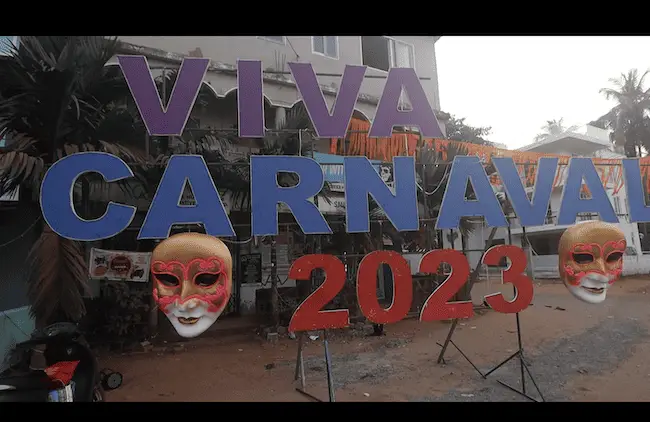
Ah, February the month of love and merriment! Spend Valentine’s Day in Jaipur , the Pink City, and be mesmerized by its majestic palaces and forts. If you’d rather party than swoon, Goa awaits you with its vibrant beach festivals and thrilling water sports.
Best Festival in February in India: Goa’s Carnival often hits around this time, offering you the chance to dance in the streets with locals as parades pass by.
March: Embrace the Spring

As the winter chill bids farewell, March welcomes you pleasantly. Head to Dharamshala in Himachal Pradesh, where the serenity of the Dalai Lama’s residence combines with the beautiful weather for a soul-soothing experience. Visit the historical attractions in Delhi, like the Red Fort and Humayun’s Tomb, as the crowds leave before the temperatures creep up too high.
Best Festival in March in India: Holi is also celebrated at this time, and Delhi’s a great time to mix with the crowds and the colors if you want a one-of-a-kind experience.
April: Revel in Traditions
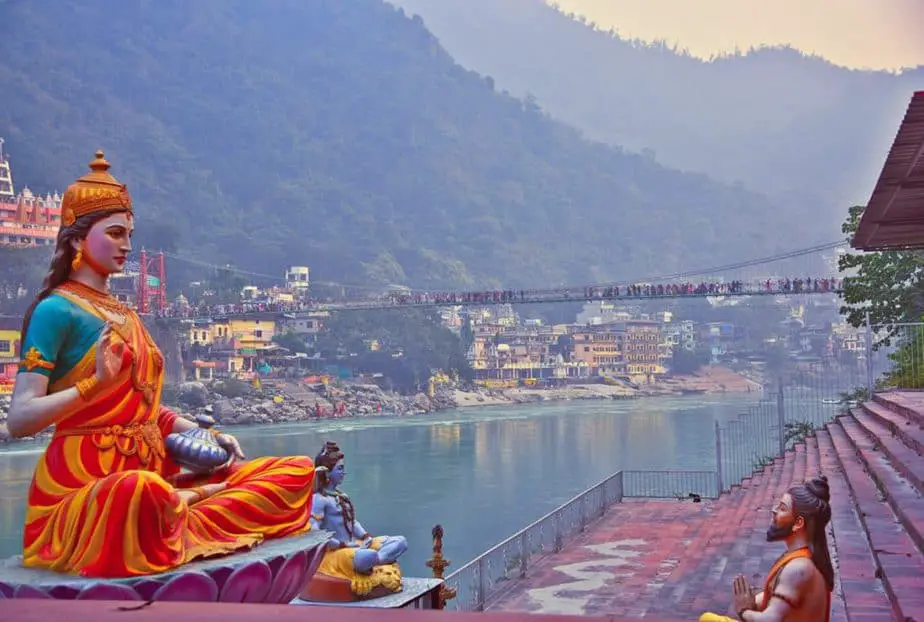
In April, Rishikesh , the Yoga Capital of the World, welcomes you with open arms. Engage in yoga and meditation retreats, and the Ganges River flows serenely. Visit Manali in Himachal Pradesh.
Or set sail for the Andaman Islands , where some of Asia’s more pristine beaches and mesmerizing marine life will leave you breathless. Most people don’t know this hotspot pristine is a part of India!
Best Festival in April in India: Varanasi’s Ram Navami celebrations will take you on a spiritual journey like no other.
May: Mountains and Serenity
May, the onset of summer, brings a chance to trek through the flowering meadows surrounding Dal Lake in Kashmir . Don’t forget to rent a houseboat for a few nights on the quieter Nigeen Lake. You can enjoy your morning tea listening to bullfrogs and looking at the snow-capped Himalayas.
Head to Munnar in Kerala for a calmer vibe, where lush tea gardens create a green paradise.
Best Festival in May in India: Kerala’s Thrissur Pooram festival will immerse you in a more peaceful cultural extravaganza of elephants, parasols, and drumming.
June: Islands and Coasts
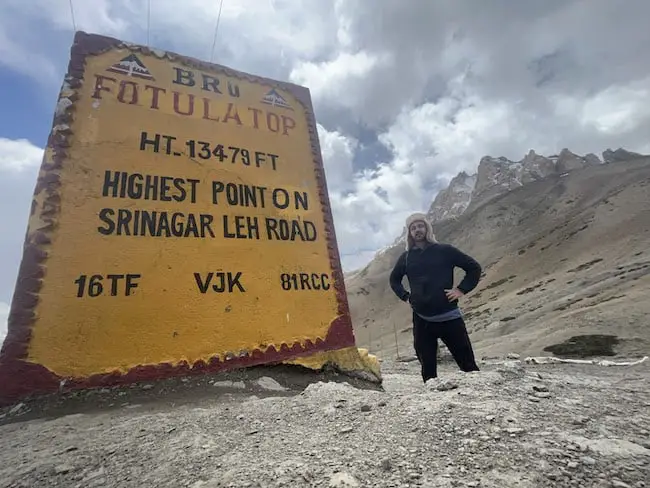
June has given the mountain passes a chance to thaw, allowing you to escape the heat in the cool embrace of Ladakh’s stunning landscapes. Attend Buddhist festivals or hire a motorcycle and immerse yourself in the mystical charm of this high-altitude wonderland.
Alternatively, get lost in the lush hills of Coorg, Karnataka , and discover the tranquility of coffee plantations.
Best Festival in June in India: Shimla’s Summer Festival celebrates the harvest and draws crowds in Himachal Pradesh’s capital.
July: Monsoon Magic
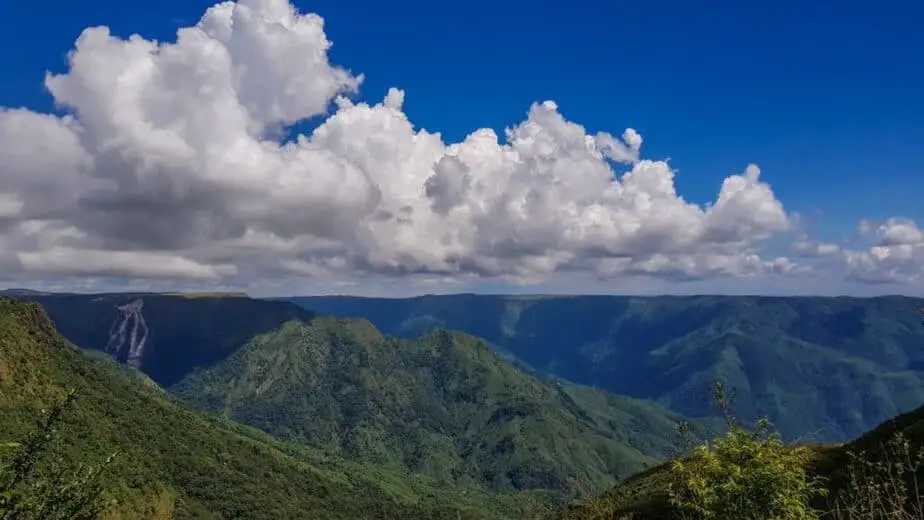
July brings monsoon magic to Shillong , “The Scotland of the East.” Embrace the rain and the beauty of cascading waterfalls amidst rolling hills. The Valley of Flowers in Uttarakhand is also blooming after some pre-monsoon showers have washed through. Come to experience the colorful blooms while surrounded by mountains.
Best Festival in July in India: Global Mango Festival in Delhi, where you can taste up to 500 of India’s famous mangoes.
August: Hills and Festivals
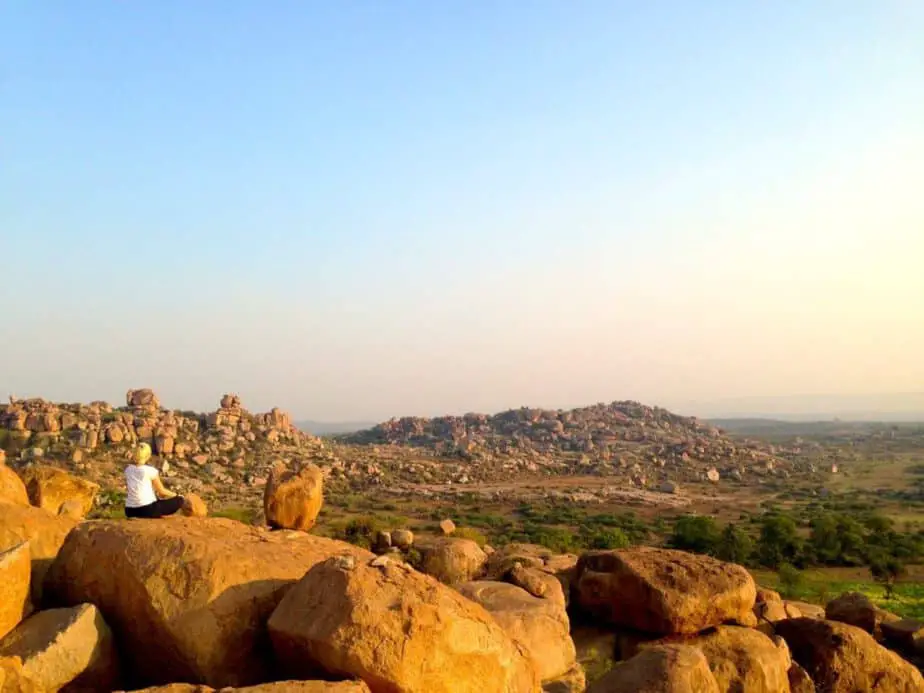
August offers a delightful escape to Kodaikanal in Tamil Nadu , where misty hills and stunning waterfalls will enchant you. Alternatively, explore the ancient ruins of Hampi, Karnataka , as the weather remains pleasant.
Best Festival in August in India: Experience the grand Teej festival in Udaipur, Rajasthan , where the city’s palaces light up with celebrations.
September: Festive Spirit
View this post on Instagram A post shared by गणेशा गजानन | INDIA 🇮🇳 (@ganesha_gajanan)
In September, Varanasi comes alive with the grand Ganga Mahotsav festival, where the Ganges River is adorned with twinkling lamps. Experience the traditional charm of Mysore during its grand Dasara celebrations.
Best Festival in September in India: Ganesh Chaturthi is celebrated in a big way in Mumbai. You can find smaller celebrations across Maharashtra, Karnataka and Telangana.
October: Camel Fairs and Durga Puja
View this post on Instagram A post shared by JourneyMart (@journeymart_diaries)
October is a time for cultural extravaganzas! For an offbeat destination, head to the East Indian state of Arunachal Pradesh . Here you’ll find the village of Ziro for a slower-paced trip with rice paddies surrounding the town and the lush meadows growing after the monsoon. Darjeeling , the “queen of the hills” is another place to visit after India’s monsoon for views of lush valleys and some of the best tea in the world.
Best Festival in October in India: Kolkata dazzles with its grand Durga Puja celebrations, transforming the city into a colorful wonderland.
November: Majestic Monuments and Art Festivals
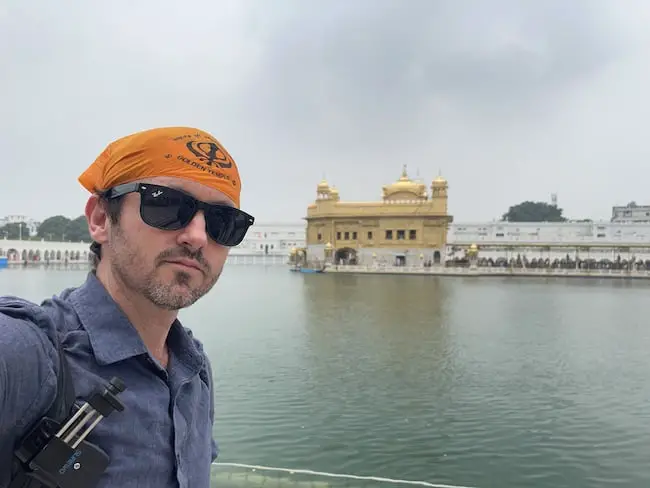
November invites you to Amritsar , Punjab, to visit the awe-inspiring Golden Temple and witness the spirited Wagah Border ceremony. In Mumbai , attend the Kala Ghoda Arts Festival and immerse yourself in India’s vibrant art scene.
Best Festival in November in India: Head to Pushkar, Rajasthan , for the famous Pushkar Camel Fair, where vibrant festivities await you.
December: Beaches and Music
View this post on Instagram A post shared by Temple Of India (@temple.of.india)
December is the time for sun, sand, and celebrations in Goa ! Embrace the Christmas and New Year festivities on the golden beaches. Alternatively, immerse yourself in the soulful music and dance performances of the Margazhi festival in Chennai .
Best Festival in December in India: Check out the Konark Dance Festival to watch local dancers wow you as you watch the sunset with the historical Sun Temple of Konark in the background.
Which is the best month to visit India?
The best month to visit India is generally December. The weather is warm and sunny, with pleasant temperatures around 15-25 degrees Celsius (59-77 degrees Fahrenheit). You can head to Goa for the Christmas parties or Delhi to explore the historical attractions. January is also very popular. October and November or February and March have fewer tourists and pleasant weather. Head to the mountains or hill stations in April thru July for pleasant temperatures.
What is the tourist season in India?
The tourist season in India is typically from October to March when the weather is mild and sunny. This is the time of year when most tourists visit India, as the weather is ideal for sightseeing, exploring different cultures, and participating in outdoor activities. For mountainous destinations like Ladakh, you can head in May through July after the mountain passes have thawed.
Which month is coldest in India?
The coldest month in India is January. The average temperature in January ranges from 10-15 degrees Celsius (50-59 degrees Fahrenheit) in the northern states to 20-25 degrees Celsius (68-77 degrees Fahrenheit) in the southern states. The lowest temperatures occur in the Indian Himalayas, where the average temperature in January can be as low as -10 degrees Celsius (14 degrees Fahrenheit).
Which month is costly for Goa?
The most expensive month for Goa is December. This is because December is the peak tourist season in Goa, and the demand for accommodation, flights, and other services is high. In Goa, the weather is pleasant in December, with average temperatures ranging from 25-30 degrees Celsius (77-86 degrees Fahrenheit). Many festivals and events are held in Goa in December, such as the Christmas and New Year’s Eve celebrations.
Is Goa cheaper than Thailand?
Goa is significantly cheaper than Thailand.
- Accommodation: A hostel bed in Goa costs around ₹500 (US$6.50) per night, while a hostel bed in Thailand costs around ฿200 (US$6.30) per night.
- Food: A meal in a local restaurant in Goa costs around ₹100 (US$1.30), while a meal in a local restaurant in Thailand costs around ฿50 (US$1.60).
- Activities: A day trip to a nearby beach in Goa costs around ₹500 (US$6.50), while a day trip to a nearby beach in Thailand costs around ฿300 (US$9.90).
What is off-season in Goa?
The off-season in Goa is the monsoon season, which runs from June to September. During this time, the weather is hot and humid, with around 3 meters (9.8 feet) of rain. The beaches are also closed due to the rough seas. But prices are lower, crowds are nonexistent, and the forests are lush.
Final Thoughts
So there you have it, fellow travelers! India’s magic knows no bounds, but the timing of your visit can truly enhance your experience. Each month, from the majestic mountains to the sun-kissed beaches and the ancient temples to the modern cities, unveils a unique side of India’s kaleidoscope.
If you’re looking for a truly unforgettable travel experience, the best time to visit India is during the winter months of late November to early March. To avoid crowds, you can check out fall in October to November or spring in March or April, but the temperatures will climb.
Remember, whether you’re coming from America, Europe, Australia, or India, your journey to India will leave an indelible mark on your soul. Embrace the diversity, savor the culture, and prepare for a rollercoaster of emotions. And when you return, just like me, you’ll find yourself planning your next Indian adventure! Bon voyage, my friends!
Benjamin Jenks
Traveler, Filmmaker, and Lover of India. I've been living, writing and sharing what I've learned about traveling in India since 2018. Learn more about me here or Youtube .
Recent Posts
4 Ways To Get A Local SIM Card in India for Tourists
Using a local SIM card in India can cost $3 to $7 a month and save you hundreds of dollars. However, it’s more difficult to get one in 2024, and they don’t work for every type of foreign...
13 Reasons To Not Visit India: Truths Every Traveler Should Know
There are many reasons to visit India. From the colorful historical traditions, spiritual retreats, and healthy yoga courses, India is a dream destination for many. I’ve personally...
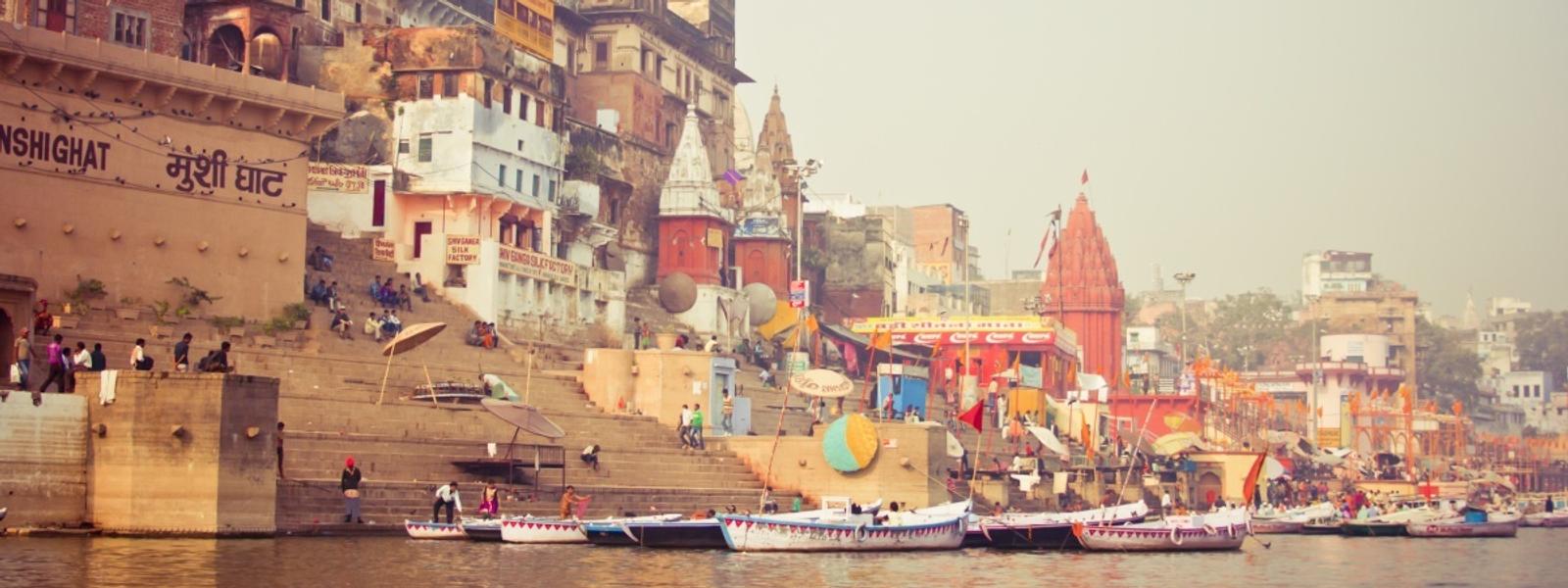
When to go to India
When is the best time to visit India?
Generally, the best time to visit India is December through to March during the cool, dry season but always keep in mind that India is a large country with a diverse climate and varied weather conditions. In the first months of year, most of the country basks in bright, warm sunshine and rain is almost non-existent. The shoulder season months of October , November and April either side are a good second bet for large parts of the country. In return for the risk of the odd shower and higher temperatures and humidity, you'll often find far fewer tourists and lower prices for accommodation.
India weather & when to go
Pick a month below, kashmir & himalayas, rajasthan & the golden triangle.
Weather seasons are becoming less predictable but peak visitor months remain more certain.
Unfollow the herd - avoid the peak months to enjoy fewer crowds, better availability, often lusher countryside and help to spread the economic benefits of tourism.
Weather overview
From the craggy heights of the Himalayas in the north to the sultry beaches of Kerala and Tamil Nadu in the south, India is a very big place. The good news is that as a result, when it's tipping it down with rain or snowing hard in one area, there's often bright sunshine and cool breezes in another.
The monsoon drops rain on large parts of the country from mid-June to early September making central and north east India in particular very hard going, with flooding a real risk. But Rajasthan in the east and Tamil Nadu in the south west are far drier and very visitable at this time of year.
December to March is typically the dry season. Vast swathes of the country are warm and sunny between these months and it rarely rains.In the far north of the country however, the winter months bring chilly temperatures and snow at higher altitude. If you want to explore the spectacular Himalayan scenery you're better off going in spring or autumn when temperatures are warmer and rains are sparse. Whilst it's still pouring in parts of India in August, here the trekking season is in full swing.
Kashmir and the Himalayas
Shimla, manali, srinagar, dharamshala, rishikesh and jammu.
With their mountainous topography, the far northern states of India experience cold winters. If you fancy a winter break with a difference, places like Manali offer skiing, whilst Shimla is wonderfully atmospheric under a blanket of snow. Days can be bright and clear, but you need to be properly prepared for cold weather. Like most of the rest of India, the monsoon brings heavy rainfall in July and August. Whilst a visit isn't out of the question at this time, trails may be muddy and mountain views obscured by fog and cloud.
The best time to visit Kashmir and the Himalayas is autumn when the monsoon is over but the chilly temperatures of winter have yet to set in. In October and November, Shimla, Manali, Srinagar and Dharamshala are warm and dry with hardly a drop of rain. Lower altitude Rishikesh and Jammu experience similar weather too. You'll find the weather in April, May and June is usually good too, so spring is also a good option for hiking through this part of India's spectacular mountain panoramas.
Mumbai and Central India
Mumbai, pune, nagpur, pench national park, kanha tiger reserve, bandhavgarh national park.
Central India tends to experience hot summers and a very wet monsoon season. During late June, July, August and early September the region experiences a lot of rain. Flash floods are not uncommon, National Parks are closed and the downpours are prolonged. You're far better off visiting other parts of India at this time of year that don't get so drenched - such as Rajasthan or Tamil Nadu.
Once the monsoon moves away, the weather improves quickly and the long, dry sunny days of November through to March are ideal for visiting the bustling cities of Mumbai, Pune and Nagpur or going on a tiger hunt in Kanha Tiger Reserve or Bandhavgarh. April, May and June are pretty good months too, particularly if you're visiting places on the coast like Mumbai where the cool winds keep temperatures down. Inland, the mercury climbs into the 30’s. But if you don't mind a little heat and are happy getting up early, it's a great time of year for game drives as the animals tend to congregate around waterholes.
Calcutta and the North East
Calcutta, varanasi, lucknow, allahabad, patna, darjeeling.
North east India's weather is similar to that of Mumbai and the centre of India. The best months for visiting places like Calcutta, Varanasi and Lucknow are November through to March. At this time of year, days are hot and dry with hardly a cloud in the sky - perfect sightseeing weather.
The weather at higher altitude in Darjeeling is settled too, but you need to be prepared for colder temperatures in January and February in particular. The region experiences heavy monsoonal rain from mid-June to mid-September. It's properly wet and humidity levels are high too; not ideal weather conditions for tramping around temples or exploring backstreets. Even Darjeeling at higher altitude tends to be shrouded in cloud and can be wet at this time of year. In the months running up to the monsoon north east India can be really hot: the mercury can rise into the 40’s during the months of April, May and June. It tends to stay hot at night too and you're best off heading into India's hill stations. Places like Darjeeling are cooler, offering near perfect hiking conditions.
Rajasthan and The Golden Triangle
Jaipur, agra, delhi, jodhpur.
If you're planning a trip to the Taj Mahal , the romantic rose city of Jaipur or the bustling metropolis of Delhi , the best time of year for your visit is November through to March. It's the dry season during this period and days are hot, dry and sunny - ideal for exploring eons-old cities. The mid-summer months of May and June are baking hot in Rajasthan and the Golden Triangle, and generally best avoided. Other parts of India like Shimla in the far north are cooler, so probably a better bet during the summer. Whilst the monsoon from mid-June to early September tips large amounts of rain on central and north east India, this part of the country escapes with relatively mild downpours. In places like Delhi, Jaipur, Agra and Jodhpur , you'll certainly encounter rain, but it's infrequent and doesn't tend to last long. The upsides to a visit during monsoon season are lush scenery, far fewer visitors at popular sites and more manageable temperatures.
Kerala, Goa and the South
Arambol, palolem, chennai, periyar national park, nilgiri hills.
The best time to visit southern India is December through to March. It's the dry season and you're guaranteed wall-to-wall sunshine and perfect temperatures for lazing on the glorious beaches and exploring the fascinating backwaters. Temperatures start to climb in April and by late May the humidity can be intense, before the arrival of the monsoon. June, July and August are really wet on the west coast in Goa and Kerala and they're not the best months to visit, though locals claim the wetter weather is ideal for Ayurvedic massage treatments. Alternatively, consider heading for a different part of India - Rajasthan gets far less rain during the monsoon. Tamil Nadu is also much drier between June and August than other parts of southern India. It gets most of its rain in October and November during the second 'retreating' monsoon. October and November in Goa are good months. Outside the peak season, they're still pretty dry. The weather at this time of year in Kerala is less predictable and you should expect the odd burst of rain.
You may like this journey…
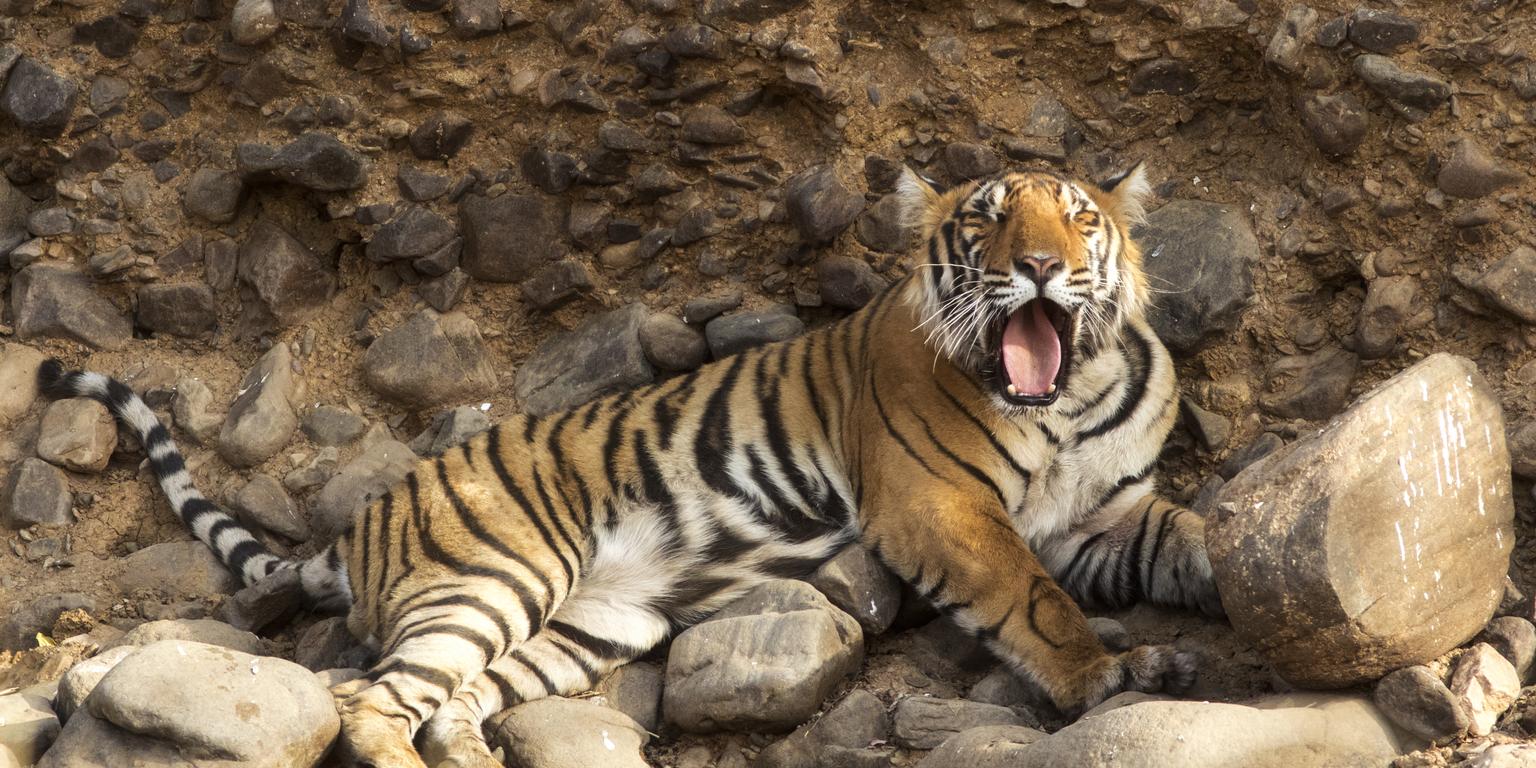
Walk on the Wild Side
Take your best shot at spotting wildlife with an itinerary that includes not one but three different parks, all located in the central Indian state of Madhya Pradesh. This allows you to explore some surprisingly diverse scenery, see myriad bird and animal species, and hugely increase your chances of spotting one of these elusive big cats.
Looking for inspiration?
- € EUR
When is the Best Time to Visit India?

Published on: February 22nd, 2024
Last modified: February 22nd, 2024
The best time to visit India is winter, from November to March, when most of the country – including the Taj Mahal , Mumbai and Varanasi – sees clear skies and pleasant daytime temperatures that tend not to exceed 25 °C (77 °F). That said, other months are ideal for different destinations and activities like tiger spotting, experiencing local festivals and trekking in the north.
India is an enormous peninsula that makes up the majority of the Indian Subcontinent , so its climate and geography vary greatly from place to place. At any given time, the weather conditions in the northern mountains of Ladakh can be entirely different from those in Kerala at the country’s southern tip – and everywhere in between.
India Month-by-Month Weather Guide
Across much of India, the year can be divided into the monsoon season from June to September, the drier period from October to March and the incredibly hot months of April and May. However, each part of the year has its perks. We’ve put together a detailed climate guide to help you understand the weather conditions and temperatures in India by month.
India in January
Best for sightseeing.
January is one of the best times to visit India. There’s little to no rain and cooler temperatures in popular spots like Rajasthan and Agra , with highs around 23ºC (73ºF). It can get a bit chilly at night, even dropping below 10ºC (50ºF). Southern India is also relatively dry and can often reach 32ºC (90ºF).
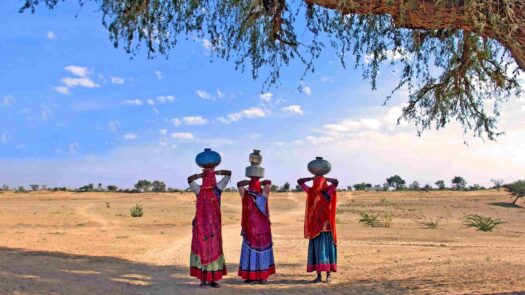
India in February
Best time to visit rajasthan.
February boasts fantastic weather across India, with plenty of sunshine and low rainfall. It’s an especially good time to go to Jodhpur , Jaipur and Udaipur , as well as rural Rajasthan , as temperatures average a moderate 23ºC (73ºF). Visit during the annual Jaisalmer Desert Festival to witness a vibrant celebration of local heritage in Rajasthan’s ‘Golden City.’
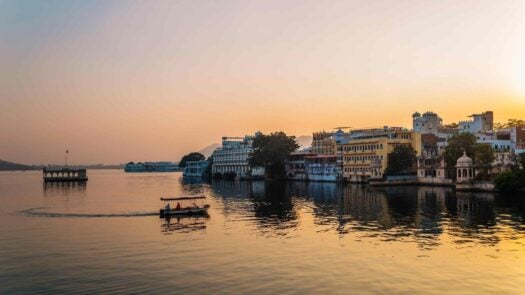
India in March
Best for celebrating holi.
March marks the end of India’s peak season, with temperatures staying below 35ºC (95ºF) in most destinations. It’s also the month of Holi, which creates an explosion of colour across the country as revellers cover each other in rainbow-hued powders. This two-day Hindu festival honours love and springtime and falls on different dates each year.
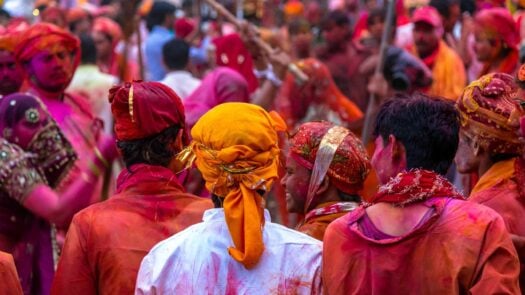
India in April
Best for tiger spotting.
India’s temperatures start to climb in April, exceeding 35ºC (95ºF) in some places. If you can handle the heat, it’s a wonderful time to see tigers in the Ranthambore and Bandhavgarh national parks. The weather causes these big cats to seek out watering holes and thinner foliage makes them easier to spot.
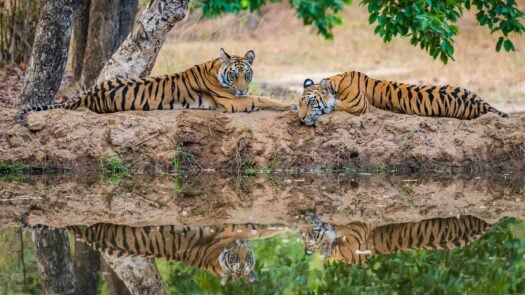
India in May
Best for mountain escapes.
May is the hottest month of the year in India , as the monsoon season hasn’t quite set in yet. In the central regions temperatures often exceed 40ºC (104ºF). Head to the Himalayan regions of Himachal Pradesh , Sikkim and Kumaon in the north for cooler weather and beautiful trekking trails.
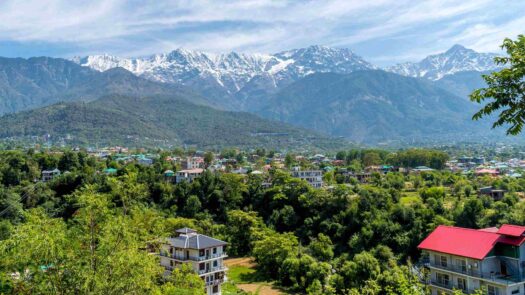
India in June and July
Best time to visit ladakh.
June and July are the rainy season in India , with the monsoons having arrived in full force. This isn’t a great time to visit the south – but it’s the best time of year to explore the northern region of Ladakh , which boasts an arid climate, temperatures around 20ºC (68ºF) and the stunning peaks of the Himalayas and Karakoram.
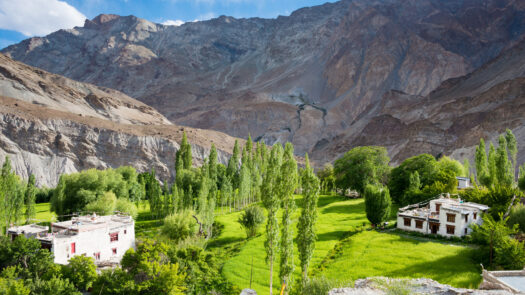
India in August
Best for lush landscapes and river cruises.
Although August is among India’s wettest months , it can still be pleasant in some places. The south experiences torrential – but usually brief – downpours, creating gorgeous green landscapes. It’s also a good time to explore Varanasi by boat, as the Ganges’ water levels are high and temperatures stay around 32ºC (90ºC).
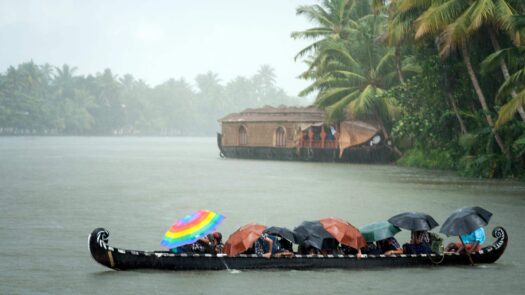
India in September
Best for avoiding crowds.
September is somewhat of a transitional month in India; the monsoon season is winding down, but it’s still quite hot and humid. Many of the more popular sites are relatively uncrowded, including the Taj Mahal and the historic cities of Rajasthan – just make sure to be prepared for sudden showers, especially in Mumbai .
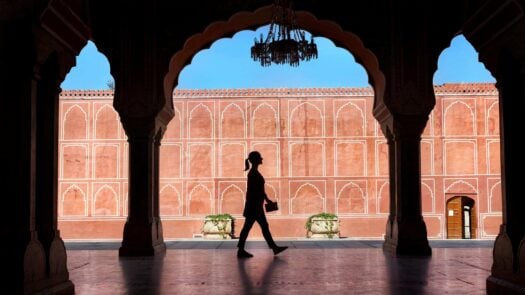
India in October
Best for sunny, warm weather.
India’s peak season begins in October, particularly in the north. The rainy season is over and temperatures drop to around 30–34ºC (86–93ºF), making outdoor adventures and sightseeing much more pleasant. Diwali, the famous festival of lights, sometimes falls in October as well (the exact dates are based on the Hindu calendar).
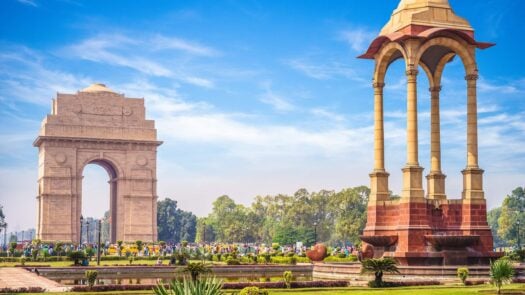
India in November
Best for traditional festivals.
By November the weather has cooled down considerably – with many places dropping below 30ºC (86ºF) – and India’s main tourism season is in full swing. Two iconic festivals also take place in this month: the Pushkar Camel Fair in Rajasthan and Diwali (though Diwali sometimes falls in October).
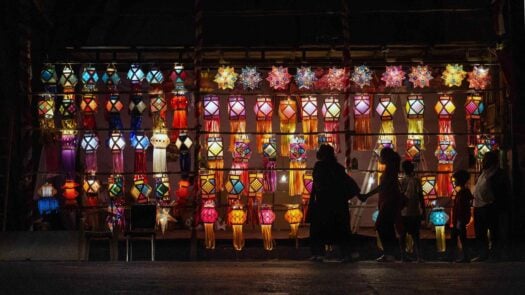
India in December
Best for beaches and winter sun.
This is one of the coldest months of the year, with December temperatures in India getting as low as 0ºC (32ºF) in Ladakh and dipping into the low 20sºC (70sºF) elsewhere in the country. It’s an especially good time to enjoy the beaches in the south, although they can get crowded during the Festive holiday period.
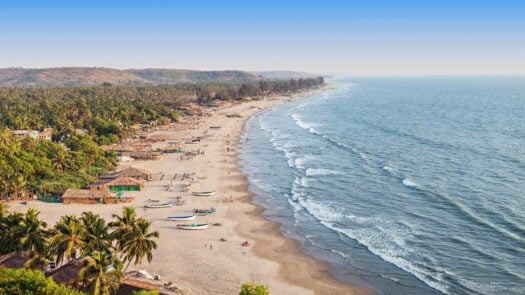
The Best Things to Do in India by Season
Considering the vastness of India and the variety of its attractions, it should come as no surprise that some times of year are better for certain activities – and when planning your trip, it’s vital to keep this in mind. Here are a few of the best things to do in India and expert tips for when to do them, courtesy of our travel designers.
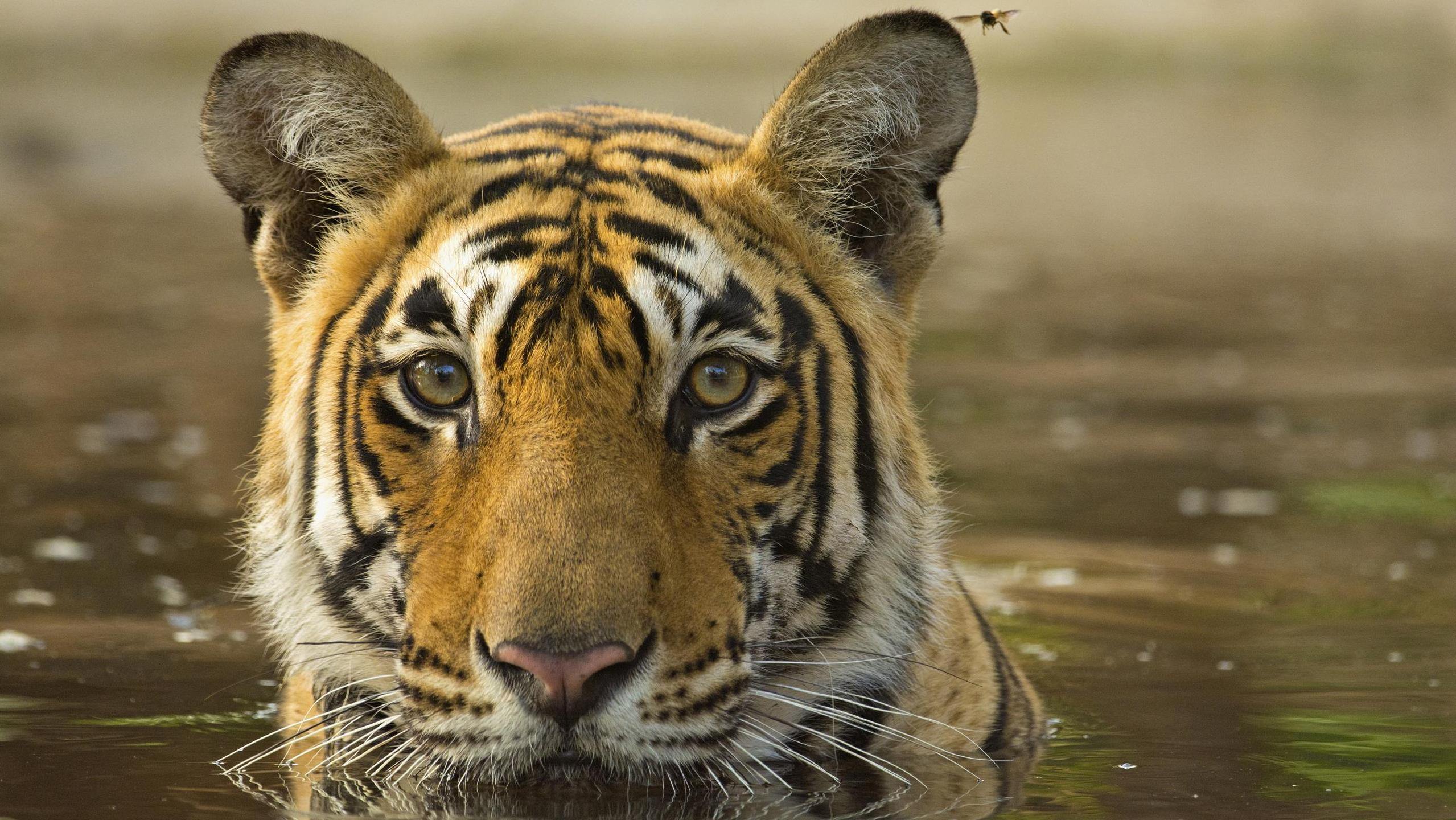
Spot Bengal tigers
February through April is the best time to see tigers in India, specifically in Ranthambore National Park and Bandhavgarh National Park. In February and March the weather is cooler, but sightings become more likely as the temperatures rise in April. Keep in mind that these parks are only open from October to June.
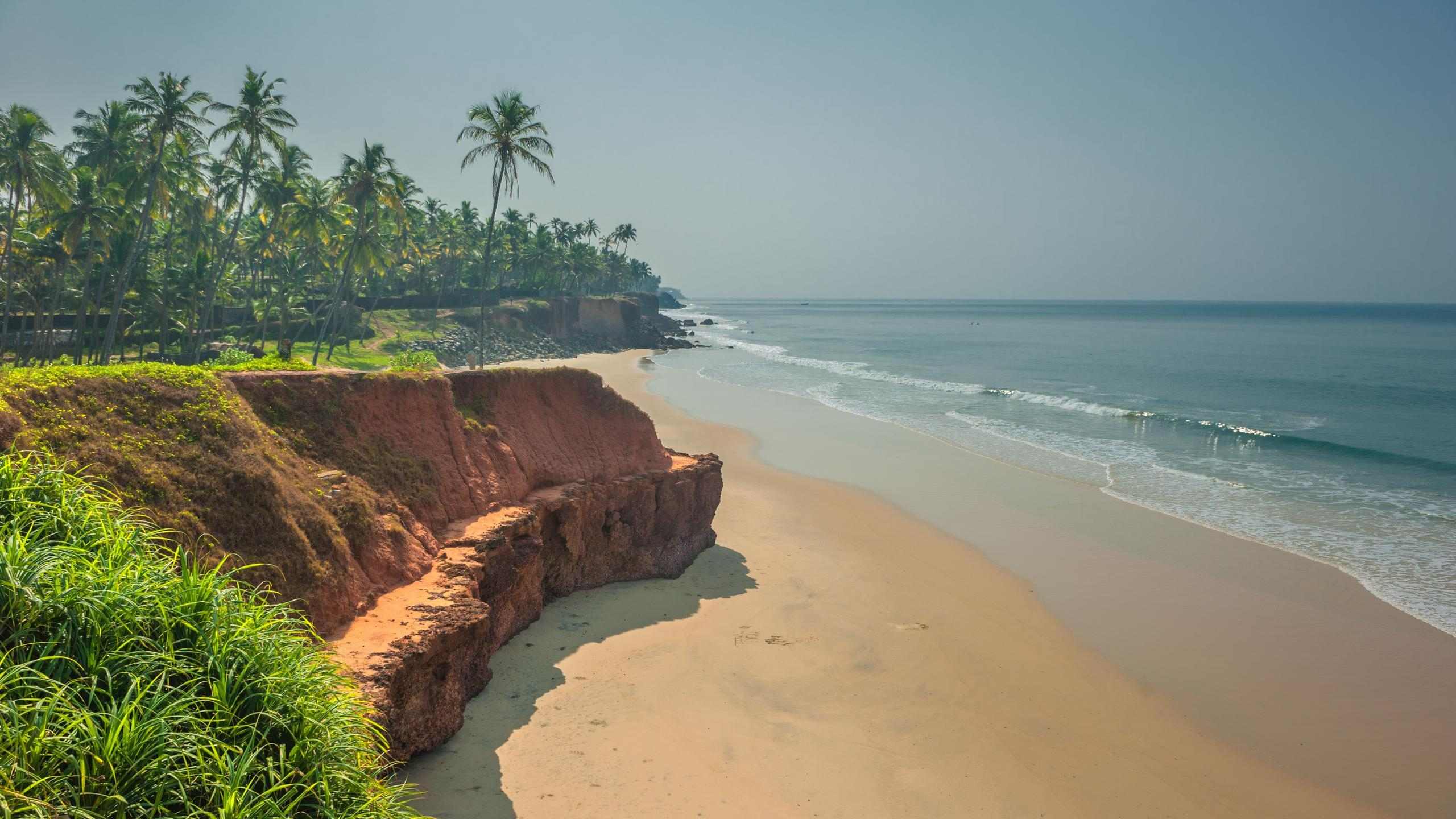
Relax on the beach
The best time to visit India’s beaches is during the winter months from November to March. At this time of year there’s a much lower chance of rainfall and temperatures are still nice and warm – around 32ºC (90ºF). This is also the best time to go to Goa, a tropical paradise on India’s western coast.
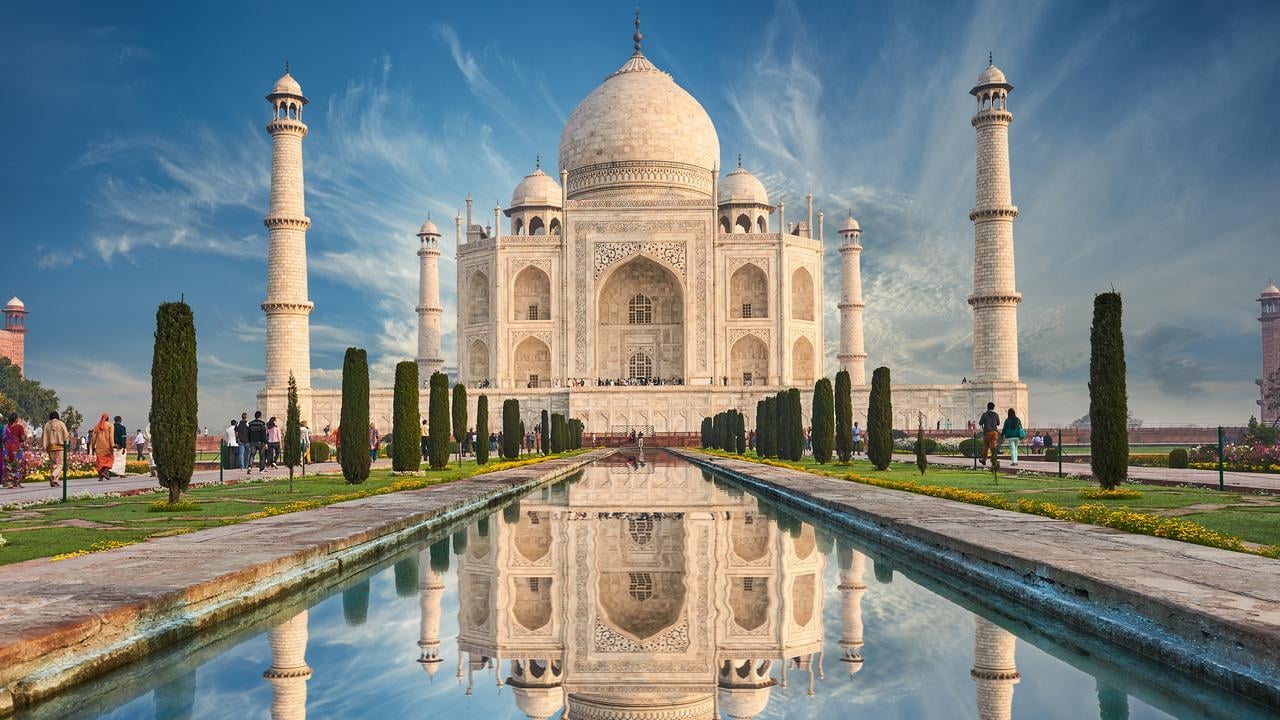
Marvel at the Taj Mahal
Truthfully, the best time to visit the Taj Mahal depends on your priorities. The popular winter months promise cooler temperatures, but also larger crowds and sometimes foggy conditions. We suggest visiting either in March, which is less foggy but not yet too hot, or September, if you want to avoid the crowds (and don’t mind the risk of rain).
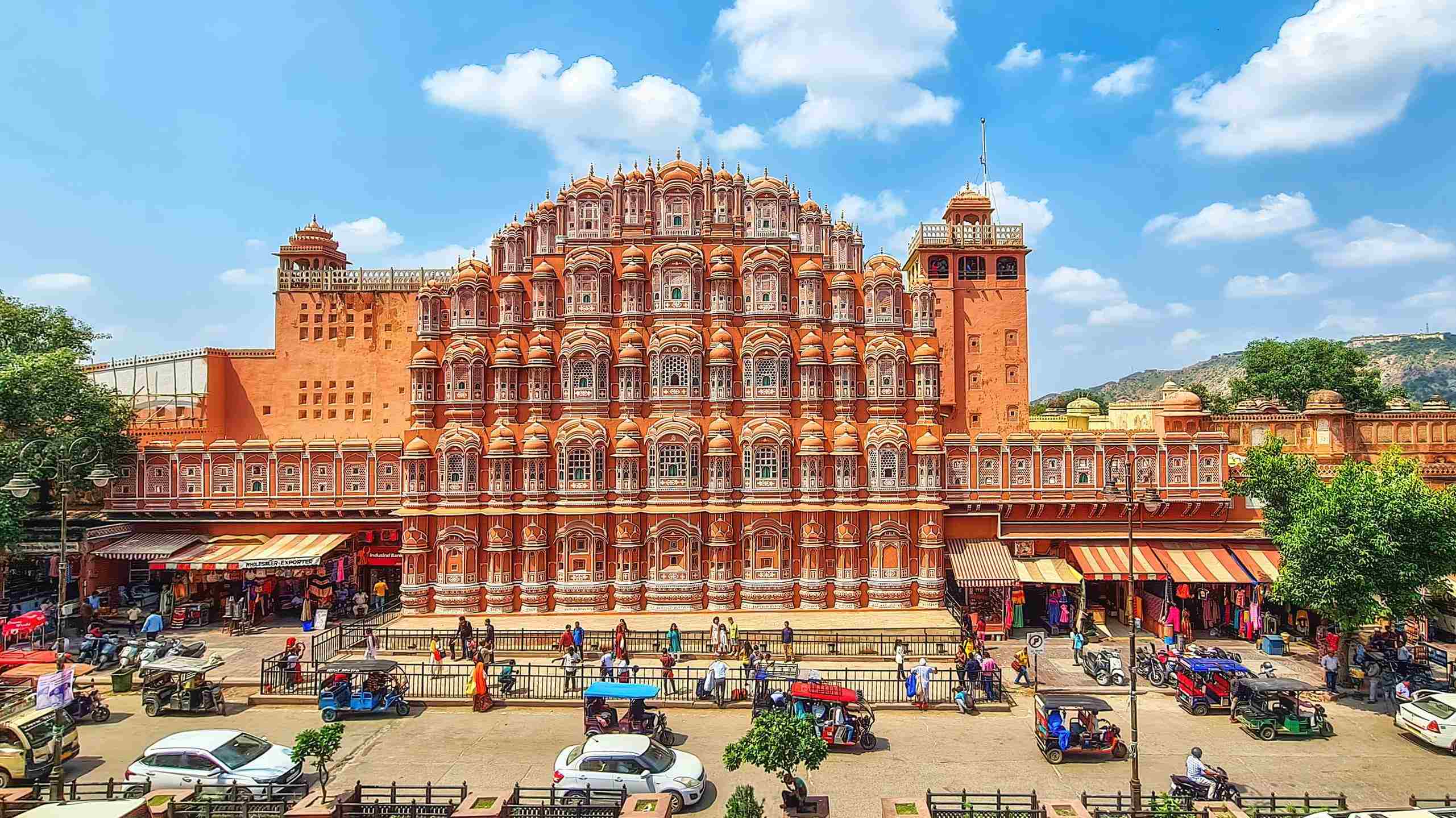
Explore the Golden Triangle
The best time to visit India’s Golden Triangle – comprising Agra, Delhi and Jaipur – is on either side of the main tourist season. October, November, February and March generally offer sunny skies and smaller crowds than December and January, while the rest of the year can be uncomfortably hot (from April to May) or rainy (from June to September).
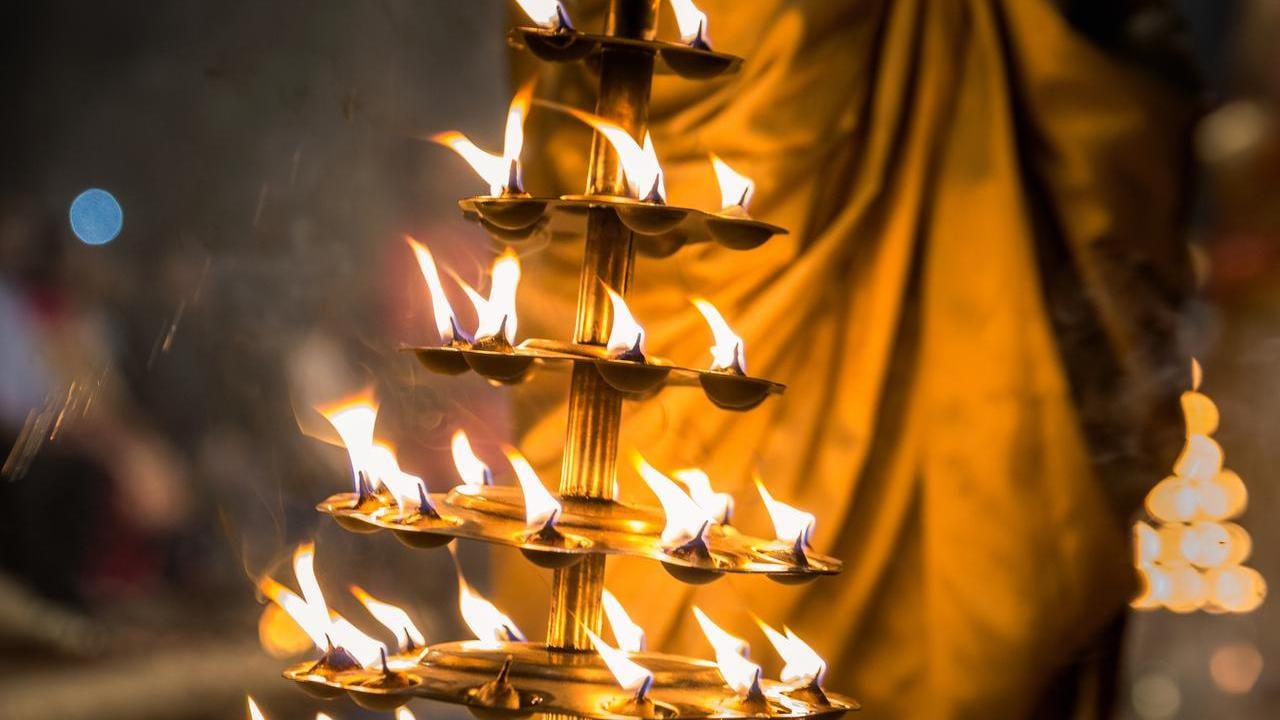
Best time to experience iconic festivals
India certainly knows how to celebrate, and there’s nothing quite like travelling here during one of its major festivals. Visit in March to participate in the colourful Holi festivities, or in October or November to experience Diwali, the most important Hindu holiday. Make sure to confirm these festivals’ dates in advance, as they change each year.
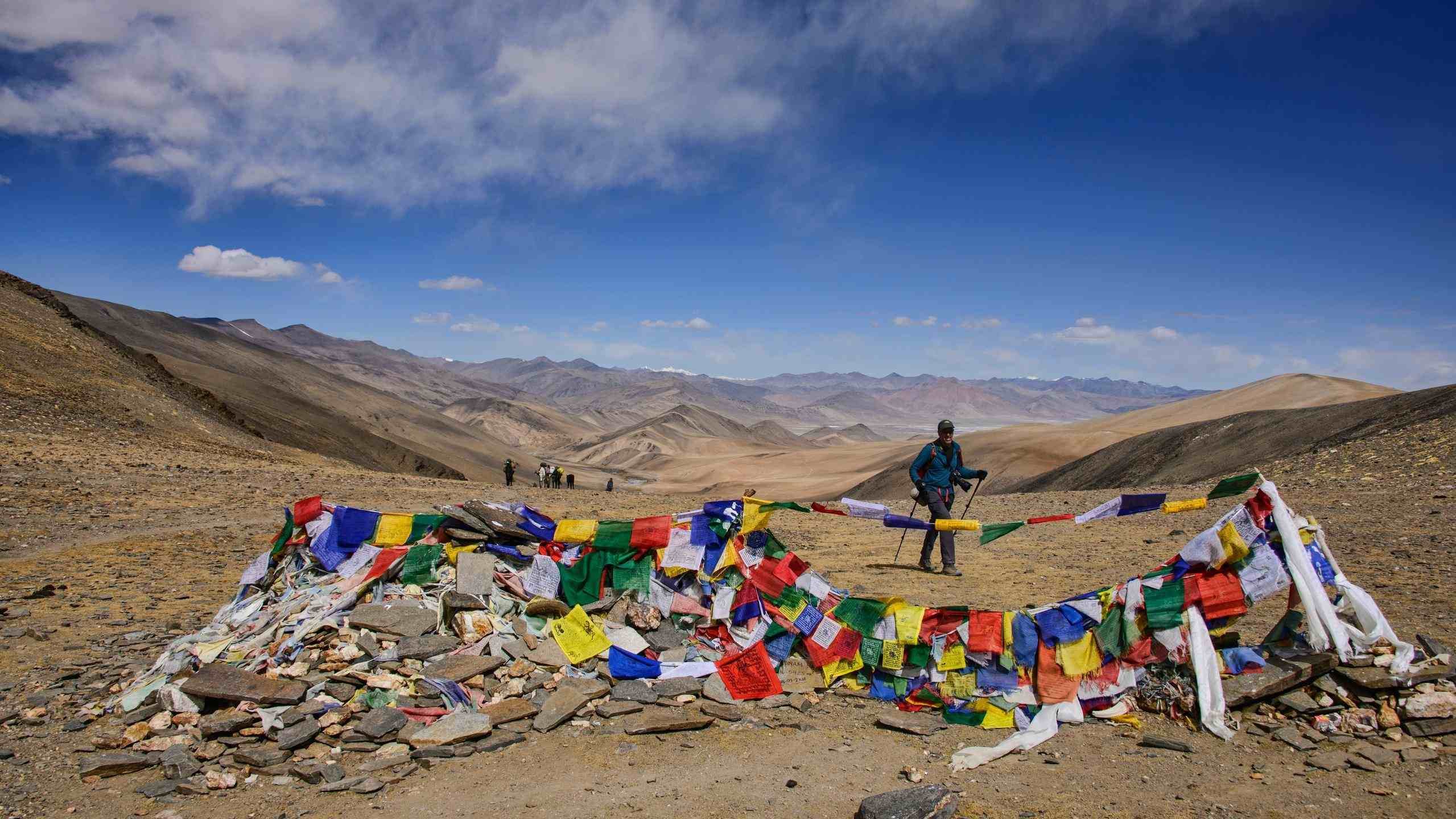
Go hiking in the mountains
These months may bring monsoons to most of India, but they’re the perfect time to go hiking in the north. From June to September temperatures are ideal for outdoor expeditions in and around Ladakh, averaging about 25ºC (77ºF) during the day. This region can be too cold and snowy to visit in winter, but it’s beautifully sunny in summer.
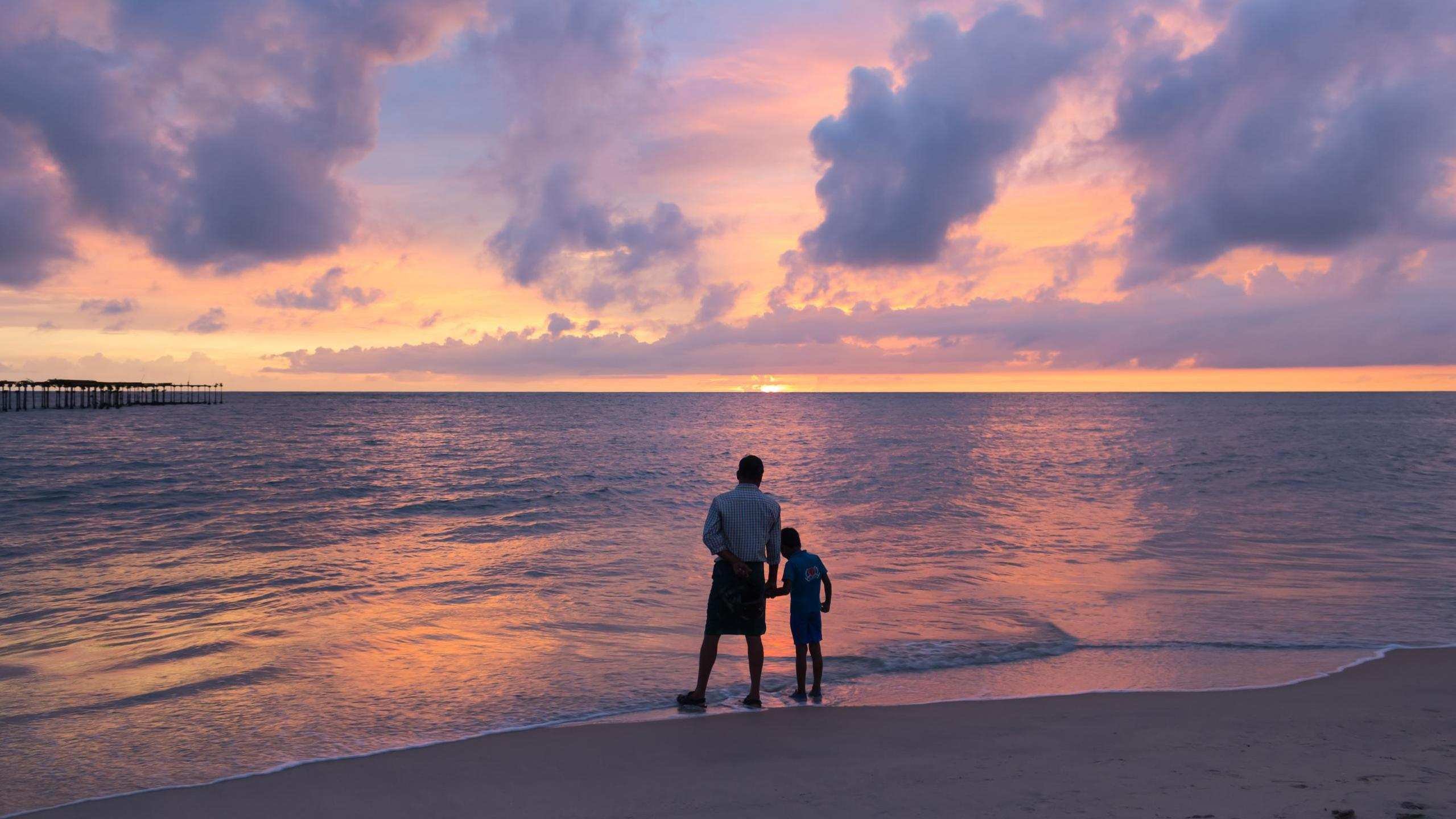
Travelling with children
India can be an excellent destination for a family trip – as long as you choose the right destinations and timing. It’s best to avoid extreme temperatures and weather conditions, so October to March is the best time to visit India with children if you want to go to the main sites and cities like Mumbai, Delhi and Agra.
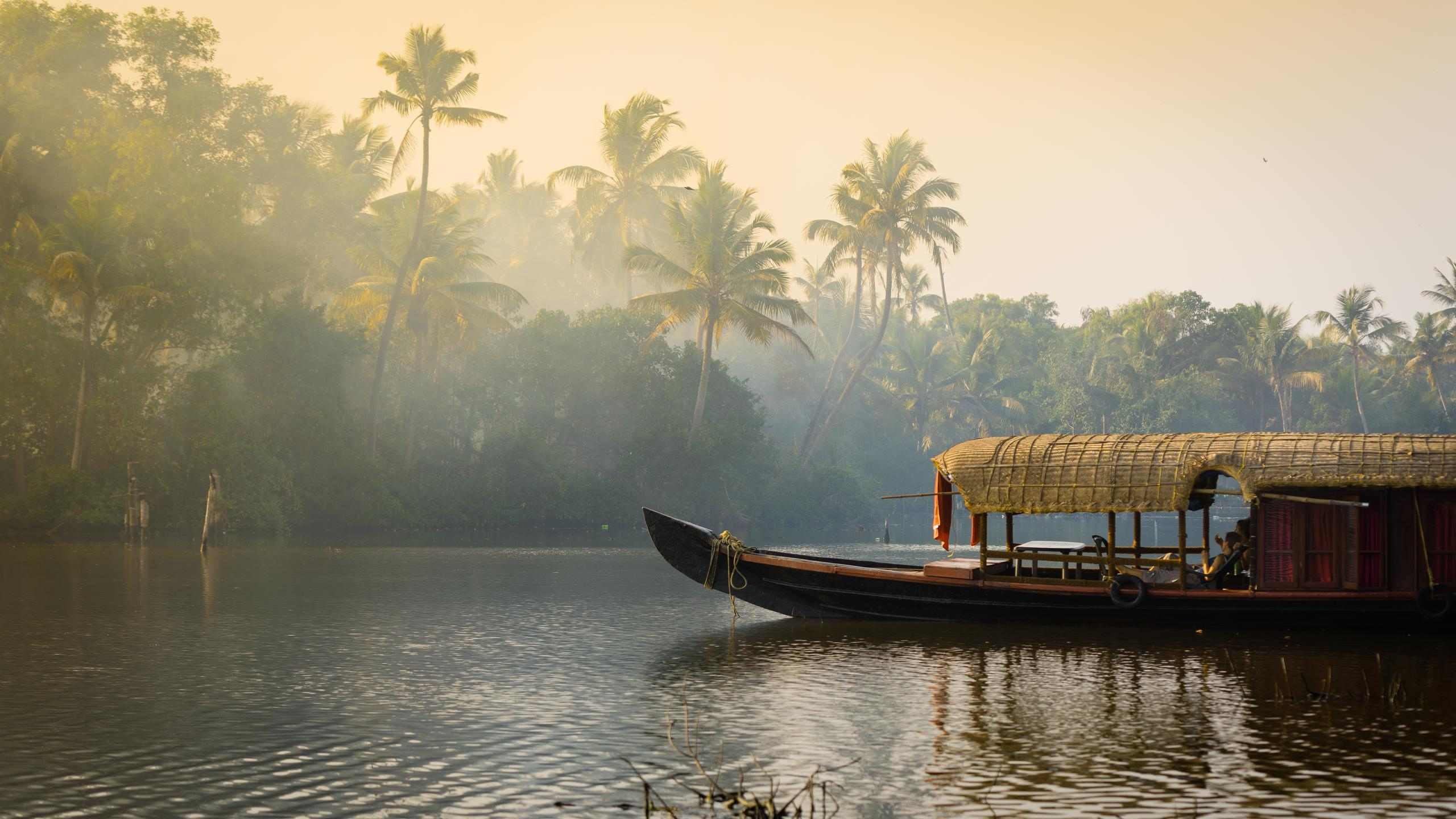
Cruise the backwaters of Kerala
December through February is the best time to visit Kerala, a verdant and vibrant state in southern India. Hop in a boat to glide through the intricate canals and rivers that make up the Kerala backwaters during the cooler and drier winter months – or brave the summer monsoons to witness the Onam harvest festival in August or September.
Trip Inspiration
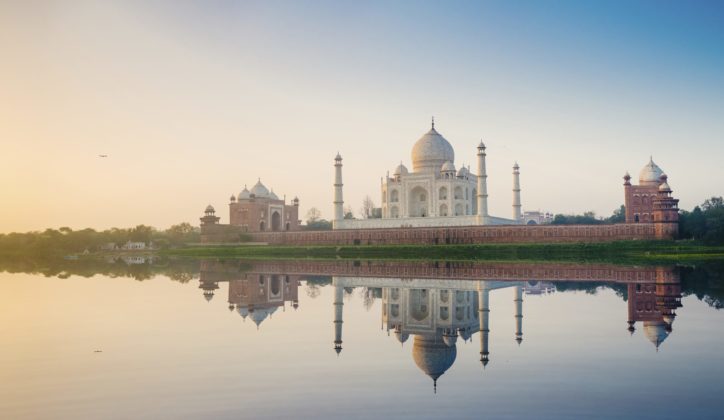
Whatever you want from your trip to India, our team of expert travel designers are ready to help.

- 2 Weeks for Couple
- 2 Weeks for Family
- Thailand Lantern Festival
- Indonesia(Bali)
- South Korea
- China (HK, Taiwan)
- Itinerary Ideas
- Asia Highlights Travel Reviews
- Thailand Travel Reviews
- Vietnam Travel Reviews
- Cambodia Travel Reviews
- Japan Travel Reviews
- Myanmar Travel Reviews
- China Travel Reviews

Best (and Worst) Times to Visit Goa & Rainy Season (2024/2025)
Goa is a popular beach destination in India. As it is affected by the monsoon from June to October, the best times to visit Goa are from November to April with less rain and better weather.
The Best Times to Visit Goa
The worst time to visit goa, monthly weather in goa, monsoon season in goa (june to october), dry season in goa (november to february), hot season in goa (march to may).
While the best times to visit Goa are from November to April weatherwise, this can depend on your Goa holiday purposes, budget, and weather preferences.
For the finest weather conditions , sightseeing experiences, and water activity conditions, December to February is the best period. You can expect a prefect beach time with sunny, dry, and warm weather.
For the best times to visit Goa for your honeymoon or family trip , consider November to early December and March to April. These are times with relatively few tourists and good weather. Of course, December to February is also a great time if you don't mind crowds.
You can expect lower prices from May to October, which is the rainy season, with 30–50% off offered by many hotels and flights.
If you are thinking about an India trip, just contact us and we would be glad to share advice on the perfect timings and activities for you.
Get inspiration from our itinerary ideas for 10 days , and 2 weeks or contact us to tailor-make one just for you!
For a good travel experience, June to August is best avoided, as these months see extremely heavy rain (0.5–1 meters of rain per month!) with less than 4 hours of sunshine per day and averaging 20 rainy days each month. Torrential rain storms are accompanied by strong winds.
Many attractions like national parks and restaurants will close during this period.
If you want a favorable price and don't want to be affected so much by the rains, you may consider traveling in May, September, and October, which are at the transition months of the monsoon with only moderate to high rainfall and around 10 days of rain per month.
Frequent showers and occasional hurricanes hit Goa during its monsoon season. June to August suffer huge quantities rainfall, and June/July is the peak.
The abundant rainfall makes the Dudhsagar Waterfalls flow at their most spectacular. In June, there will be one of the important festivals in Goa — Sao Joao Festival. People jump into streams, wells, and ponds, which signifies the happiness of St John the Baptist when Jesus was born, and they pray for a good monsoon and harvest.
The rainy season in Goa might discourage some people from going on holiday there, but during this period, Goa is relatively cool at 29°C (84°F) compared to the 35°C (95°F) temperatures in other parts of India, so many locals choose to escape the heat there.
Lower prices, few tourists, and lush shades of green are the advantages of traveling in Goa in the monsoon if you don't mind the disruption of your plans by storms. What you should note is that on heavy rainy days with strong winds, some attractions and restaurants close.
Goa's dry season features comfortable summer temperatures and clear, sunny weather. It is the best time of the year to visit Goa.
The perfect weather is suitable to for all kinds of sightseeing and activities, like swimming, snorkeling, hiking, photography, and more.
In Christmas and New Year, Goa will be embraced by a strong festival atmosphere. The sound of carols echoes from the walls of the churches. Parties on the beach and bars, music, and fireworks are also indispensable elements of the celebrations.
Accordingly, the perfect weather brings a rise in prices. Accommodation is in high demand, especially from late December to February. If you are planning a trip in this peak season, it is better to book one or two months in advance.
Get some inspiration about How to Plan an Affordable Luxury Trip to India .
In Goa's hot season, you can expect less crowding than during the dry season and rainless weather until late May. This is also a good time to visit Goa, especially between March and April.
Most of the time is suitable for water activities, sunbathing, and sightseeing. At the end of May there is some monsoon influence, but not much.
One of Goa's biggest festivals, Shigmo Festival (Goa's version of Holi) falls in March or April. The processions with traditional Goan dances and modern floats are the highlight.
You can expect reasonable prices during this period. Heat averaging 33°C (91°F) in the middle of the day is an unavoidable element of the hot season. Remember to bring some sun protection. It could be a good idea to wait to go out until after 3 or 4 pm.
You Might Like to Read
- Best (and Worst) Times to Visit India 2024, Best Places to Go in Each Month
- Best (and Worst) Times to Visit Delhi & Where to Go
- Best Times to Visit the Taj Mahal: Expert Tips in 2024
- Best (and Worst) Times to Visit Varanasi & Rainy Season
Discover real reviews of Highlights Travel Family 's best-rated service across trusted platforms.
Touring India with Us
Discover India through our unique tours with award-winning guides and 1:1 help from a dedicated India expert every step of the way.
Tell us your interests and needs , and we will create a wonderful trip for you. We are looking forward to helping you discover you authentic and colorful India.
- 11-Day India Highlights and Goa Honeymoon Trip
- 12-Day Family Holiday in India
- More India tours
Why Asia Highlights (10,000+ reviews & 98.8% 5-star rating)
- Save Your Time:
- Less research, more enjoyment!
- Real-time 1V1 expert planning
- Maximize Your Flexibility:
- Personal local guide and ride
- Explore at your own pace
- Celebrate Your Journeys:
- Specially-crafted family adventures
- Celebrate milestones with style!
Get Inspired with Some Popular Itineraries
At Asia Highlights, we create your kind of journey — your dates, your destinations, at your pace. You can have any trip tailor made for your travel.
More Travel Ideas and Inspiration
Sign up to our newsletter.
Be the first to receive exciting updates, exclusive promotions, and valuable travel tips from our team of experts.
Why Asia Highlights
Where can we take you today.
- Middle East
- African Safari
- Travel Agents
- Loyalty Program
- Our Differences
- Privacy Policy
Address: Building 6, Chuangyi Business Park, 70 Qilidian Road, Guilin, Guangxi, 541004, China
Best Time To Visit India
What is the best time to visit india.
The best time to visit India is between October and March however, since India has a diverse topography every region can be visited during different seasons of the year. October to March majorly covers the winters and beginning of summers. The summer months of April to June are typically sweltering and should be avoided. People generally visit the hilly areas during this time which leads to higher crowds and competitive prices in those regions. After the scorching heat of summers, monsoons transform the terrain into a captivating place, but the levels of humidity and precipitation may not be something one was looking for, but it can be good news for those who wish to travel on a smaller budget. Whereas during winters, the temperature in most regions falls in the night time but is pleasantly average or quite high during the day.
India Travel Packages
Compare quotes from upto 3 travel agents for free
Best India Tour Package - Shimla, Kullu and Manali
Kashmir tour package 9 days with gondola ride, leh ladakh summer holiday package with nubra & pangong stay, bestseller andaman and nicobar tour package, sikkim tour package for 7 days - excursion to tsomgo lake, shimla manali dharamshala dalhousie tour package - day trip to khajjiar, more about best time to travel to india, winter in india (october - january).
- Delhi, Agra, Jaipur (Golden Triangle): Immerse in the historical and cultural wonders.
- Ranthambore National Park: Witness diverse wildlife in their natural habitat.
- Goa: Enjoy the sun, sand, and the vibrant festival scene.
Spring in India (February - April)
Monsoon in india (june - september).
- Kerala: Explore the backwaters and lush greenery.
- Meghalaya: Witness the living root bridges and scenic beauty.
- Karnataka: Visit Jog Falls and other natural wonders.
Summer in India - (April - June)
Top places to visit in india by month.

Best time to visit the top destinations in India
Best Time to Visit Manali
Best Time to Visit Leh Ladakh
Best Time to Visit Coorg
Best Time to Visit Andaman
Best Time to Visit Lakshadweep
Best Time to Visit Goa
Tourist Places to Visit In India

Lakshadweep

Browse Package Collections
India package collections.
India Honeymoon Packages
North East Tour Packages
South India Tour Packages
International Honeymoon Packages
International Tour Packages
Honeymoon Packages
Top Destinations for Packages
Nearby countries for packages.
United Arab Emirates
Top Listed Packages
Spiti Valley in Summers: 1 Week in Breathtaking Kinnaur & Spiti
Kashmir 8 Days Itinerary: Enthralling Trip with Srinagar Houseboat Stay
India Tour Package with Best of Himachal
3 Days Tour Package in India: Char Dham Yatra By Helicopter
Sikkim Tour Package for 5 Days
Assam Meghalaya Arunachal Pradesh Tour Packages
Luxury India Honeymoon Tour Package - Tri-City Tour
Sikkim Tour Package for Couple - 8 Nights
5 Days Trip in India: Alleppey, Kovalam & Munnar
Gangtok Itinerary of 7 Nights 8 Days Package
Meghalaya Tour Package 7 Days with Shnongpdeng
Top Hotel Collections
Private Pool
Luxury Hotels
5-Star Hotels
Nearby Countries

Get the best offers on Travel Packages
Compare package quotes from top travel agents
Compare upto 3 quotes for free
- India (+91)
*Final prices will be shared by our partner agents based on your requirements.
Log in to your account
Welcome to holidify.
Forget Password?
Share this page
- Deutschland
Best Time To Visit India
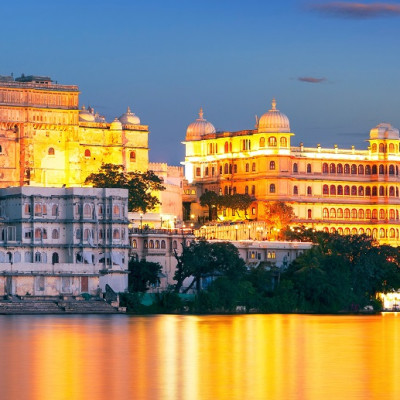
When should you travel to India?
The best time to visit India depends on which part of the country you travel to. We are happy to plan the best India tours for you depending on what you want to see and do. To help you decide, here is an overview of when to holiday in India.
After you have read this article, we recommend checking out our India travel guide . It contains helpful information about visas, getting around, dining, shopping and more.
WE RECOMMEND
- Float down the Kerala backwaters on a houseboat
- Join the Republic Day festivities in the nation’s capital
- Witness a one-of-a-kind Camel Festival in Bikaner
- Ski down the slopes of Auli in Uttarakhand
- Discover the UNESCO World Heritage site of Khajuraho in Madhya Pradesh
- Visit India’s most iconic landmark – the beauty in white – the Taj Mahal
- Celebrate the colorful festival of Holi in Mathura
- Sip on some of the finest teas in Darjeeling
- Set off on scenic treks around Dharamshala
- Birding enthusiasts will love the chance to spot a variety of avifauna in Corbett National Park
- Visit picturesque Kashmir for the Tulip festival
- Marvel at the majestic Kanchenjunga from idyllic Pelling
- Come face to face with the majestic tiger at Kanha National Park
- Savor the king of fruits – the delicious mango
- Travel the Rohtang Pass in Himachal Pradesh
- Explore the colonial history of Shimla
- Find your peace in Rishikesh
- Discover the extraordinarily beautiful landscape of Ladakh
- Escape to beautiful Mt. Abu in Rajasthan
- Discover cascading waterfalls and pristine lakes in Lonavala, Maharashtra
- Trek through a bed of wild roses and geraniums at the Valley of Flowers, Uttarakhand
- Delve into the rich history and culture of the maharajahs at Udaipur
- Breathe in greenery and freshness at Munnar
- Witness the battle of boats in Allepey
- Sign up for an Ayurvedic retreat in Kerala
- Visit the Golden Temple in Amritsar, Punjab
- Travel the popular Golden Triangle route
- Revel in the grandeur of the Durga Pooja celebrations in West Bengal
- Dance along with locals in the colorful Navratri celebrations in Gujarat
- Travel to the Andamans for a blissful beach vacation
- Explore the ruins of Hampi in Karnataka
- Experience the magic of Diwali in the holy city of Varanasi
- Be mesmerized by the vibrant culture and expansive white desert of the Rann of Kutch
- Welcome the New Year in Goa
- India’s party capital – Attend classical music concerts and visit ancient temples in Tamilnadu
Best Time to Visit India by Region
Best time to visit north india.
The best time to visit North India is from October to March. The temperatures vary widely between the plains of the north and the deserts of Rajasthan. Generally, the temperatures in the main season are consistently pleasant, it is dry and often up to 34°C hot. In the winter, however, it can cool down to around 0°C, especially in the evening. Rajasthan, on the other hand, is one of the country’s hottest regions so if you are planning a Jaipur tour or a Udaipur visit, the cool season from November to March is best, although rather warm.
- Main season: October to March
- Peak Season / Winter: December and January
- Rainy Season: July to September
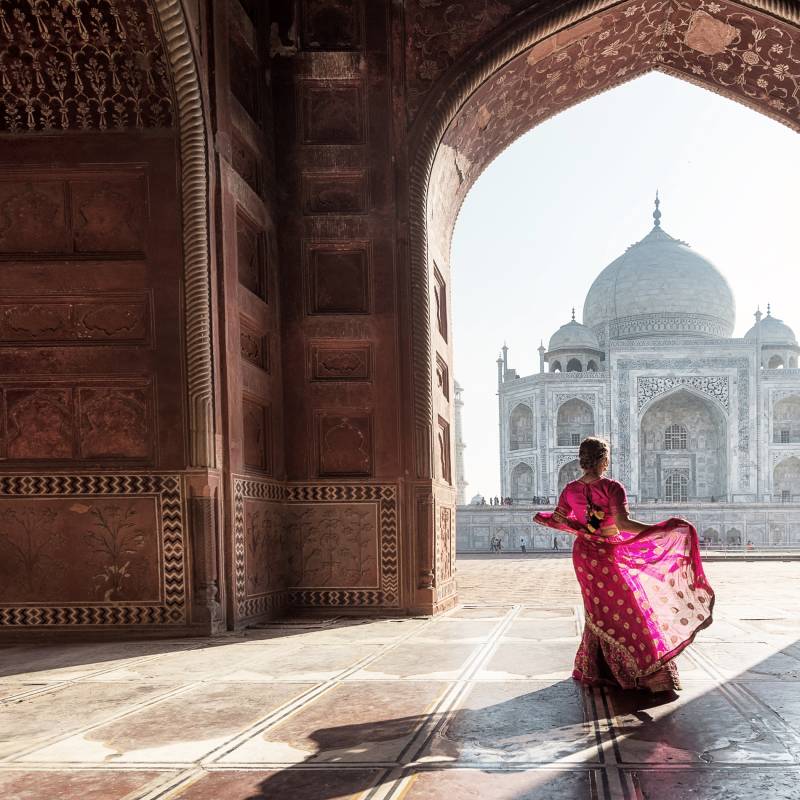
Best Time to Visit South India
The weather in South India is heavily influenced by the monsoon. In Kerala, it is rather sultry and hot throughout the year, with temperatures up to 33°C. In summer, temperatures of up to 45°C can be unpleasantly hot in southern India. During the winter months, on the other hand, the weather is most pleasant. In the higher regions, it becomes relatively fresh in the evening with 15-20°C.
- Main season: October / November – March
- Summer: April – June
- Rainy Season: June / July – September
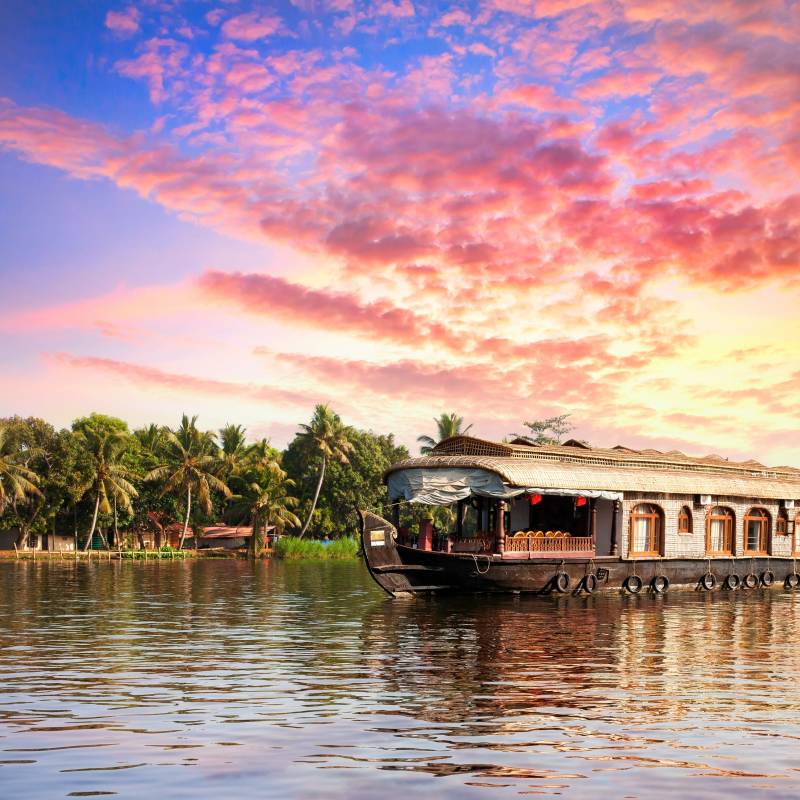
Best Time to Visit Central & West India
For Central & West India tours, prepare for warm to very hot weather in summer and a pleasant climate in the winter months of October to March. Ideal for a wildlife safari, the region is typically rather hot and humid near the coast and dry in the interiors between April to June, until the monsoon rains arrive in July. The weather in Central and West India can be very hot and sultry, especially along the coast. In the interior of the country, however, the heat is rather dry. February and March are the best months to go on an Indian safari.
- Main season: October – March
- Summer (Not recommended): April – June
- Rainy Season: July – September.

Best Time to Visit East India
The best travel time for East India travel is during the months of September / October to March. The entire region shines after the rain in June-August turning lush green.
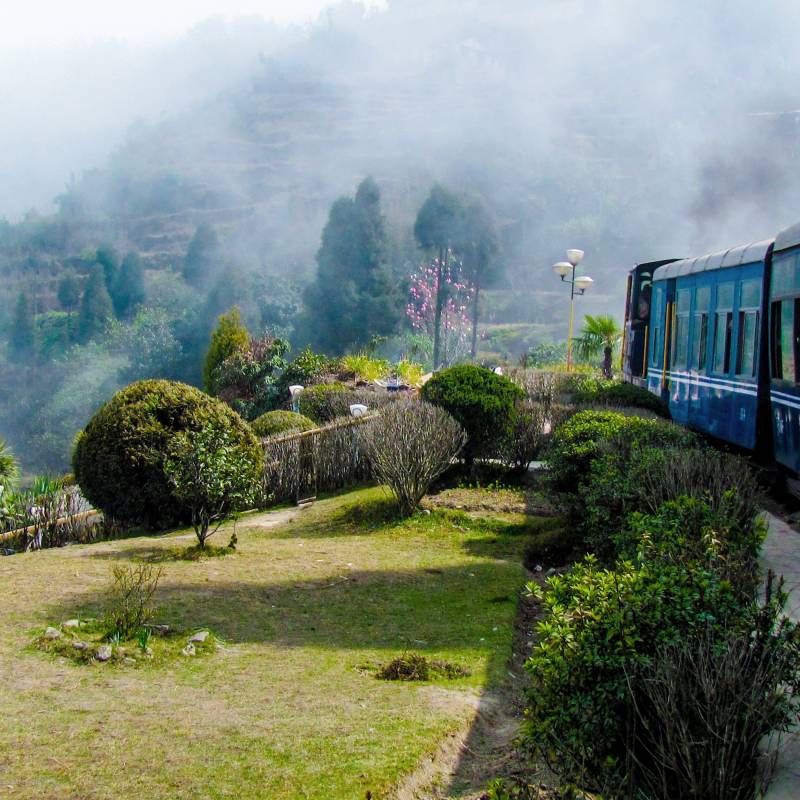
Best Time to Visit the Himalayas
The temperatures, and therefore the best time to visit the Himalayas, vary according to altitude and latitude. During the day it is pleasantly warm – up to 22°C – while it can be cold in the evening and at night. During the monsoon, the chances of landslides are very high. In winter temperatures can drop to -14°C. The Himalayas at this time is a paradise for skiers and snowboarders.
- High season: March – June, October – November
- Winter: December – February
- Rainy Season: July – September
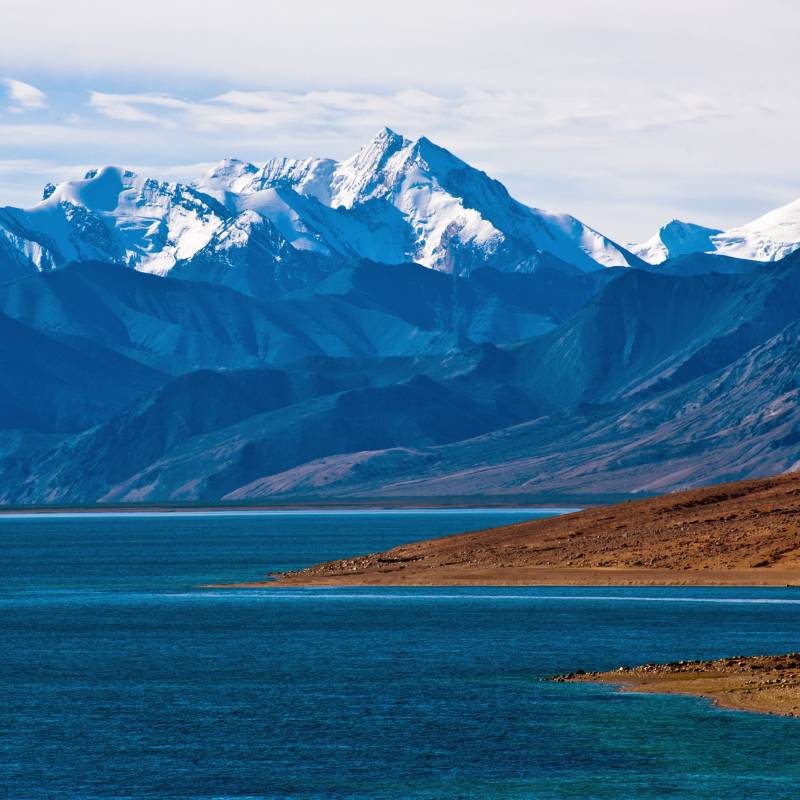
Best Time to Visit India’s Islands & Beaches
The beaches of India experience a tropical climate. The best time to travel to India for a beach holiday is during the months from November to March. Then you can enjoy long hours of sunshine and average temperatures around 30°C. During the monsoon season, some rain showers can be found. The beaches are often flooded due to the high seas, and swimming is not possible due to strong currents and waves.
- Main season: November – February
- Low season: March – April, October
- Rainy Season: May / June – September

What to Pack
Carrying a shawl, stole, or scarf offers protection from the heat and dust, and can also be used to cover the head in holy places. Please carry a comfortable pair of flat shoes, since you will be walking quite a bit during your sightseeing tours. Light cottons or even light woolens (for areas closer to the Western Ghats, e.g. Ooty and Kodaikanal) are ideal.
As a rule of thumb, visitors to the larger cities like Delhi, Mumbai, or Bangalore will find that a mix of Indian and Western clothing is acceptable and is worn by many young Indians. However, in many popular tourist destinations like Rajasthan, modesty in dress is recommended. Clothes with plunging necklines and hemlines above the knee are to be avoided.
Please also keep in mind that modest behavior is also appreciated as public displays of affection, even between spouses, is considered in bad taste in many parts of the country.
Our experts can create a personalized India vacation package for you based on your interests and requirements. Get in touch with us and take the first step towards going on your next memorable trip.
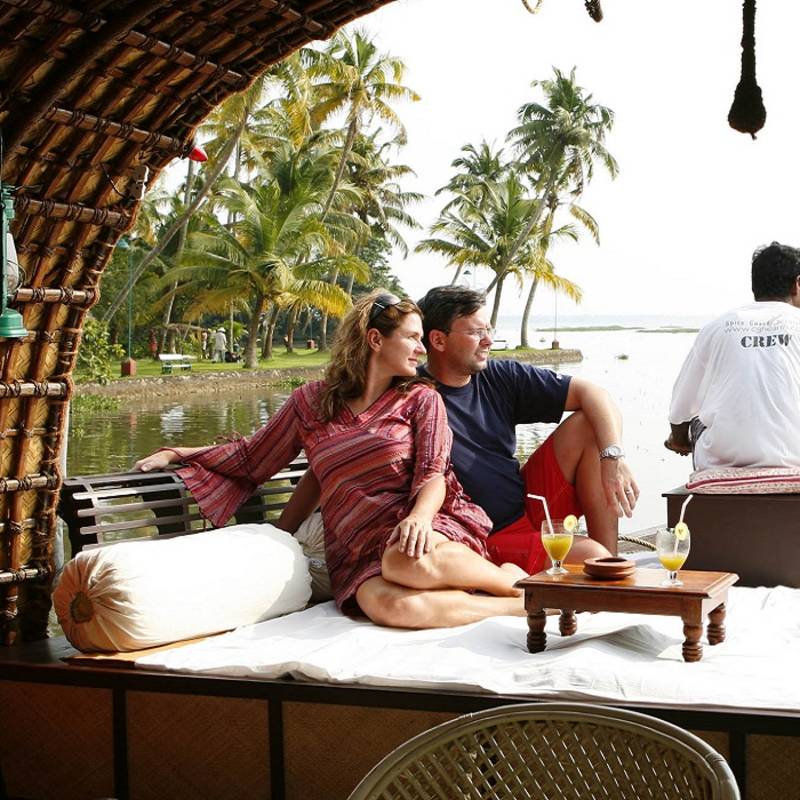
From the Blog

North or South India: Which is the one for you?
With a vast country like India, choosing a region is no mean feat! Here’s your comprehensive guide on what North and South India have to offer to help you decide on the best tour for you.
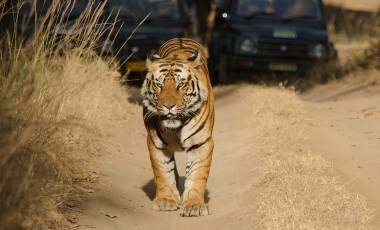
Safari in India: Meet the Royal Bengal Tiger
Discover the secrets of the wilderness on your safari in India! Tucked away in the national parks of Central India, there is a touch of magic in every jungle, as they unfold their treasures of flora and fauna, the simple living of local villagers and of course, the mysterious Royal Bengal Tiger! Meet the creators.
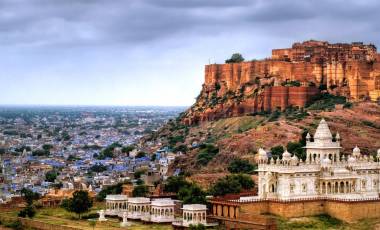
Top Must-see Forts on Your India Tour
These architectural wonders have featured in myriad documentaries, movies and photos, and remain the go-to destinations to include in your India travel plans!
Popular Trips to India
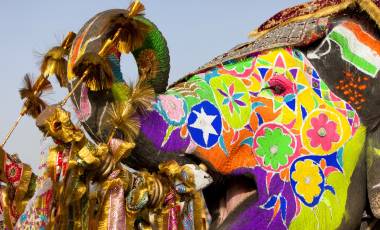
India's Golden Triangle and Varanasi
This customizable tour blends the historical and cultural exploration of Delhi, Agra and Jaipur, with the spiritual charms of Varanasi, one of the world’s oldest continually inhabited cities. Marvel at the colonial architecture of Lutyens’ Delhi and discover the charms of Old Delhi on a walking tour through its winding alleys. Enjoy a boat ride…
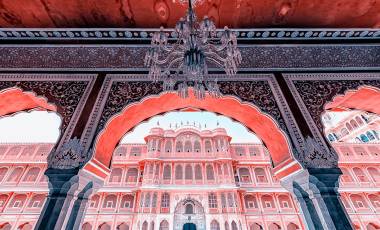
Highlights of North India and Kerala: Culture, Wildlife & Nature
Come be immersed in the sights and sounds of North India and then relax in the backwaters of Kerala. This 20-day tour takes you through the icons of Indian culture and history with stops at the Taj Mahal, Delhi’s Red Fort, Jaipur’s Palace of the Winds and Ranthambore Fort. Enjoy a float down the Ganges,…
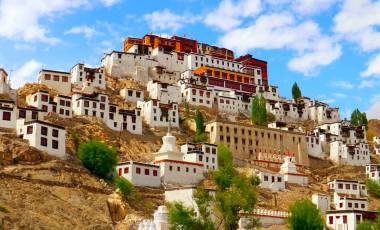
Highlights of Leh & Ladakh
The ideal tour for those who want to experience the best of this region’s incredible history, culture and beauty. Explore historic landmarks such as the 17th century Leh Palace and Hemis Monastery, and participate in the Morning Prayer rituals at Thiksey Monastery. Soak in the breathtaking landscapes of the Nubra Valley while in your luxury…
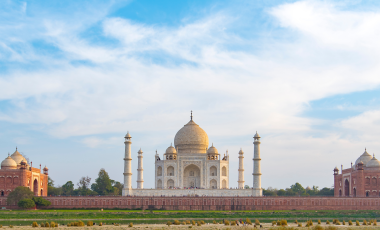
North India Highlights with Maharajas Express Train
Discover North India and parts of the country’s western coast on this immersive 13-day tour. The highlight is a three-day journey onboard the opulent Maharajas’ Express train, with stops at Agra, Fatehpur Sikri, Jaipur and Ranthambore. Take in the magnificence of forts, palaces and monuments across the region, and if you’re lucky, you might spot…
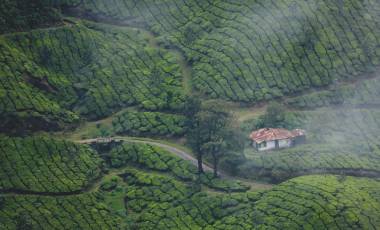
Kerala: Temples, Traditions and Beach
Journey into ‘God’s Own Country’ on this 14-day tour that is packed with exciting activities and diverse cultural experiences. Cochin, a bustling seaside city, is a melting pot of culture and cuisine. Learn about the city’s past as an important trading port and its Dutch, Portuguese and British influences. Head to the pleasant hill station…
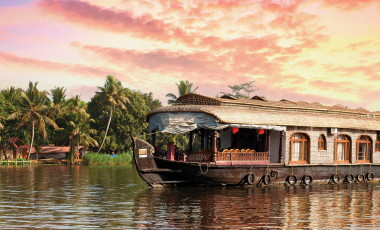
India: Karnataka's Heritage and Backwaters of Kerala
Experience the magic of India as you explore two of its Southern states – Karnataka and Kerala. Begin your journey at Bangalore, popularly known as the Silicon Valley of India, and visit its sprawling gardens, historical monuments, and interesting museums. Travel on to Hampi, a town with a landscape that is as fascinating as its…
Best Places To Visit
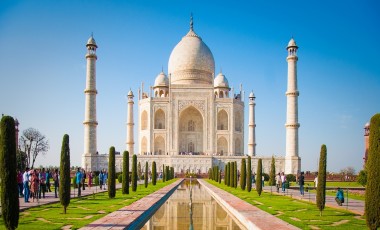
Discover the magic of white marble at Agra! The city is home to UNESCO World Heritage Site and one of the Seven Wonders of the World, the Taj Mahal.
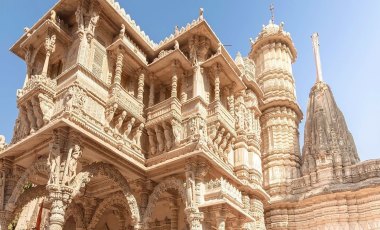
Ahmedabad: Manchester of the East! This historic center of Ahmedabad is a thriving business district on the Sabarmati river, founded by Sultan Ahmed Shah.
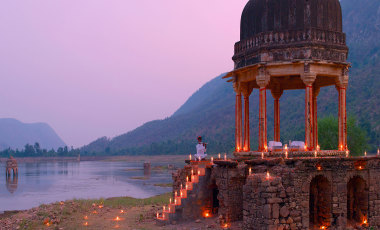
Ajabgarh is a picturesque garrison fort between Bhangarh and Pratapgarh, with a scenic nearby reservoir.
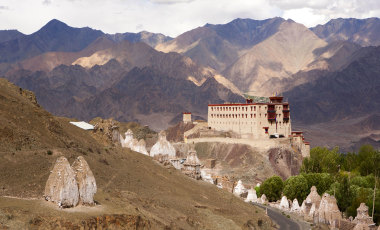
Alchi village lies in the Leh district of Ladakh in Jammu and Kashmir, situated on the left bank of the Indus River, 7 km downstream from the capital of Leh.
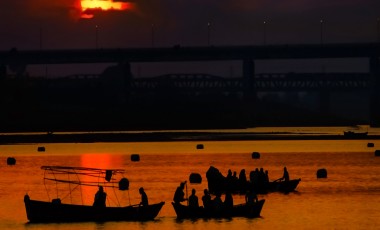
For decades, Allahabad has been the intellectual and cultural center of Uttar Pradesh in North India. Replete with wide tree-lined avenues, a century-old University, and famed High Court, this peaceful city stands by one of the subcontinent’s mightiest rivers – the Ganges.
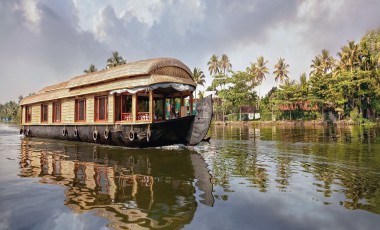
Alleppey was once dubbed the Venice of the East by the visiting former Viceroy of India, Lord Curzon.
Travel Guide
India’s vast size means that there are numerous weather patterns. As with the rest of Southeast Asia, the best time to visit for warm, dry and sunny weather is between October and March.
India is by and large a very safe country that will leave you mesmerized and mystified. However stimulated, inspired, awe-struck or overwhelmed you might feel while here, it is always important to remain alert.
The Enchanting Difference
Authentic & unique.
Our award-winning, licensed local guides provide incredible insights and exclusive experiences for you.
Personalized & Private
Our experts completely customize your private tour to match your interests and preferences.
High-Quality Experiences
All our accommodations and services are personally tested by our team.
Fully Supported Travel
You’ll have a personal and dedicated trip coordinator, backed by 24/7 support in case of emergencies while you’re traveling.
Financial Protection & Flexibility
Your booking is flexible and completely secure with us.
Safe & Secure
Your safety and well-being are our top priorities.
Do you have a vacation in mind? Personalize your itinerary with our Trip Builder.
Palace On Wheels
- Introduction
- General Information
- Terms and Conditions
- Spa and Lounge
- Dining and Bar
Maharajas Express
- Awards and Recognition
Golden Chariot
Deccan odyssey.
- Enquire now

Approved by Ministry of Tourism, Government of India
Best Time to Visit India - Weather Guide Month by Month
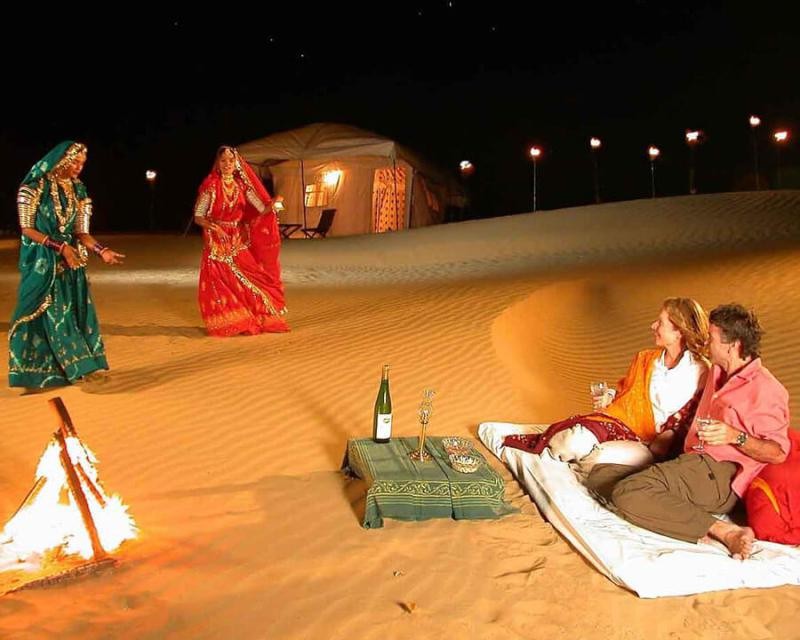
- 22 May 2023
- Share This:
India has a very distinct climate and the concept of seasons differ within its states as the terrain and the distance from the tropics vary. While the winters are mostly pleasant all around the country with moderate temperatures and low precipitation, it may get very chilly in some of the hill stations in the Himalayas and other prominent mountain ranges.
The summer months of April to May is the height of the summer season in the country, making it sweltering in most Indian cities, however offering some relative respite in the hill stations with milder temperature. The months of monsoon that is roughly June to September for most Indian states offers heavy rains in the entire country, making sightseeing an ordeal with traffic nightmares, water logging and landslides in the hills.
While the seasons each have their own lists of advantages and disadvantages the periods around the year that largely define holidaying season in the country are the great Indian festivals. Festivals in India are nothing shy of a carnival extravaganza with colorful decorations, lighting, interesting food around the streets , fireworks, and happy people thronging the places if interest in new vibrant clothing.

Summers - Off Season for Tourism in India
While in the northern hemisphere summers are the best times or outdoor activities, you fire up the grill for barbeque and dress in shorts to enjoy the sun. Indian summers are not so gentle in most places in the country. Thus, this makes it the low season for tourism in India and all the hotels , resorts and restaurants offer summer special discounted prices in the country. You can get star rated rooms that are climate controlled at budget prices and sightseeing can be done in air conditioned vehicles that are aplenty everywhere in the country available for hire.
However, once you step out during the day times, bear in mind that the temperatures can rise up to 45 to 47 degrees in Celsius in the plains. But a good place to tour in the burning summers of India is the hill stations where the weather is pleasant and you can sightseeing in comfort as temperatures do not touch above 35 degrees in Celsius at most.

Monsoons - Natural Beauty of India
While many complain about Indian monsoons with often heavy rainfalls that get along the way of having fun time outdoors, the monsoons in India can also be really beautiful. The rains are what makes India such a fertile country and if you are a nature lover who loves to witness the fresh greens around everywhere you look then this is the season to visit.
Hill stations are covered with thick clouds and mist and frequent showers, but the greenery around the hills turns into the freshest lime green color and the smell of the rains mixed with that of the water-fed greenery is food for the soul of every nature loving romantic.
Monsoons in India is the season that has forever inspired artists, poets and musicians to create their masterpieces with the beauty of the cloudy skies in grey contrasting with bright green of the trees. It is a unique experience that cannot be described if not witnessed firsthand. So, if you some hunger for adventure and don’t mind stepping on some puddles or getting wet then a visit to the country is most recommended during the monsoons. However, it is noteworthy that Indian monsoons can get very humid especially in between spells of showers, so light clothing and humidity controlled rooms are recommended. Overall, the temperatures remain moderate and pleasant with rainy breezes around the country.
Also Read : 15 Best Christmas Markets in the World

Winters - The King of all Seasons in India
In India, winter months start from late October to early March and it may vary from place to place. The temperatures range from 25 degrees to lower and get really cold in the mountain summits during the coldest months. Overall the temperatures remain pleasant around the country with some places needing light woolens and sweatshirts and the ocean sides not needing much winter preparations at all but offering cool and pleasant weather.
The northern states in the country get really cold while the southern states remain pleasant during the winter months. Thus, offering the best times to tour the country. Since, this is the peak tourist season places are mostly crowded during this time and accommodation and transport hike prices due to high demands. Advance bookings for most places are strongly recommended as most good places get booked 2-3 months prior to the arrival of people. Same is the case of flight and railway tickets or any other transport of choice.
When is the Best Season to Visit in India?
As mentioned above, winter is the peak season for tourism in the country. Thus, evidently most tourist spots along with accommodation are over booked and get really crowded. However, there are ways you can still enjoy a relaxing holiday in India in the best tourist season. India is home to 4 grand luxury trains that offer 5 Star accommodations, with planned itineraries, guided sightseeing tours in private vehicles, and royal treatment to the guests on board.
Simply hop on to one of the 4 luxury trains and let them take you to all the best sights in the country while you relax at your palatial cabin, with a butler and concierge ready to comfort you. The trains offer delectable cuisines prepared freshly on board by specially appointed award winning chefs and serve India, continental, and Chinese specialties.
Major Luxury trains in India are:
- Maharajas' Express - Luxury Train Travel in India
- India's Palace on Wheels
- Deccan Odyssey Luxury Train
A Glimpse of Indian Weather by the Months
The New Year in India begins with a beautiful season. The weather throughout the nation is cool and pleasant. Temperatures drop to a comfortable point, the smell of the dried leaves will surround the air. This is the driest month for most places in India as it hardly rains.
The northern states will have the lowest temperatures, while the Himalayas will have really cold nights. Delhi , Agra , Central Rajasthan , Southern states, Beaches and Coastal areas are the most popular places to be during this season. The temperatures range between 10 to 35 degrees, best for exploring the outdoors in comfort.
Plan your luxury trip in January via Maharajas' Express :
- Maharajas Express: 7N / 8D Mumbai to Delhi Departure
- Maharajas Express Train: 7N / 8D Delhi to Mumbai Route
- Maharajas Express: 4 Days Treasures of India
The excitement of the New Year's may simmer down but the sense of adventure still continues to this month. With various cultural and religious festivals taking place during this month, this can be an exciting time to visit India. While the temperatures start to rise slowly, they still remain at the comfortable range of 17 to 40 degrees in most places during the daytime and cooler at night.
It may get rainy in some Indian cities during February, like in Goa and Delhi among others. The weather remains warm in the plains but chilly atop the hill stations.
More details about Maharajas' Express:
- Maharajas Express Departure Dates
- Maharajas Express Fare
- Maharajas Express train route
- Maharajas Express general information
Have FAQ's in Mind: CLICK HERE
Must Read : How to Book Maharajas Express Train?
The Indian summer months arrive late March and can drag up to early June depending on the place of visit. Cities during this time begin to get hot, while hills remain pleasant. The spring is accompanied by the light southern breeze, which makes this weather unique and pleasant. The southern parts of the country are usually less crowded during this time of the year as they get hot during the day. Northern states are ideal for visit during Indian summers.
The best places to tour during this season are Kashmir, Ladakh, Ooty, Manali, Spiti Valley, Rishikesh, Darjeeling, Munnar, Goa, Auli, Uttarakhand, and Andaman and Nicobar Islands. These are mostly hill stations and seaside holiday spots where the weathers remain bearable.
By April the Indian summers begin. But the temperatures will begin to rise, precipitation will start to lower while humidity rises at its peak. However, in most places April marks the beginning of school so, the tourist spots are usually less crowded. It is best to travel to places of high altitude during this month. So, hill stations and the Himalayas will be at the top of the list. Some hill stations begin to receive a few spells of rain which can add to the beauty of the surroundings even more.
Also read : Trains from Mumbai to Bangalore
Plan your trip in April (Lean Season) via Palace on Wheels:
- Palace on Wheels itinerary
- Palace on Wheels tariff
- Palace on Wheels Schedule
- Palace on Wheels Route
The height of the Indian summer season! Cities will start to get very hot with temperatures soaring up to 45 degrees. Humidity will make things further uncomfortable. The southern states and central India are best avoided during this time. Hill stations around the country are at their peak popularity during this season. Some other popular destinations include, Varanasi, Kerala, Uttarakhand, Darjeeling and more.
By the mid of June, monsoons arrive in the southern states of the country and spreads across to cover the entirety by the end of July. Rains cool off the sweltering high temperatures and are coupled with moist monsoon breeze and thick grey clouds overcasting the days. Lush greenery wrap around the country and offer unique views of breath taking flora.
The monsoons are great for some Ayurvedic retreats in the southern parts of the country like, Kerala. Some other places of interest during the monsoons are Cherrapunji (the rainiest place on Earth), Rajasthan, Agra, Delhi, Lonavala, Darjeeling, Goa, Kodaikanal, Coorg, Kutch, and Orchha. The Periyar National Park in Thekkady, Kerala is yet another interesting place to visit during the monsoons famous for its boat rides. However, road travel in the hills is best avoided due to the risk of landslides.
Also Read: 10 Places to Visit in India in June
This is the wettest month of the year in most Indian places. Thick grey clouds wrap around cities and towns and he moist monsoon breeze accompanied with frequent unprecedented showers are the mark of this month. Sometimes incessant rains may cause disruption to travel plans and transport.
The greenery around hill stations and suburban areas are lush with the monsoon fed water and look vibrant against the grey background of dark clouds. Places like Kerala, Maharashtra , West Bengal and the hilly areas of the Himalayas and the north eastern cities receive very heavy rainfalls during this season. Honeymooning can be bliss during this month.
Heavy rains continue to riddle the transport and communication systems throughout the nation during this month. Outdoor explorations and day trips may get difficult especially in the higher altitude and coastal areas due to heavy showers. The risk of landslides in the hills due to rains makes road travel questionable to the hills during this time.
The best places to stick to travelling during this season are places like Rajasthan, Delhi, Agra, Varanasi , Lucknow , Gujarat , Hyderabad , and more. Temperatures will remain between 26 to 36 degrees in Celsius.
By this time the rains begin to recede and the autumn sunshine shows in most places in India . While the temperatures can still remain on the high side, nights get more pleasant. Few spells of rain here and there cool off the cities time to time as people around begin to prepare for festivities during this time of the year. Most of India celebrates various festivals late September to October which makes it an ideal month to visit the country.
This month has pleasant weathers with moderate temperatures, almost no rains except a few spells here and there. The blooming autumn flora around the cities and fresh flowers, colorful butterflies would begin to roam with blossom, as the rest of the country prepares for their biggest celebrations of the year.
Most places will celebrate Dussehra and Diwali during this month. This month has warm afternoons and cool evenings. The eastern states will be in preparation for Durga Puja , while the northern parts celebrate Navratra. The festival of lights – Diwali will light up homes and cities everywhere in India, by the end of October. This is one of the best months to visit India to witness some of its glorious holidays.
The winter months are the peak season for travel and tourism in India. City breaks, outdoor exploration and sightseeing become pleasant with favorable temperatures around the country. This is the best season to explore places like Rajasthan, Agra, Delhi, Goa, Kerala, Andaman and Nicobar Islands, West Bengal, Lakshadweep, Maharashtra, Punjab, Madhya Pradesh, Tamil Nadu and Odisha.
For those fond of snow and chilly winter fun a visit to the hills like Himachal Pradesh, Kashmir, Uttarakhand, Ladakh and the North Eastern states is recommended. Ladakh is ideal for trekking during this time, however, the routes close before the peak winter months for the safety of the travelers.
Plan your trip in November via Deccan Odyssey:
- Deccan Odyssey Train - 7N / 8D Delhi to Mumbai Departure
- Deccan Odyssey Mumbai to Mumbai Route - 7N / 8D Maharashtra Splendor
- Deccan Odyssey Mumbai to Delhi Route - 7N / 8D Indian Sojourn
Christmas joy and the peak of the winter season make December a busy month for tourism and travel around the country. Accommodation and travel tickets will be in high demand as most people choose to vacation during the chilly December holidays around Christmas, so pre-booking is highly recommended. High altitudes receive snow during this month, while most other places host fairs and festivals throughout this month. This is one of the best times to visit India , with all the fairs and happenings and the great weather.
More details about Deccan Odyssey:
- Deccan Odyssey train departure dates
- Deccan Odyssey train fare
- Deccan Odyssey train route
- Deccan Odyssey general Information
Apart from the monthly basis, if you would like to explore the country during its most popular festivals then we recommend planning holidays during Holi , Diwali, Dusshera, Navaratri, Christmas, Onam, and Ganesh Chaturthi to witness the eclectic side of the country during its largest festivals.
How to Book Luxury trains in India?
- Maharajas Express train online booking
- Palace on Wheels booking
- Deccan Odyssey booking
Further Read:
- 10 Interesting Tips for Booking Luxury Trains in India
- Top 20 Majestic Palaces and Forts in India
- Five Best Luxurious Tour Options in India
- A Guide to Luxury Train Tours in India
Recent Post
- Belmond British Pullman – England’s Most Luxurious Train
How to make train reservation in Indian Railways?
Christmas and new year celebration with maharajas express train, metro railway system in india - indian cities with metro services, top 10 most beautiful train ride in the world - scenic view by train, things that will surprise you on palace on wheels journey this year, most view post.
- How to Book Luggage in Indian Railways?
- Best Train from Mumbai to Goa
- Top 10 Places to Visit in South India
- Vande Bharat Express - Everything You Need to Know
- Difference Between Bullet Train and Normal Train
Follow & Connect
- Logout Login
- Adventure Holidays
- Weekend Getaways
- Driving Holidays
- Travel News
Exploring the coastal charms of Chennai: A guide to the best beaches
TRAVEL TRENDS , CHENNAI Created : Apr 25, 2024, 09:00 IST

Chennai, the vibrant capital city of Tamil Nadu, is renowned for its rich cultural heritage, bustling city life, and stunning coastline. Along its expansive shoreline, Chennai has a collection of beautiful beaches, each offering its own unique charm and allure. From serene stretches of golden sand to bustling waterfront promenades, these beaches provide an idyllic escape for locals and tourists alike. Here are some of the must-visit beaches in Chennai.
Marina Beach
As one of the longest urban beaches in the world, Marina Beach holds a special place in the hearts of Chennai's residents. Stretching for approximately 13 km along the Bay of Bengal, Marina Beach offers a picturesque backdrop of rolling waves and clear blue skies. Visitors can enjoy leisurely strolls along the promenade, indulge in local street food delicacies, or simply bask in the beauty of the sunset over the horizon.
Elliot's Beach (Besant Nagar Beach)
Located in the bustling neighbourhood of Besant Nagar, Elliot's Beach is a popular destination for both locals and tourists seeking a tranquil seaside retreat. This serene stretch of shoreline is adorned with palm-fringed promenades, inviting visitors to relax and unwind amid the gentle sea breeze. Elliot's Beach is also renowned for its vibrant food stalls and lively atmosphere, making it an ideal spot for a leisurely evening by the sea.
Covelong Beach (Kovalam Beach)
Situated approximately 40 km south of Chennai, Covelong Beach offers a serene escape from the city's hustle and bustle. This pristine stretch of coastline features soft sands, crystal-clear waters, and a tranquil ambiance, making it a favourite destination for beach enthusiasts and water sports aficionados alike. Visitors can indulge in activities such as surfing, swimming, or simply soaking up the sun while admiring the scenic beauty of the surroundings.
Thiruvanmiyur Beach
Nestled amid lush greenery and pristine sands, Thiruvanmiyur Beach offers a peaceful respite from the urban chaos of Chennai. This secluded stretch of shoreline is ideal for those seeking solitude and tranquillity, away from the crowds of popular tourist destinations. Visitors can enjoy leisurely walks along the shoreline, explore the nearby fishing villages, or simply immerse themselves in the serene beauty of nature.
VGP Golden Beach
Located along the scenic East Coast Road, Golden Beach is a popular recreational destination known for its pristine sands and lively ambiance. This family-friendly beach is home to a range of entertainment options, including amusement parks, water sports facilities, and beachside restaurants. Visitors can enjoy thrilling rides, indulge in delicious local cuisine, or simply relax and soak in the vibrant atmosphere of this bustling beach destination.
Neelankarai Beach
Tucked away from the tourist crowds, Neelankarai Beach offers a serene and secluded escape for those seeking solitude and natural beauty. This hidden gem boasts pristine sands, swaying palm trees, and breathtaking views of the azure waters of the Bay of Bengal. Visitors can enjoy leisurely walks along the shoreline, engage in meditation or yoga sessions, or simply unwind and rejuvenate amid the tranquil surroundings.
Visual Stories

10 most beautiful railway stations of India
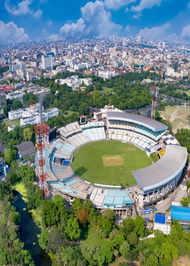
IPL 2024: History of cricket in Kolkata

Sri Lanka: Top 10 must-visit attractions

10 hottest destinations in India right now!

UNESCO World Heritage Sites in India that are like no other in the world

7 scenic hill stations to explore in the Eastern Ghats of India
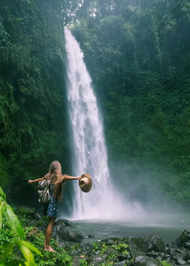
9 spectacular waterfalls in India that will leave you speechless!
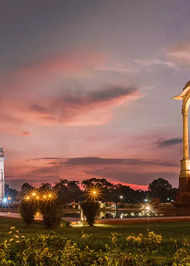
IPL match in Delhi is a good reason to visit these heritage sites
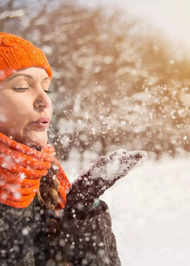
9 cheapest European countries for Indian tourists

7 countries with maximum tiger population
Join Us On Facebook Close
Poll of the day, which of these is one of earth's oldest geographical feature, comments (0).

Refrain from posting comments that are obscene, defamatory or inflammatory, and do not indulge in personal attacks, name calling or inciting hatred against any community. Help us delete comments that do not follow these guidelines by marking them offensive . Let's work together to keep the conversation civil.
Comments ( ) Sort: Newest UpVoted Oldest Discussed Down Voted closecomments

SIGN IN WITH
Or post without registration, trending stories.

No more 1 litre water bottles for passengers on Vande Bharat and Shatabdi trains

- Discovering Kargil’s mountains, culture and attractions

Best Indian destinations for a family holiday this summer

Tips for planning a memorable road trip

Kemmanagundi: A backpackers' haven in Chikmagalur, Karnataka

Exploring Pachmarhi: A stunning hill station in Madhya Pradesh

How to reach Leh-Ladakh? Tips to choose the right mode of travel

Malavika Mohanan's travel diaries give us some major inspiration for a vacation this summer!
From around the web, popular galleries.

Kailasa Temple: A monolithic marvel of Maharashtra

Follow us on
Latest news.
- Spain Unveiled: A Journey Through Madrid, Valencia, and País Vasco
- No more 1 litre water bottles for passengers on Vande Bharat and Shatabdi trains; says Indian Railways
- Scientists discover enormous fossil of the world’s 'largest snake’ in Kutch, Gujarat
- Solo travel adventures: Empowering journeys for independent explorers
Congratulations!
You have been successfully added to the mailing list of Times of India Travel. To complete the subscription process, kindly open your inbox and click on the confirmation link which has been emailed to you.
Share with friends
Thank You for sharing! Your friend will receive the article link on email mentioned.
- (For more than one recipient, type addresses separated by commas)
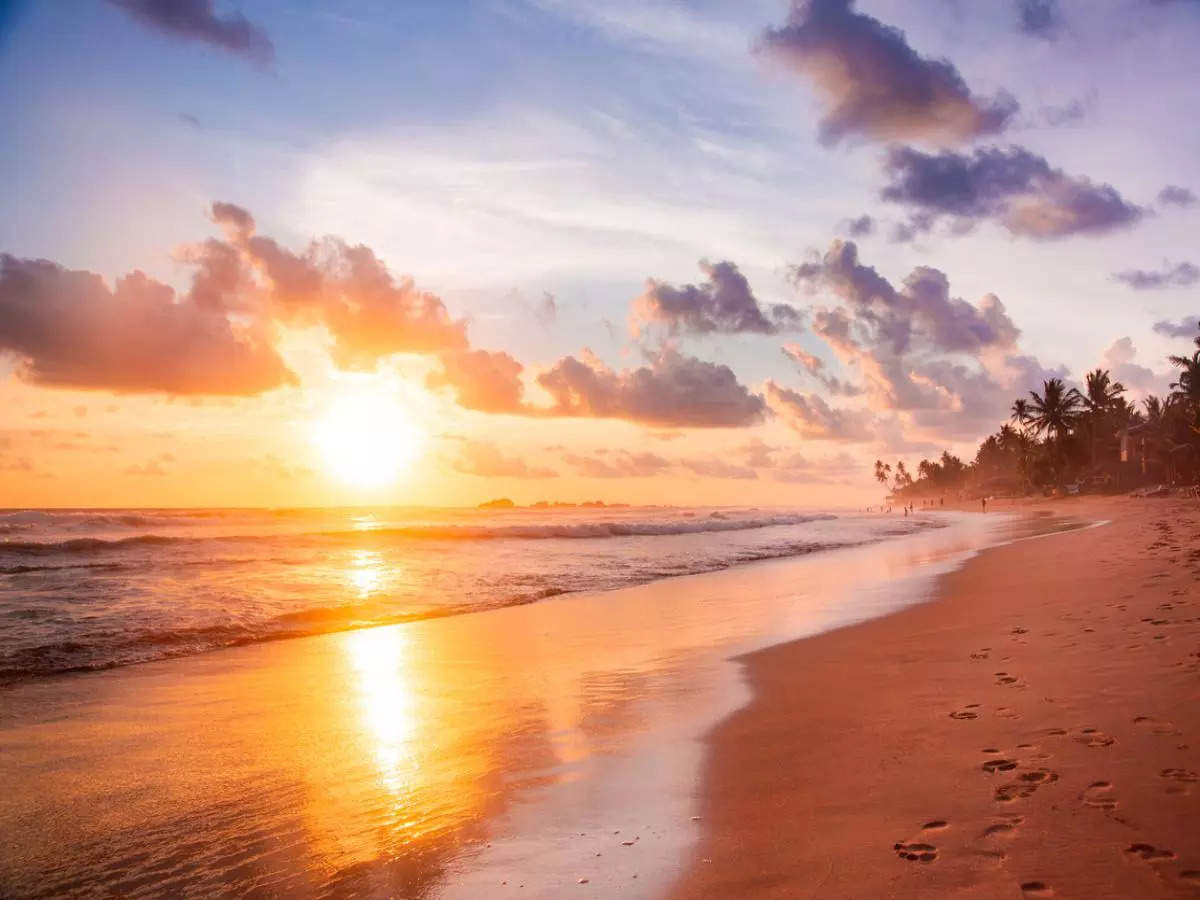
Chennai, the vibrant capital city of Tamil Nadu, is renowned for its rich cultural heritage, bustling city life, and stunning coastline. Along its expansive shoreline, Chennai has a collection of beau...

The 24 best ways to explore India in 2024
I t is as quick to fly east to Delhi as it is to go west to New York – and with a similar time difference – yet few of us think of India when choosing a winter sun break, a dose of culture or a shopping spree. But at last, all that is changing, as India’s vibrant colours, architectural marvels and luxurious spa hotels become Instagram hits and flight prices fall while connections to the UK increase.
Tourist numbers are picking up, too, with Covid-19 and last year’s visa issues – the result of the UK’s omission from India’s list of eVisa-eligible countries when applications were reopened after the pandemic – firmly in the past. Now, eVisas are once again easy to obtain and valid for up to five years.
And those who’ve not ventured east since 2019 will find plenty to look forward to. Many hotels favoured by British visitors used the pandemic to carry out major renovations, while many Indians started to explore new corners of their own country and loved what they saw, helping many hotels stay afloat.
Getting from place to place has become easier, too, with new dual carriageways, express trains and a swanky new airport – so travel is more direct, more comfortable and more practical than ever, with ticking off numerous big-hit attractions on a single trip no longer quite the delusional desire it once was.
Nevertheless India, like its masala chai, remains best drunk in small cups. Covering big distances to cherry-pick heritage highlights can induce fort-and-temple fatigue, so it’s far better to vary the pace with a tour that includes stopovers in small towns, wildlife sanctuaries or rural palace retreats between stays in the big cities.
Here are 24 holiday ideas that span the breadth of what India has to offer, combining the best of the new, and the most-loved of the old.
1. A classic escorted tour
The Golden Triangle of Delhi, Agra and Jaipur is the country’s biggest tourist draw, taking in the Taj Mahal, the recently repainted rose-pink city of Jaipur, and Raj-era Delhi. There are dozens of tour options but one of the best run – and best value – is Riviera Travel’s classic “India”, led by experienced tour managers and based on well-maintained three- and five-star hotels.
The 10-night itinerary with Riviera Travel also features tiger-viewing in Ranthambore and a heritage hotel in Shekhawati; from £1,949 including flights and most meals (01283 245322). It can also arrange extensions to Shimla in the Himalayan foothills, and to Mumbai and Goa.
2. Winter sun in style
Oberoi Hotels has won Best Hotel Group in the Telegraph Travel Awards three times, and its resorts in Agra, Jaipur and Udaipur provide luxurious bases for a winter sun holiday.
Oberoi Rajvilas in Jaipur, built to Oberoi’s exacting standards in the style of a traditional royal palace, is celebrating 25 years. If you can tear yourself away from the heated outdoor pool, set in 32 acres of manicured gardens, there are plenty of curated experiences: from a hot-air balloon safari to cookery demonstrations and Indian wine tastings at the hotel. Double rooms from £450.
Corinthian Travel (020 3583 6089) offers an eight-night “Luxury India with Oberoi Hotels” trip from £3,475 B&B in high season, with a chauffeured car, excluding flights.
3. India in slow motion
The traffic, crowds and hustle of Rajasthan’s big cities can deter first-time visitors. It’s better to start in the countryside and travel slowly to soak up the sounds, scents and vibrant colours of small-town India.
Wild Frontiers is renowned for its small group tours based on family-owned heritage properties. On its “Slow Motion” trip, you ride in open-sided jeeps from Udaipur, the most laid-back of Rajasthan’s big cities, to Castle Bijaipur, superb for walks and birdwatching, to Rudyard Kipling’s beloved Bundi. Wild Frontiers (020 8741 7390) offers both tailor-made and small group tours of the region; 14-night options priced from £3,495 include all meals, but exclude flights.
4. Slowly down the Ganges
The Assam Bengal Navigation (ABN) company pioneered river cruises on the River Ganges, mostly in the delta, sailing upstream from Kolkata to visit the handloom weaving communities along the Hooghly. Its traditional teak and brass riverboat, the stately Rajmahal, also cruises from Patna in Bihar, which was the birthplace of Buddhism.
There’s an open-air rooftop deck to enjoy the peaceful rural landscape from a steamer chair, preferably with cocktail in hand. Book direct with ABN , which has seven nights from £2,000 full board. Jules Verne Holidays (020 3553 6528) offers packages on Assam Bengal Navigation boats from £3,290 for 10 nights, including flights (with no single supplement on some sailings).
5. On safari in Rajasthan
The aromas, sounds and colours of India are best appreciated under canvas, and nobody does it better than Jaisal and Anjali Singh, whose family has long been involved in major habitat conservation projects in Rajasthan.
Their company, SUJÁN , operates three luxurious camps: SUJÁN Sher Bagh on the family’s private estate next to Ranthambore tiger reserve; SUJÁN The Serai in the desert close to the ancient walled city of Jaisalmer; and SUJÁN Jawai in leopard country where the company has successfully reintroduced native species and uses Rabari shepherds to lead walks and jeep rides through hill country.
Prices start from £700 a night, full board, based on two people sharing; Scott Dunn (020 3733 5441) can organise bespoke packages which include flights and transfers.
6. On the beach
Goan beaches are much more inviting than Kerala’s, and the climate is less humid. Head for south Goa where some of the area’s best resort hotels front an uncrowded strand of fine white sand.
The Taj Exotica, beside Benaulim beach, is a particular favourite with the British. Set in 56 acres, it has a spa, a children’s club and babysitting. A week costs from £2,099 B&B through Goa Experience (01489 866986) who can also book imaginative excursions including an overnight safari to a deserted beach.
Alternatively, for a top-end villa holiday, head for the Praya Villas , 14 newly built serviced villas, each with four bedrooms with ensuites, private pools and access to a beach bar and restaurant on Morjim Beach, one of Goa’s most unspoilt, where turtles come to hatch. From £885 per night with MAhout .
7. An Andaman Idyll
Cross the Bay of Bengal and discover Radhanagar Beach on Havelock Island, one of the world’s most beautiful. Reached through a virgin forest of precious hardwoods, the beach itself is blindingly white and the water so clear you can see tiny fish swim right past your feet while you paddle.
Best of all there are no sun loungers, food stands or water toys to blight the Robinson Crusoe feel. There are two places to stay, both with good eco-credentials: Barefoot at Havelock , a convivial lodge with tents and log cabins, and the luxurious Taj Exotica Andamans , which has an Olympic-sized pool and a resident naturalist. Selective Asia (01273 670001) offers a week at Barefoot at Havelock from £1,695 per person B&B, including two nights in Chennai; excluding flights.
8. A journey into the heart of India
To get away from the tourist trail, lovers of all things India increasingly head for Madhya Pradesh in the very centre of the country. Thankfully, the once-poor roads have improved in recent years, making travel by a combination of chauffeur-driven car and train a pleasurable experience.
Once visited only for its tiger reserves, the state now has so much more to offer than big cats, including the delightful riverside town of Orchha, the astonishing 3rd-century BC Buddhist stupas in Sanchi and, on the banks of the holy Narmada River, one of India’s finest palace hotels, Ahilya Fort, built by an 18th-century warrior queen.
Greaves Travel (020 7487 9111) can arrange a bespoke journey to suit your interests from Delhi to Maheshwar from £3,395 per person B&B, travelling by chauffeured cars.
9. Yoga on the peaks
Six Senses Vana in Dehradun is the place to head for a truly pampered wellness holiday, combining yoga classes with wellness treatments based on Ayurvedic and Tibetan practices. Beyond the estate, paths lead through Himalayan forests to viewpoints and the home of Welsh surveyor George Everest, after whom the peak was named. Ampersand (020 7819 9770) offers eight days at Six Senses Vana from £4,995 full board, excluding international flights.
10. A walk through village India
Pioneering community walking specialist Village Ways spent the pandemic upgrading its comfortable village guesthouses in the Kumaon mountains south of Nepal. Its village-to-village walks, led by a local guide, are tailored to your ability, from gentle strolls to more challenging hikes. There are magnificent Himalayan panoramas and homestays with plenty of opportunities to engage with local communities.
For 2024, it is introducing group holidays aimed at single travellers. The 14-night Complete Himalayan costs from £1,125 per person including all meals and guided walks (00 91 98690 05642).
11. Extreme motorcycling
For dedicated bikers, riding a Royal Enfield over some of the world’s most exhilarating mountain passes is the trip of a lifetime. British Bike Tours (07799 060630) can make the dream come true. It has been running its Indian Himalaya tour since 2006, heading out from Amritsar to the remote Spiti Valley and over the 15,000-foot Kunzum Pass to finish in Shimla. Trip leaders, including a medic, are British; the support team are local. The two-week trip costs £2,350 per person, half board, excluding flights.
12. A family adventure
There is so much to enthral children in India, especially in laidback Kerala. As well as the chance to see elephants in the wild in Periyar National Park, itineraries include floating along the backwaters on a houseboat and stays on farms growing spices, fruit and tea, before taking a local train to the seaside.
Families Worldwide (01962 302062) offers 11-night trips for small groups of parents and children (in school holiday periods) from £1,945 per person B&B, with some dinners; excluding flights. It can also arrange bespoke tours for individual families.
13. Luxury by rail
The views from Indian trains as they wind through timeless rural landscapes full of colour and incident are far more interesting than bowling down dual carriageways in a coach. To ride the rails in style, the elegant Maharajas’ Express is the way to go, its route taking in the erotic temple sculptures of Khajuraho and spiritual Varanasi as well as the Golden Triangle cities. Great Rail Journeys (01904 734154) offers a 15-night trip from £10,995, full board, including flights.
14. A floral paradise
In May, Sikkim in north-east India puts on one of the world’s best flower shows, with many of its 4,000 species bursting into bloom, including rare orchids, rhododendrons and alpines found in remote valleys close to the Tibetan plateau. Nature Trek (01962 733051) offers a 16-night trip, escorted by a botanical expert, taking in Sikkim, Darjeeling (reached by mountain railway) and Bengal for £3,995 per person, including all meals and flights.
15. India in the saddle
Horses feature large in Indian murals and miniature paintings, and the thrill of the chase can be recaptured on a rural ride across Rajasthan. Riding specialist Unicorn Trails (01767 600606) offers a choice of group and tailor-made itineraries for experienced riders, and non-riding companions can travel in a back-up vehicle (there’s no single supplement if you room-share). A week in the Aravallis costs from £1,845 per person, including most meals, excluding flights.
16. Combine north and south
Should you go north or south? TransIndus (020 8566 3739) avoids the issue with an escorted tour designed to give a taste of two very different Indias. After the highlights of Rajput and Mughal Delhi, Agra and Jaipur, fly to Mumbai and then south to Kerala, for a week exploring its backwaters, before flopping on the beach at Kovalam. The 13-night tour costs from £1,895 per person, excluding flights.
17. A culinary pilgrimage
Head to Mumbai – considered the food capital of India – and follow London-based chef and food historian Monisha Bharadwaj as she leads a six-day group tour showing the diversity of Indian cooking, from street stalls and markets to local restaurants and private members’ clubs.
Book through Far and Wild Travel (01768 603715) from £2,950 per person, full board, excluding flights. Alternatively, you can opt for its tailor-made 16-night foodie tour taking in Lucknow, Chennai, Kerala and Mumbai.
18. Excellence in textiles
Lovers of textiles and all things handmade should head for the state of Gujarat in western India. Ahmedabad’s Calico Museum of Textiles is one of the world’s best, showcasing exquisite fabrics, indigo block printing and embroidery that are still made today in villages around Bhuj.
Pettitts Travel (01892 515966) offers a 17-night Highlights of Gujarat tour that visits many craftworking villages and also takes in the Sun Temple at Modhera, Asiatic lions in Gir Forest, and World Heritage site Champaner. From £3,619 per person, with flights and some meals.
19. Tiger, tiger burning bright
To see a tiger up close in its natural habitat is a thrilling experience. India has more than 50 reserves, but three stand out. Ranthambore in Rajasthan has made quite a comeback: sightings are common, and this autumn nine tiger cubs have been born. At Bandhavgarh and Tadoba national parks, sightings are pretty much guaranteed if you stay three nights.
Wildlife Trails (01946 841495) arranges bespoke holidays to reserves all over India; nine days taking in Ranthambore, Agra and Delhi costs from £2,490 per person, excluding flights.
20. A trek among the Nomads
Ladakh, in the remote north-west, has wonderful high-level trekking, especially along the Nubra and Markha valleys, strongholds of Tibetan Buddhism where little has changed for centuries. This is walking for serious hillwalkers, and KE Adventure (017687 73966) has some of the best itineraries, a combination of hotels and camping, for groups of up to 16. A two-week trek along the Markha Valley costs from £2,545 per person, including all meals and flights.
21. The city that has it all
Kolkata, the “second city of Empire”, is often left out of itineraries, yet it’s packed with extraordinary sights, the legacy of both British and Bengali cultures. A week is hardly enough. Walking is the way to go, and Calcutta Walks (three-hour walks from £20, shared/£40, exclusive; 00 91 98301 84030) offers the best, employing historians, architects and actors to help travellers understand India and its history – while sampling some of the city’s street food. It also runs a delightful historic townhouse B&B, Calcutta Bungalow.
22. A Rajput and Mughal odyssey
Truly expert-led cultural tours of India are surprisingly thin on the ground. The best are offered by Martin Randall Travel (020 8742 3355) which has an Essential India tour led by Dr Giles Tillotson, who has written widely on its art and architecture.
The 13-night itinerary includes Varanasi, Khajuraho, Gwalior and the Golden Triangle cities, and costs from £7,150 per person, including meals, tipping and guides, excluding flights.
23. Cycling across India
Experienced riders can easily handle a coast-to-coast ride across southern India, from the old French enclave of Puducherry to the historic port of Kochi. Along the way are thousand-year-old temple towns and ascents through forests that cling to the Western Ghats before freewheeling down to the palm groves and backwaters of coastal Kerala.
A support vehicle will give you a lift if the pace gets too hard, and for an extra cost you can opt for an e-bike. Exodus (020 3131 6076) offers a 13-night escorted tour from £2,299 per person, including most meals, excluding flights.
24. Learn from the masters
Each February, master craftspeople come together to teach a series of immersive art and textile workshops hosted from Diggi Palace in Jaipur. The one-week courses range from indigo dyeing and textile transformation to embroidery and painting.
A particular highlight for 2024 is artist Andrew Logan’s Sparkling Surfaces, sourcing materials in Jaipur’s bazaars to create objets and jewellery that capture the spirit of India. Courses from £1,535. Emma Horne Travel (00 91 99118 74666) can arrange airport transfers and hotels.
Do you have plans to visit India in 2024? Let us know where you’re heading in the comments below
Sign up to the Front Page newsletter for free: Your essential guide to the day's agenda from The Telegraph - direct to your inbox seven days a week.

New Schengen Visa Rules for Indian Visitors: Key Questions Answered
Peden Doma Bhutia , Skift
April 23rd, 2024 at 5:39 AM EDT
Destinations value Indian travelers, but lengthy visa processing times lasting months act as significant deterrents. The adoption of these new regulations by European authorities reflects a proactive effort to tackle these concerns, aiming to boost tourism flow.
Peden Doma Bhutia
The European Commission has introduced a new visa “cascade” regime for Indian nationals applying for Schengen visas in India. This regime looks to offer longer-term, multi-entry Schengen visas, based on the applicant’s travel history.
Indian travel agents had been complaining of Schengen visa delays as a major challenge to the summer travel rush from India.
- How does one qualify for the longer duration visas?
The European Commission can issue a two-year multiple-entry visa after a traveler “has obtained and lawfully used two visas within the previous three years.” This demonstrates a positive travel history and compliance with previous visa regulations.
Subsequently, after granting the two-year visa, authorities may issue a five-year visa if the passport has has adequate validity remaining.
- What benefits do holders of these extended visas enjoy?
During the validity period of these visas, holders can enjoy travel rights equivalent to visa-free nationals within the Schengen area, allowing for short stays of up to 90 days within a 180-day period.
- Which countries are part of the Schengen area?
The Schengen area comprises 29 European countries, including 25 European Union member states: Belgium, Bulgaria, Croatia, Czech Republic, Denmark, Germany, Estonia, Greece, Spain, France, Italy, Latvia, Lithuania, Luxembourg, Hungary, Malta, Netherlands, Austria, Poland, Portugal, Romania, Slovenia, Slovakia, Finland, and Sweden. Additionally, Iceland, Liechtenstein, Norway, and Switzerland are also part of the Schengen area.
- Are there any restrictions or conditions to these visas?
Schengen visas do not grant the right to work within the Schengen area and are for short stays only. Additionally, the visas are not purpose-bound, providing flexibility for travel within the specified period.
Industry Take
Skift also spoke to players in the Indian outbound travel industry to understand what has changed in the new Schengen visa rules.
- How is this different from the earlier visas that Schengen countries offered? Don’t they already offer multi-entry visas with longer duration to Indians?
Mahendra Vakharia, managing director of Pathfinders Holidays, said there was no standard policy of Schengen states for issuing these long-term visas earlier. Switzerland, France, Netherlands, Italy and Spain usually issued long-term visa, but it was all subjective. “With this new policy it should be a standard rule now,” Vakharia said.
- Travelers mainly complain of longer processing times, has that changed?
Here too, there is no standard processing time as it varies from country to country, according to Vakharia. “France and Spain have been processing visas within four days, and then there’s Croatia, which takes 60 days,” he said.
Processing time will not change as of now, it will take time for the visa rules to be enforced, said an industry source, while highlighting that the visa would be especially useful for corporate travelers.
What Promoted The Move?
Speaking on the possible motivations, Vakharia acknowledged various reasons, including administrative capacity constraints at embassies to cater to the huge inflow of applications.
“As there is an overwhelming demand from Indian travelers, the process of securing visa appointments has posed significant challenges , especially for travelers residing in cities lacking VFS Global centers,” he said.
The European Commission said in an statement that the decision reflects the EU-India Common Agenda on Migration and Mobility, aimed at fostering comprehensive cooperation on migration policy. Facilitating people-to-people contacts is a key aspect of this agenda, acknowledging India’s importance as an EU partner.
The decision also reflects a realization of the strong economic benefits derived through the spending power of Indian tourists. As Vakharia aptly puts it, “Why let go of the Golden Indian Goodie Bag?”
Skift India Report
The Skift India Report is your go-to newsletter for all news related to travel, tourism, airlines, and hospitality in India.
Have a confidential tip for Skift? Get in touch
Tags: asia monthly , europe , european commission , European summer travel , european union , india , india outbound , schengen , visa , visas
Photo credit: Park Guell in Spain. Unlike many Schengen countries, Spain has been processing visas within four days for Indian travelers. Mehmet Turgut Kirkgoz / Pexels
Subscribe Now! Get features like

- Latest News
- Entertainment
- Real Estate
- Crick-it: Catch The Game
- Lok Sabha Election 2024 live
- Bengaluru Election 2024 Live
- UP Election 2024 Live
- Lok Sabha Election 2024
- Election Schedule 2024
- IPL 2024 Schedule
- IPL Points Table
- IPL Purple Cap
- IPL Orange Cap
- AP Board Results 2024
- The Interview
- Web Stories
- Virat Kohli
- Mumbai News
- Bengaluru News
- Daily Digest

Explore romance on budget: Top 5 affordable honeymoon destinations outside India
Embark on a dreamy honeymoon without breaking the bank. discover the top five affordable destinations outside india that promise unforgettable experiences..
Marriage is a beautiful commitment between two people, celebrated with rituals and festivities. A wedding is not complete without a honeymoon , an unforgettable and beautiful experience that strengthens your bond with your partner . The most cherished time to spend with the better half is a honeymoon, and sure, it must be the best experience that they witness. While the planning can be exciting, keeping the immersive experiences within budgets becomes a bit cumbersome. An economical luxury overseas experience is the best bet to maximize the quality time spent with the partner while also being light on the pockets. (Also read: Venice launches five-euro entry fee for day-trippers to ease the pressure of mass tourism )

Manoj Kumar Tiwari, General Manager, Regency Holidays, shared with HT Lifestyle the top 5 cost-effective international destinations where Indian travellers can plan their idyllic and energy-filled honeymoon.
Top 5 cheapest honeymoon destinations outside India
Middle-East remains among the top picks for the Indian honeymoon market, given its proximity and engaging excursions. Qatar, being the most sought-after country in the region, offers the ideal grounds for couples to explore the destination, which is filled with heritage marvels and modern amenities. Doha is known for its busy bazaars, museums, and locales to explore Middle Eastern cuisine and art; couples can venture into the golden deserts to witness the extravagance of the Inland Sea. Equipped with best-in-class water sports, calming beaches, and other luxury-laced activities to explore, tailored experiences make Qatar a top pick for honeymooners.
A popular South Asian destination frequented by Indian travellers, Bangkok – the capital of Thailand, showcases the country’s culture and adventure and is ideal for couples because of its vibrant nightlife, shopping centres, and more. With its ancient attractions like the Grand Palace, Wat Pho, and Wat Arun, couples can learn about Thai heritage and culture. The mouth-watering street food and rooftop diners, along with the option to even get on a romantic cruise on the Chao Phraya River, make it a top pick for honeymooners from India.
3. Sri Lanka
Given its strategic proximity to India, Sri Lanka is a go-to destination for Indians. Sri Lanka’s tourism products have evolved interestingly in the recent past, with quality hospitality and activities developing throughout the country. The island country is home to wildlife, rich heritage, calm beaches, and speciality restaurants promoting local cuisines to give a momentous experience for honeymooners. Some of the popular attractions in Sri Lanka are Udawalawe National Park, Adam’s Peak, Kandy, Negombo, Nuwara Eliya, Galle, Anuradhapura, Bentota, etc., to explore whale and dolphin watching, ancient dagobas, safari adventures, tea plantations, etc.
Yet another Middle-Eastern gem, Dubai remains a top pick for honeymooners for its luxe and extravagant experiences. The cosmopolitan city is lined with innumerable skyscrapers, home to man-made Palm Islands and serves as a shopper’s paradise with the world’s largest shopping mall. Couples can explore the city’s charm with the desert in the surroundings to experience varied activities like desert safari, camel rides, dune bashing, etc.; the luxury yachts in the marina can also be explored for best-in-class luxurious hospitality. Burj Khalifa Lake, Burj Al Arab, etc., are popular attractions which must not be missed by honeymooners.
5. Maldives
Honeymoongoers from India have it set in their minds that whenever it comes to spending the dreamy honeymoon, this island destination tops the list. The Maldives has ruled over the honeymoon market in India and the world over popularly for its bespoke hotels and resorts, seaplane experiences, clear waters, tranquillity, and, of course, the marine life and therapeutic water activities.
The destination has a range of attractive honeymoon packages to explore while being on a budget. Some popular locations in Maldives that couples can consider are Baa Atoll, Majeedhee Magu, Ari Atoll, etc. Malé, the capital city of the island destination, is popular for its local foods and museums, which couples can explore on a short haul before leaving for the trips to their respective island where they have their stay arranged.
Hence, experiencing peaceful beaches, breathtaking activities, stunning modern skylines, and global cuisines and packing a bunch of memories with the better half doesn’t demand to be an expensive affair. The dreamy budget honeymoon destinations are just a few clicks away!
- Destination
Join Hindustan Times
Create free account and unlock exciting features like.

- Terms of use
- Privacy policy
- Weather Today
- HT Newsletters
- Subscription
- Print Ad Rates
- Code of Ethics
- DC vs SRH Live Score
- India vs England
- T20 World Cup 2024 Schedule
- IPL Live Score
- IPL 2024 Auctions
- T20 World Cup 2024
- Cricket Teams
- Cricket Players
- ICC Rankings
- Cricket Schedule
- Other Cities
- Income Tax Calculator
- Budget 2024
- Petrol Prices
- Diesel Prices
- Silver Rate
- Relationships
- Art and Culture
- Taylor Swift: A Primer
- Telugu Cinema
- Tamil Cinema
- Board Exams
- Exam Results
- Competitive Exams
- BBA Colleges
- Engineering Colleges
- Medical Colleges
- BCA Colleges
- Medical Exams
- Engineering Exams
- Horoscope 2024
- Festive Calendar 2024
- Compatibility Calculator
- The Economist Articles
- Explainer Video
- On The Record
- Vikram Chandra Daily Wrap
- PBKS vs DC Live Score
- KKR vs SRH Live Score
- EPL 2023-24
- ISL 2023-24
- Asian Games 2023
- Public Health
- Economic Policy
- International Affairs
- Climate Change
- Gender Equality
- future tech
- Daily Sudoku
- Daily Crossword
- Daily Word Jumble
- HT Friday Finance
- Explore Hindustan Times
- Privacy Policy
- Terms of Use
- Subscription - Terms of Use
Tesla's Elon Musk postpones India trip, aims to visit this year
- Medium Text

Sign up here.
Reporting by Aditi and Shah Aditya Kalra; Editing by William Mallard
Our Standards: The Thomson Reuters Trust Principles. New Tab , opens new tab

Thomson Reuters
Aditya Kalra is the Company News Editor for Reuters in India, overseeing business coverage and reporting stories on some of the world's biggest companies. He joined Reuters in 2008 and has in recent years written stories on challenges and strategies of a wide array of companies -- from Amazon, Google and Walmart to Xiaomi, Starbucks and Reliance. He also extensively works on deeply-reported and investigative business stories.
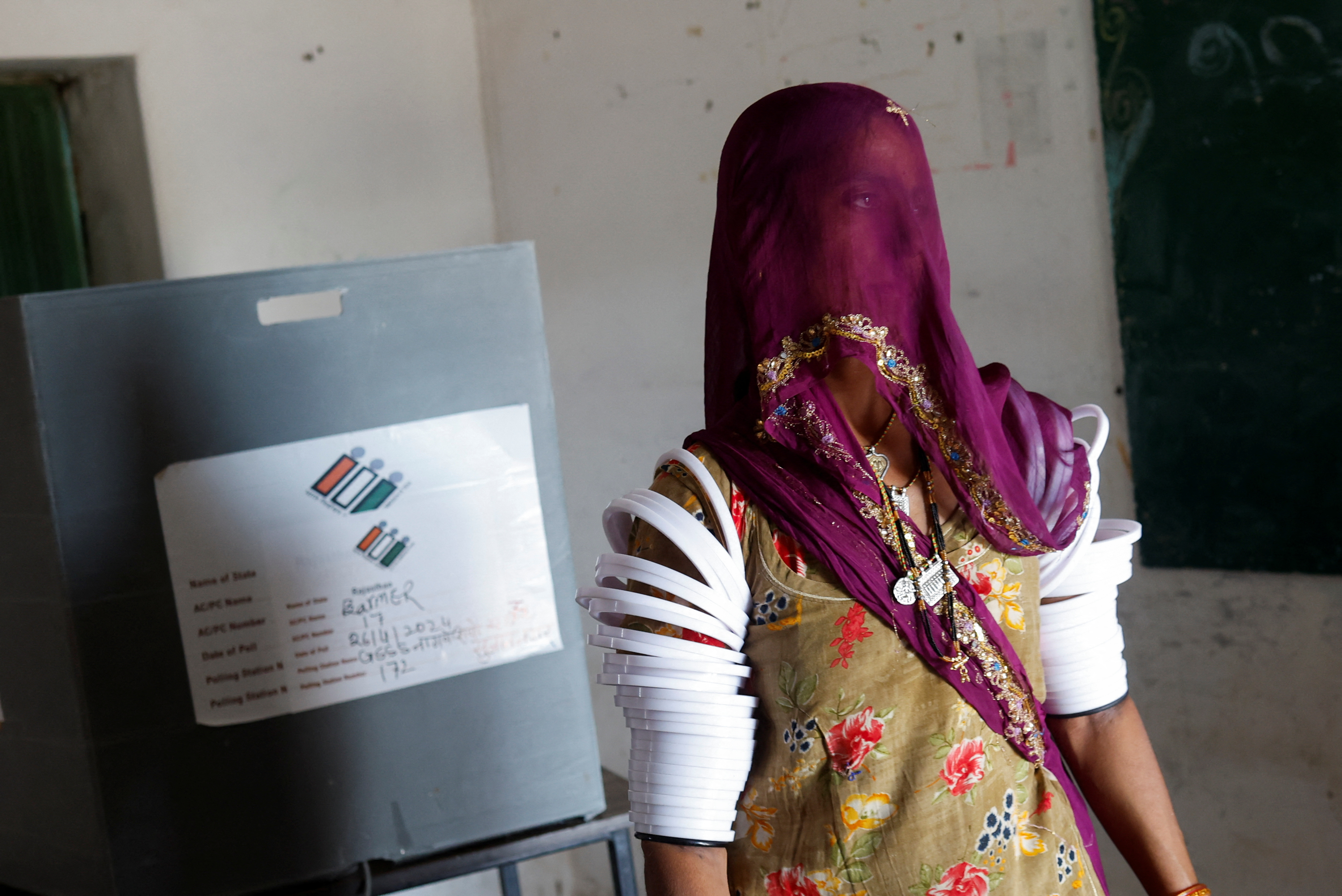
World Chevron

Arrest of Russian defence minister's deputy may be strike by rival 'clan'
Sergei Shoigu, Russia's defence minister, has tried to send a "business as usual" message since his deputy was arrested on a bribery charge. But the widening scandal looks bad for him too, and is seen as a push by a rival clan to dilute his power.

France and Germany agreed on Friday to move to the next phase of a project to jointly develop a battle tank by 2040, their defence ministers said, as they seek fresh impetus despite reservations and differences on each side.


COMMENTS
October and November are great times to visit almost everywhere else in India - prices remain below the peak, skies are clear and the trekking season gets underway in the foothills. This is also a great month to visit desert areas such as Rajasthan, which can be surprisingly green. India's shoulder season is the perfect time to head to the ...
Generally, the best time to visit India is from December to February, when it is warm during daytime and cool at night in most areas of India. December marks the beginning of the peak travel season with higher-priced accommodation and flights. It starts to get hot from March and the temperature reaches its average high point of 45°C (113°F ...
Best Times to Visit India for Lower Prices. Between mid-April and mid-September, India has its monsoon season, and temperatures soar up to nearly 110 degrees. If you are looking for travel deals ...
The best time to visit India is between November and February when the weather is mild and ideal for outdoor exploration. December offers the lowest hotel prices, making it a budget-friendly option. For those seeking fewer crowds, April is a pleasant and less busy month to experience India's diverse culture and attractions.
The best time to visit India's southern states is from November onward, once the monsoon has ended. Creating tailor-made tours for over 25 years Make an inquiry; Request a brochure; March is considered the best time of year to visit the wildlife parks of central India. However, if you can stand the increased heat in April the thinner ...
In general, the north of India is cooler, the center is hot and dry, and the south has a tropical climate. Indian weather itself is divided into three distinct seasons—winter, summer, and the monsoon. Generally, the best time to visit India is during the winter, when the weather in most places is relatively cool and pleasant. TripSavvy.
The best time to visit most of India is during the cool, dry season, between November and March. Delhi, Agra, Varanasi, Rajasthanand Madhya Pradeshare ideal at this time of year, and temperatures in Goa and central India remain comfortable. The heat of the south is never less than intense but it becomes stifling in May and June.
The climate is pleasant in October in most of the country. With the great weather, it is a good time to visit India. 2nd October is a national holiday in India as it is Mahatma Gandhi's birthday. Diwali, the festival of lights, also occurs in October or November, making it a peak season for travel in India.
December until early March tends to be the best time of year to visit India, but there's lots to consider, including the summer monsoon. Times Travel. Tuesday August 16 2022, 2.20pm, The Times ...
Best Time to Visit Western India. Winter (November to February): Winter is the best time to visit Western India, including popular destinations like Mumbai, Goa, and the desert state of Rajasthan. City Escapes: Enjoy mild temperatures and clear skies in Mumbai, exploring its vibrant street life, historical landmarks, and coastal attractions.
The best time to visit India is between October to March, weather-wise. However, this is such a large country that the climate varies considerably from region to region, with mild winters and roasting summers occurring thanks, in part, to the natural barrier of the Himalayas. Our month by month guide to India, as well as weather charts and ...
Best time to visit India. The best time to visit India is in the winter (December to early March). It tends to get very hot from April onwards, and most regions experience the summer monsoon from June to September. That being said, India is a huge country with diverse climatic regions, and there are incredible places to explore all year.
We've compiled this handy guide to hopefully help you to plan your dream trip to India for the experience of a lifetime. Best Time To Visit India - March to May, October to November. Best Time To Go To Mumbai - April to May, October to November. Best Time To Go To Goa - March to May, October. Best Time To Go To Rajasthan - November to ...
Weather is perfect this time of year in India to be enjoyable for warm weather travelers. The average high during this season is between 88.6°F (31.4°C) and 78.9°F (26.1°C). On average, it rains or snows a smalll amount: consistently 1 times per month. These times of year are the second busiest with tourists. Best Times to Travel › India
The best time to visit India is in the winter, from late November to early March. The weather is mild and sunny, with average temperatures ranging from 15-25 degrees Celsius (60-77 degrees Fahrenheit). This is a great time to visit tourist destinations like Agra, Jaipur, Delhi, Mumbai, Varanasi, and Udaipur. Don't miss out on this full ...
Ideal length 13 days. Take me there. India Journey Safari Wildlife. The best time to visit India is December through to March during the cool, dry season but keep in mind that India is a large country with a diverse climate and varied weather conditions. Find out our experts' India weather tips.
The best time to visit India is winter, from November to March, when most of the country - including the Taj Mahal, Mumbai and Varanasi - sees clear skies and pleasant daytime temperatures that tend not to exceed 25 °C (77 °F). That said, other months are ideal for different destinations and activities like tiger spotting, experiencing local festivals and trekking in the north.
The Worst Time to Visit Goa. For a good travel experience, June to August is best avoided, as these months see extremely heavy rain (0.5-1 meters of rain per month!) with less than 4 hours of sunshine per day and averaging 20 rainy days each month. Torrential rain storms are accompanied by strong winds. Many attractions like national parks and restaurants will close during this period.
The best time to visit India is between October and March however, since India has a diverse topography every region can be visited during different seasons of the year. October to March majorly covers the winters and beginning of summers. The summer months of April to June are typically sweltering and should be avoided.
The best time to visit North India is from October to March. The temperatures vary widely between the plains of the north and the deserts of Rajasthan. Generally, the temperatures in the main season are consistently pleasant, it is dry and often up to 34°C hot. In the winter, however, it can cool down to around 0°C, especially in the evening.
The temperatures range between 10 to 35 degrees, best for exploring the outdoors in comfort. Plan your luxury trip in January via Maharajas' Express: Maharajas Express: 7N / 8D Mumbai to Delhi Departure. Maharajas Express Train: 7N / 8D Delhi to Mumbai Route. Maharajas Express: 4 Days Treasures of India.
TRAVEL TRENDS, CHENNAI Created : Apr 25, 2024, 09:00 IST Exploring the coastal charms of Chennai: A guide to the best beaches Chennai, the vibrant capital city of Tamil Nadu, is renowned for its ...
2. Winter sun in style. Oberoi Hotels has won Best Hotel Group in the Telegraph Travel Awards three times, and its resorts in Agra, Jaipur and Udaipur provide luxurious bases for a winter sun holiday.
Destinations value Indian travelers, but lengthy visa processing times lasting months act as significant deterrents. The adoption of these new regulations by European authorities reflects a ...
Top 5 cheapest honeymoon destinations outside India 1. Qatar. Middle-East remains among the top picks for the Indian honeymoon market, given its proximity and engaging excursions.
Elon Musk postponed a planned trip to India where he was to meet Prime Minister Narendra Modi, citing obligations at his Tesla automaker and saying he aimed to reschedule the visit for later this ...